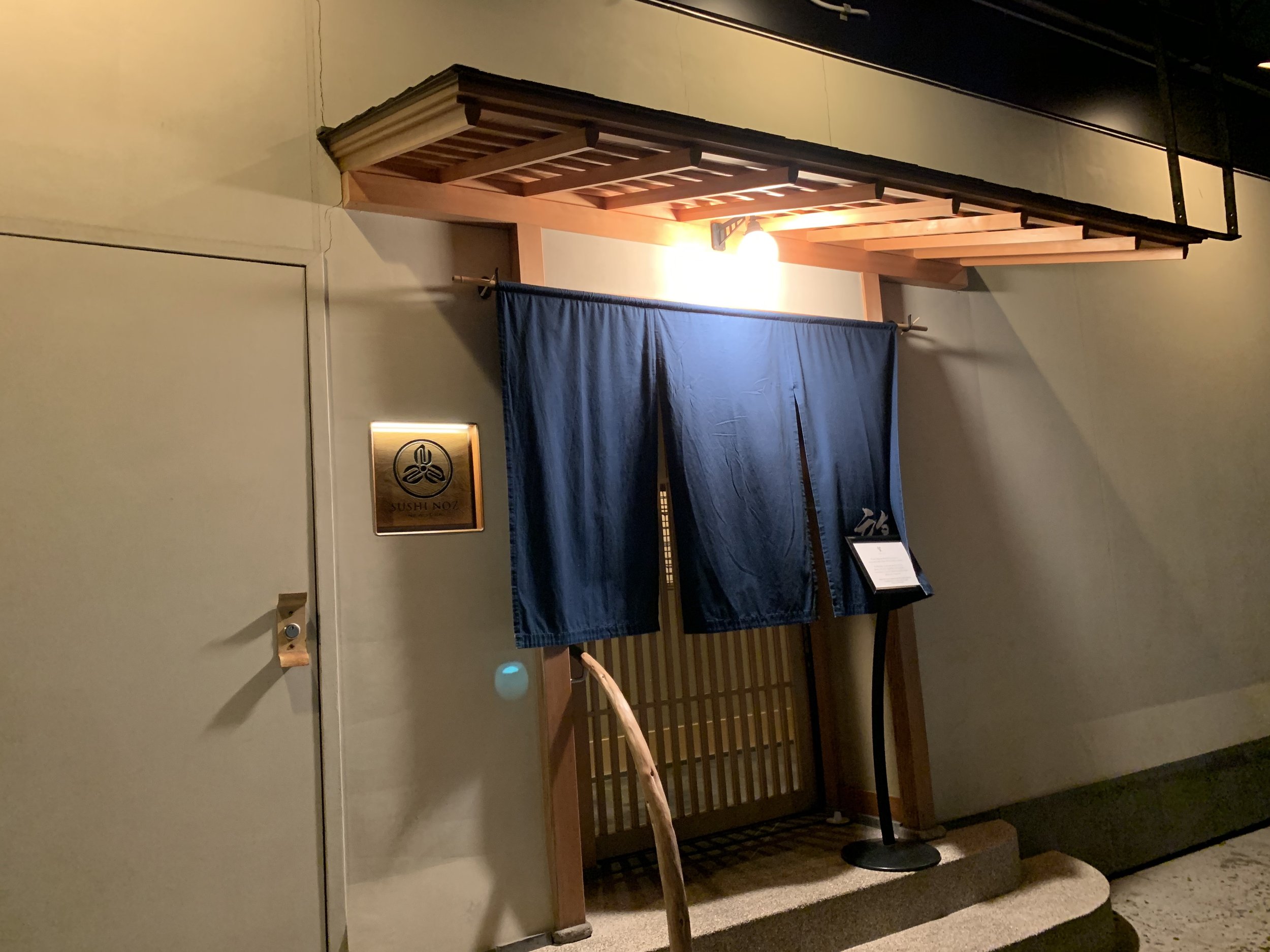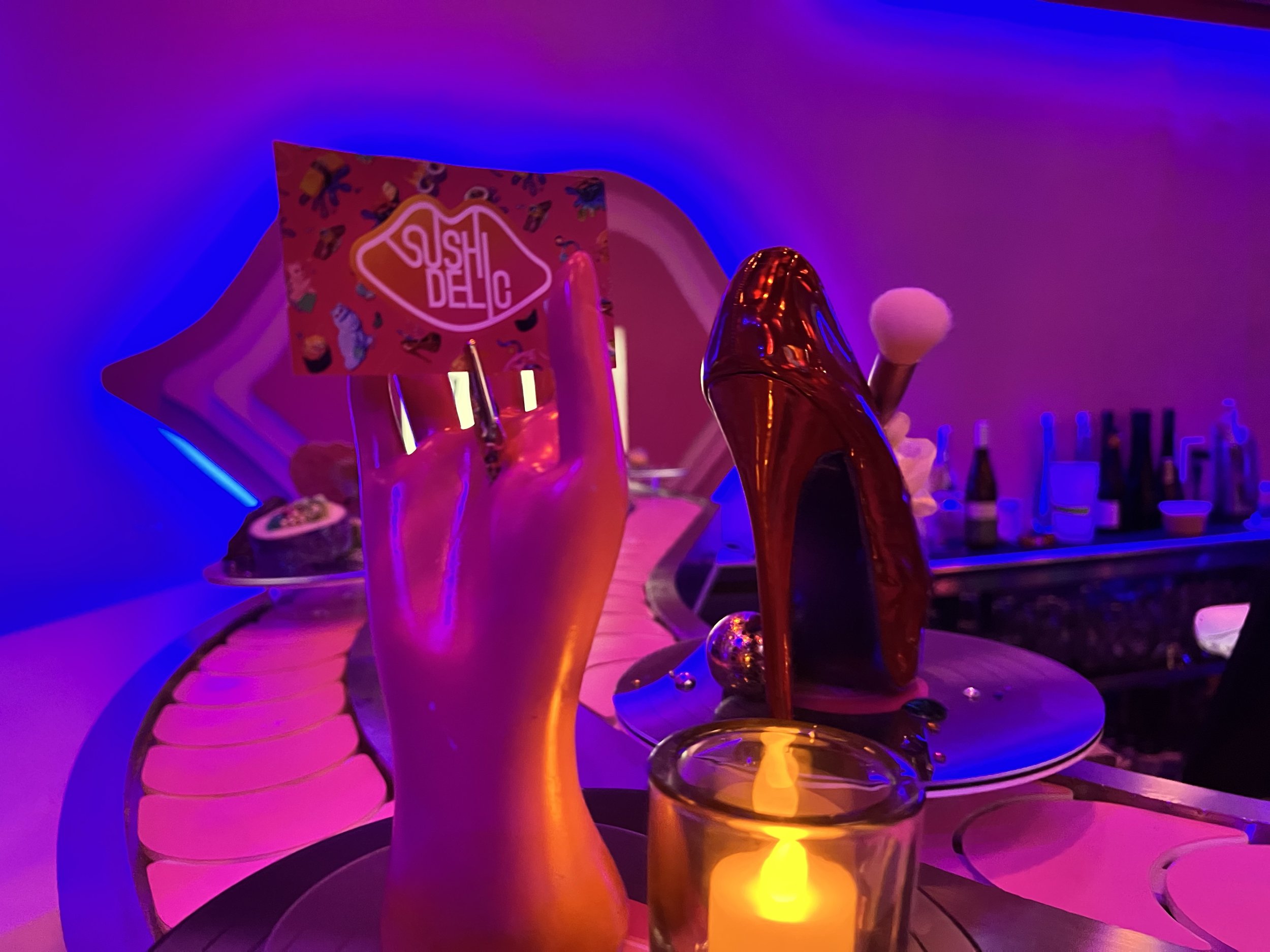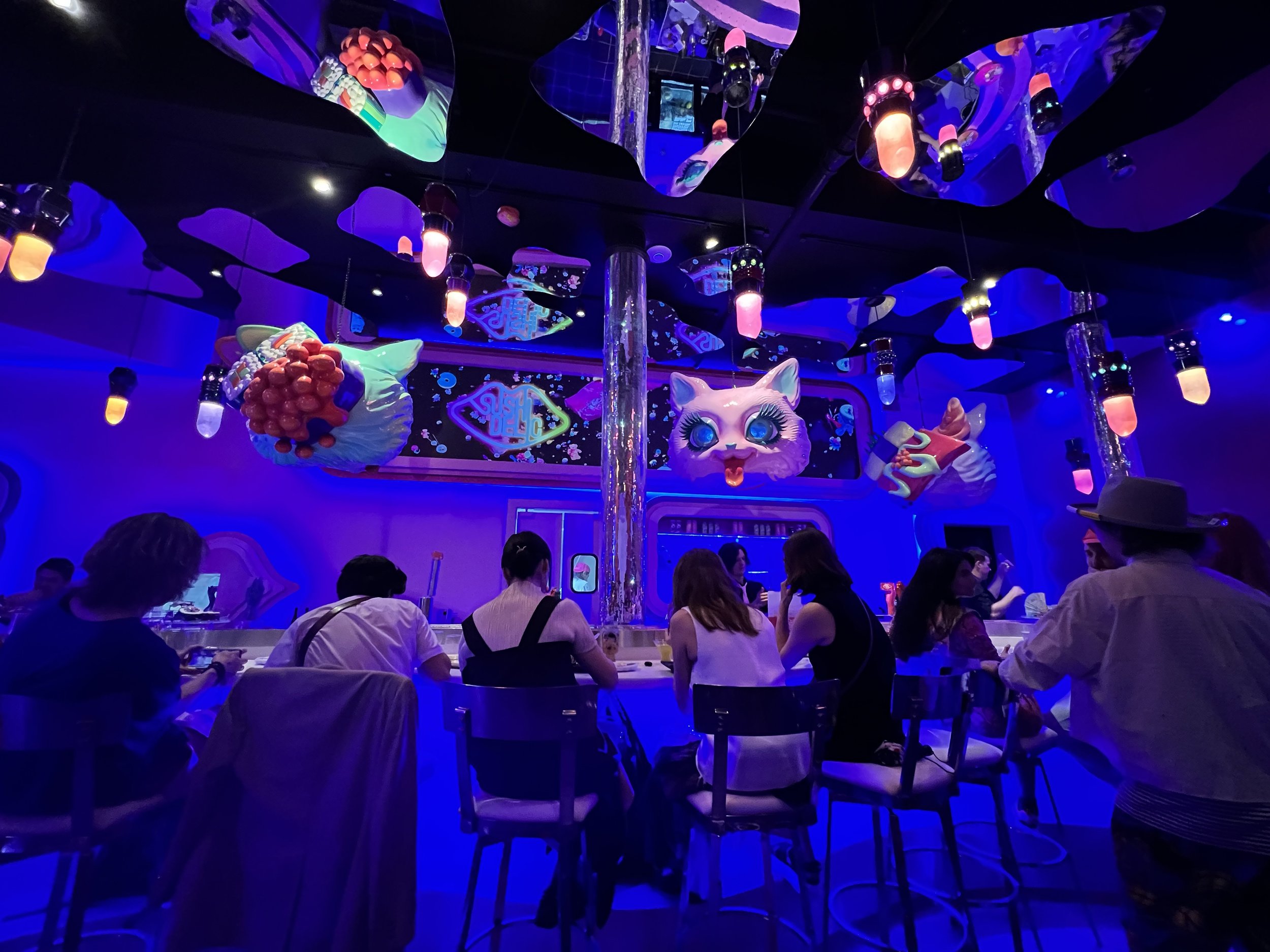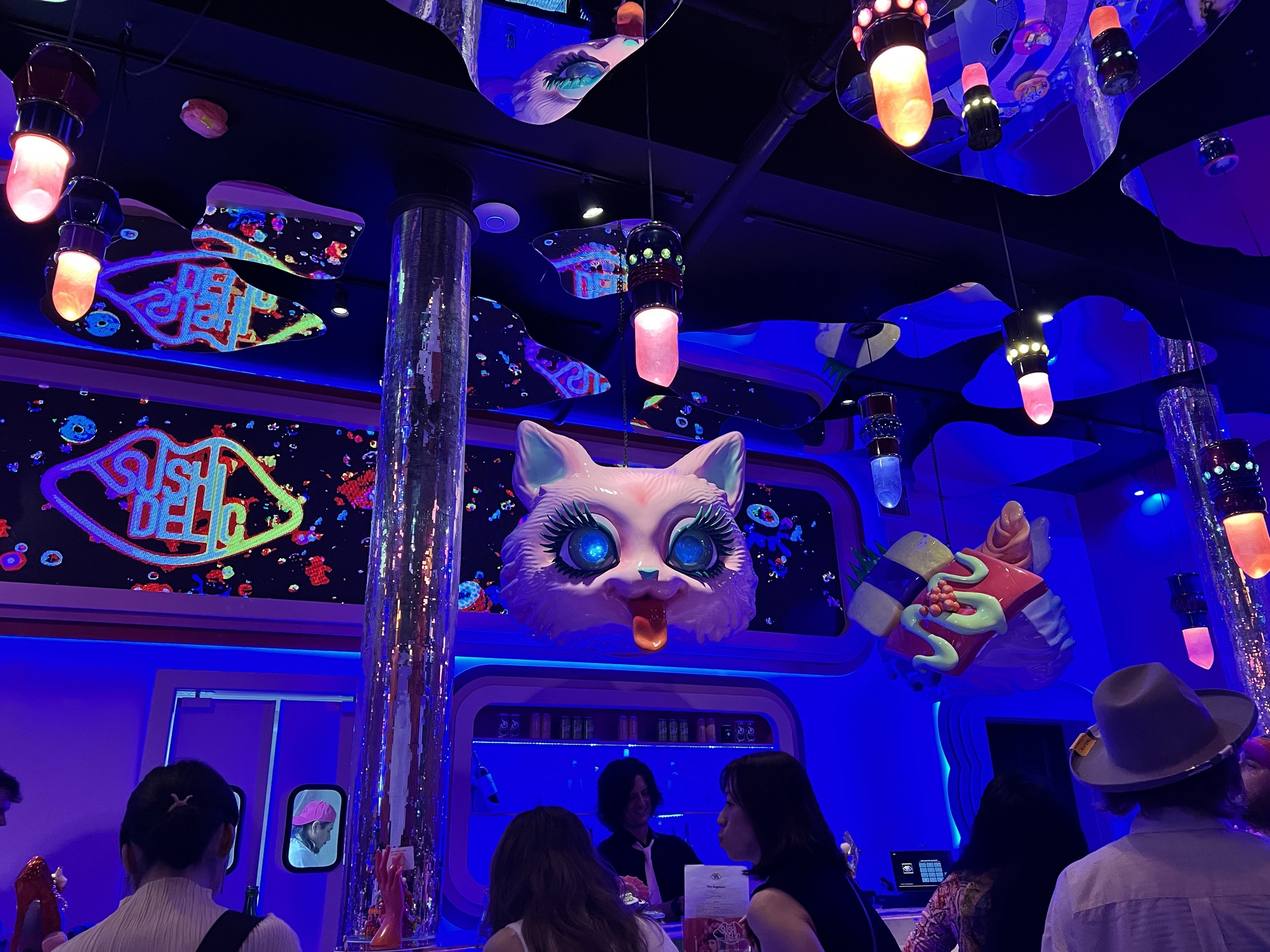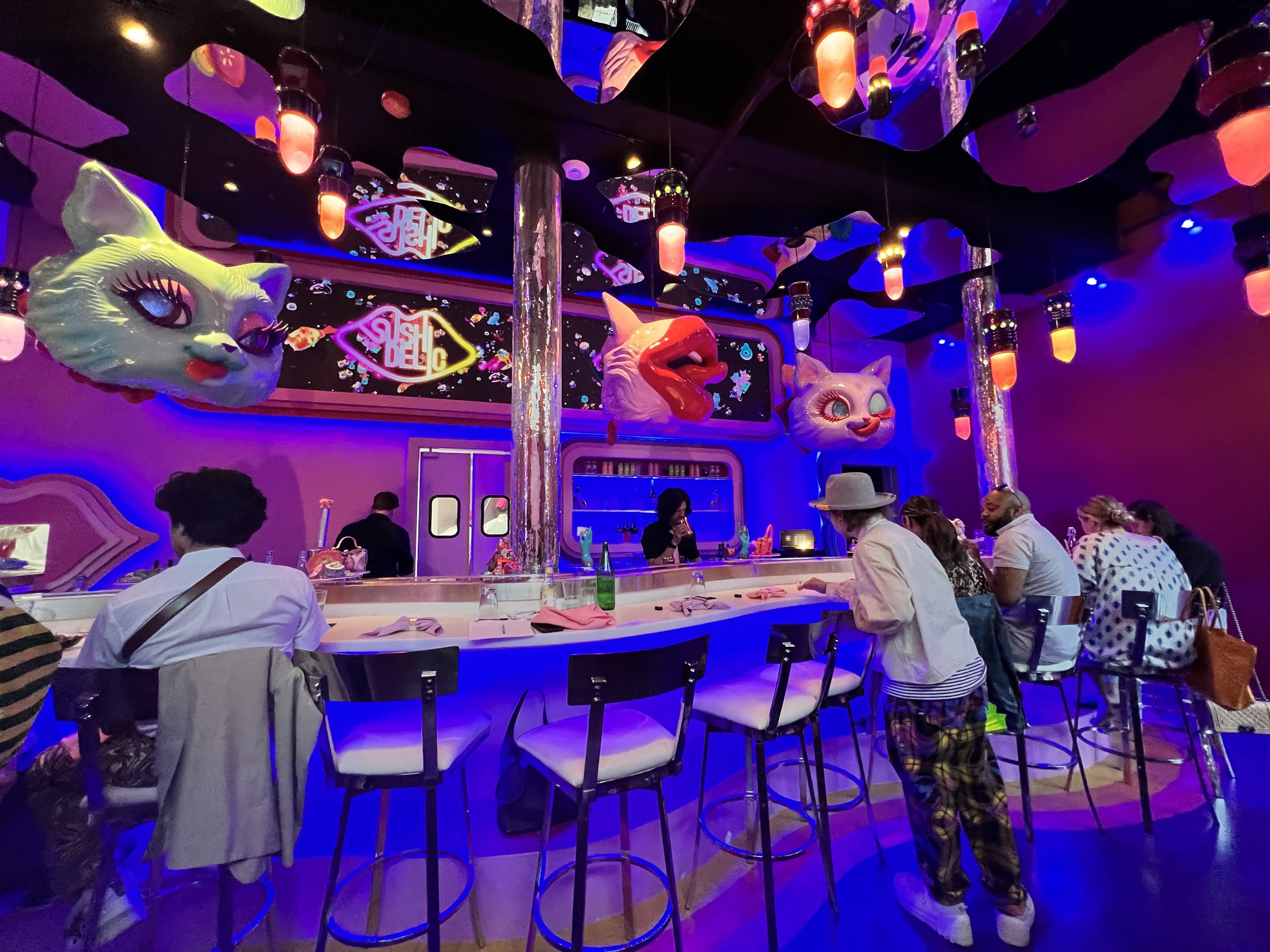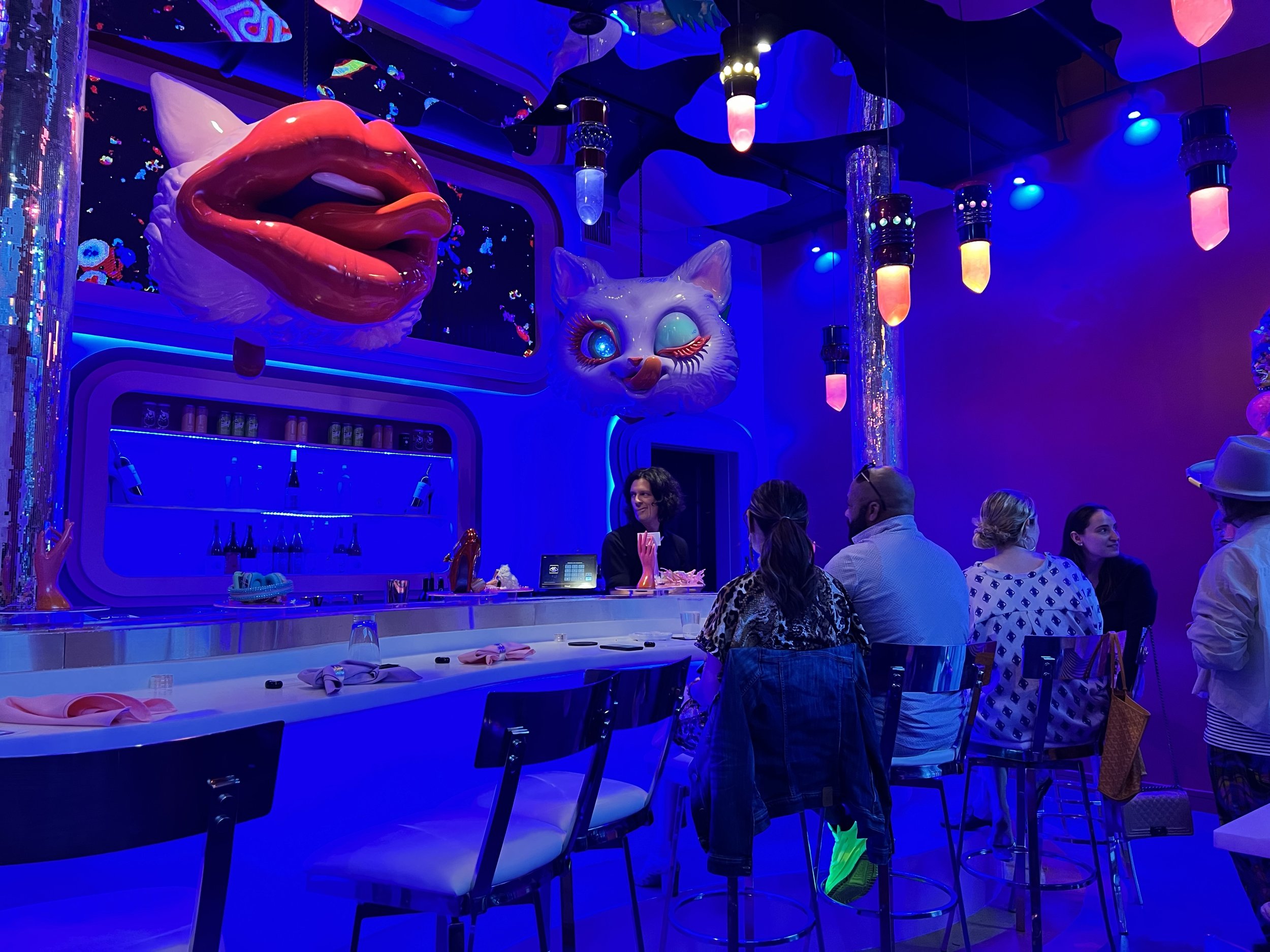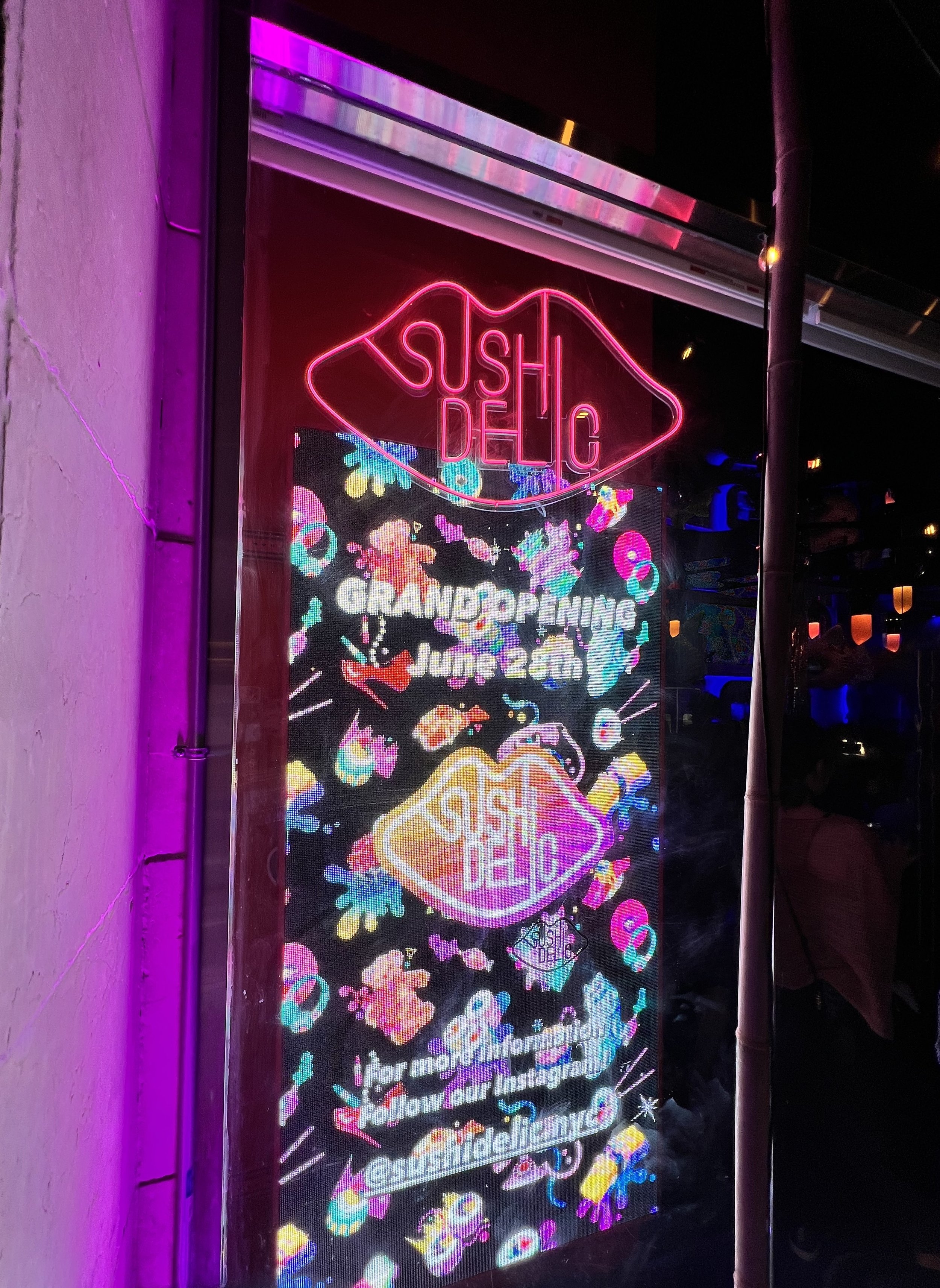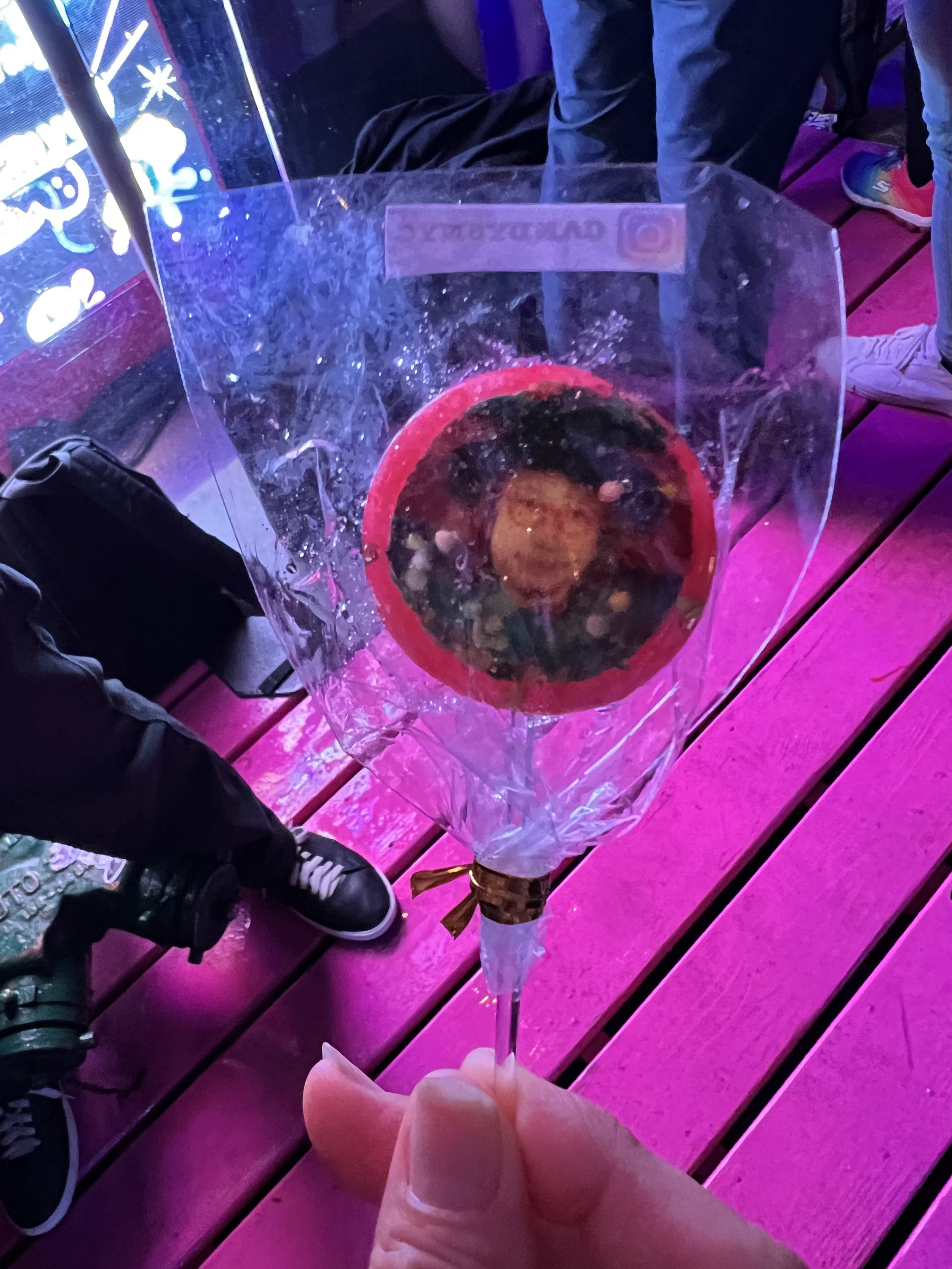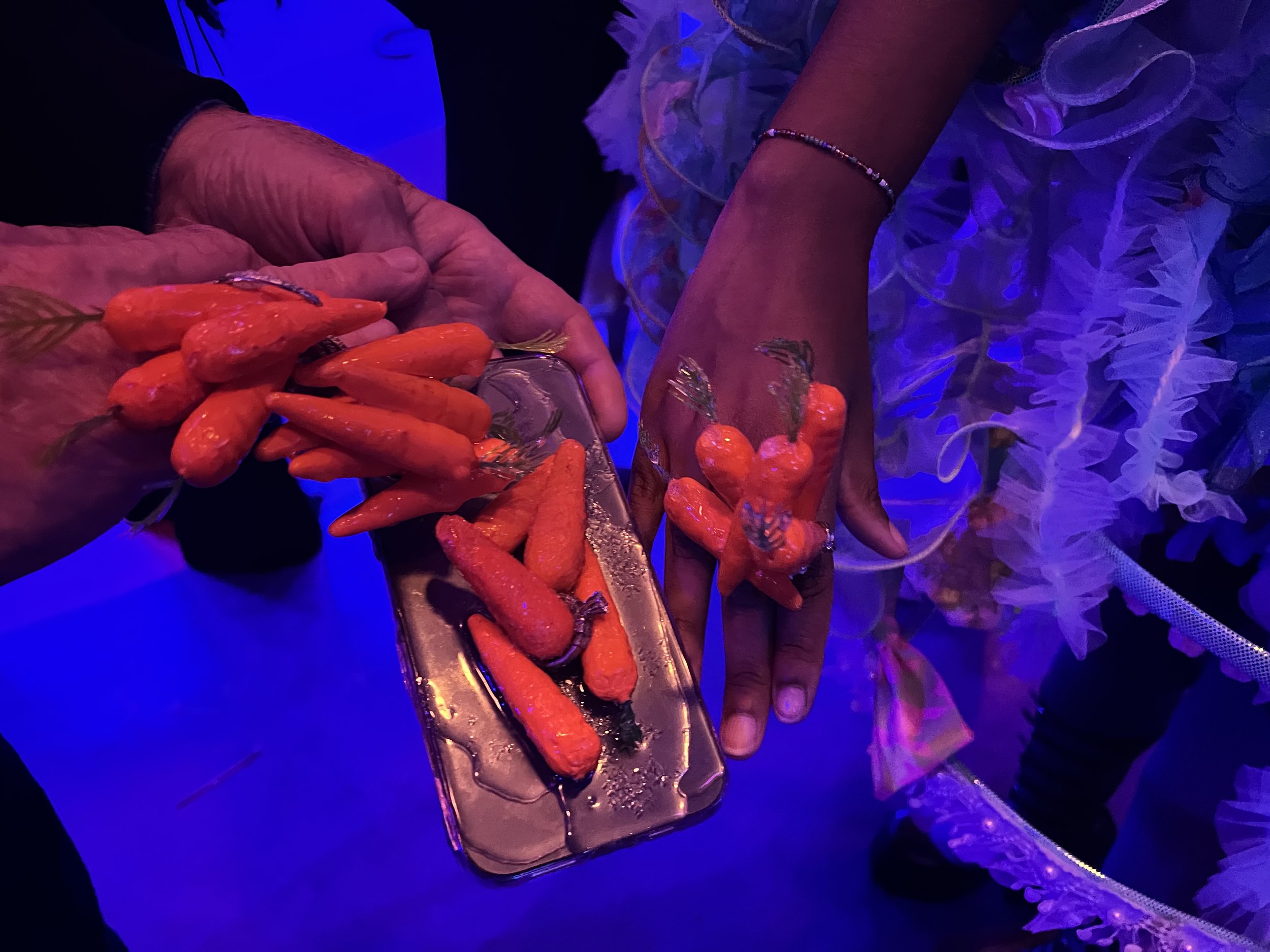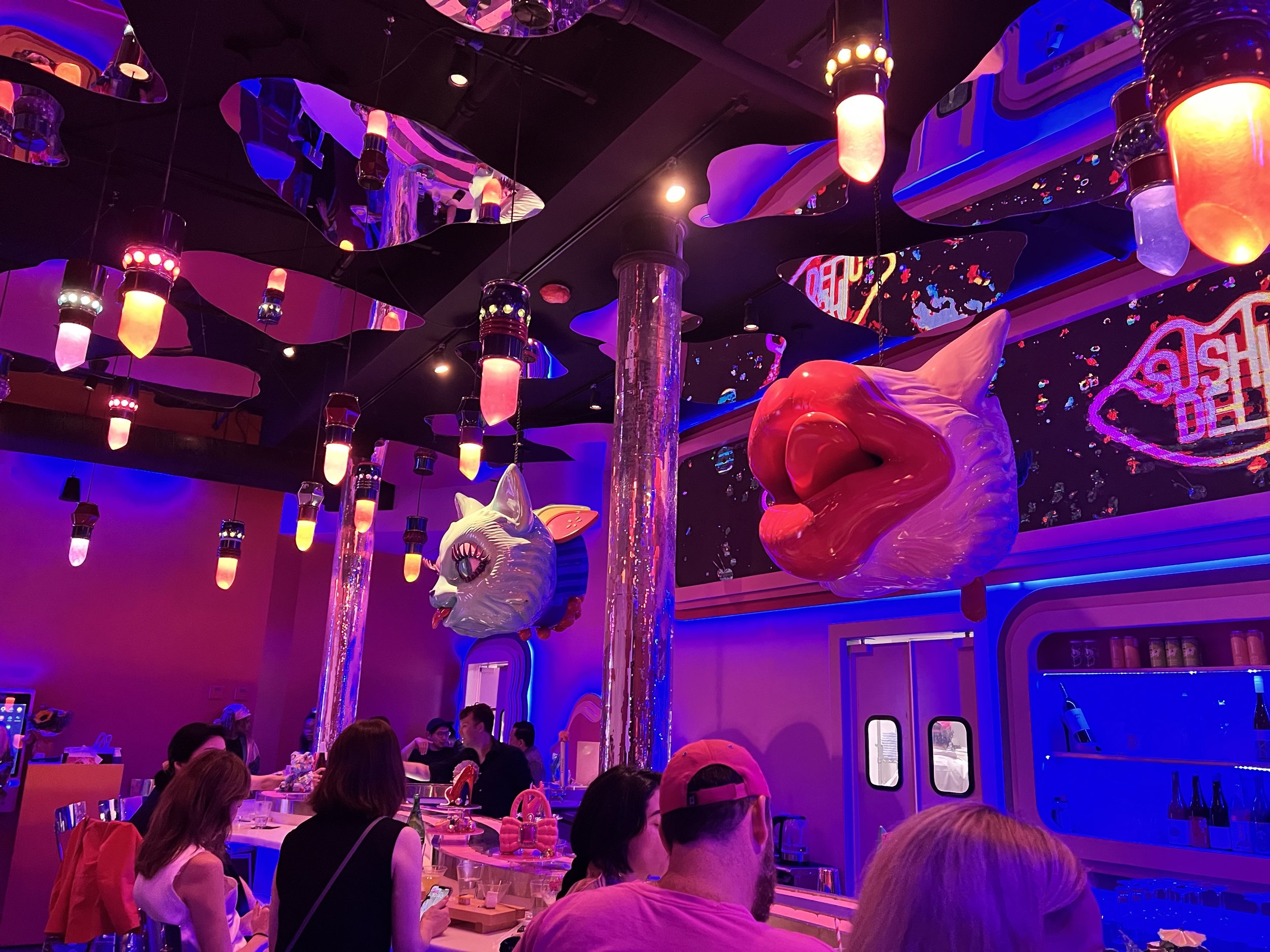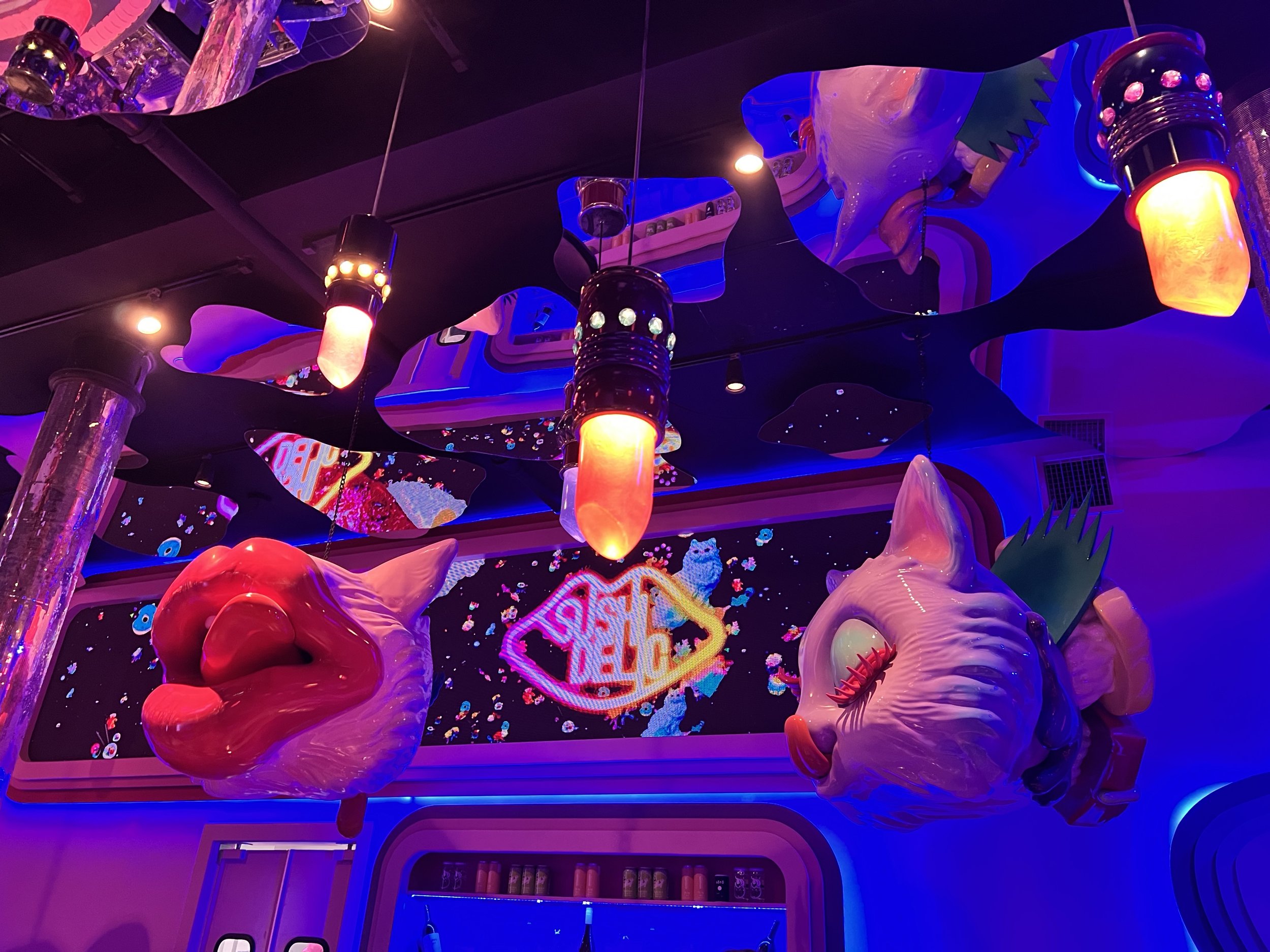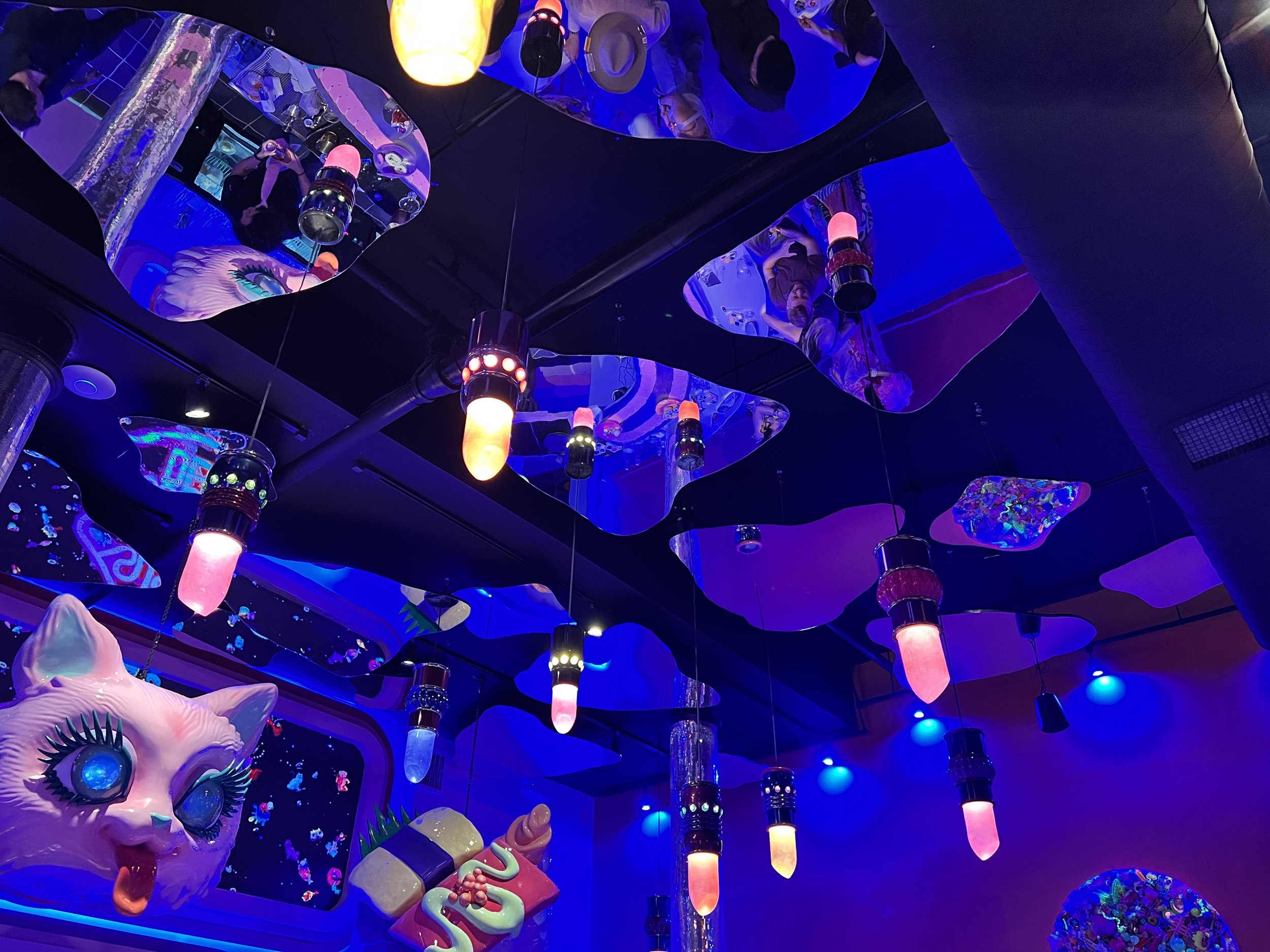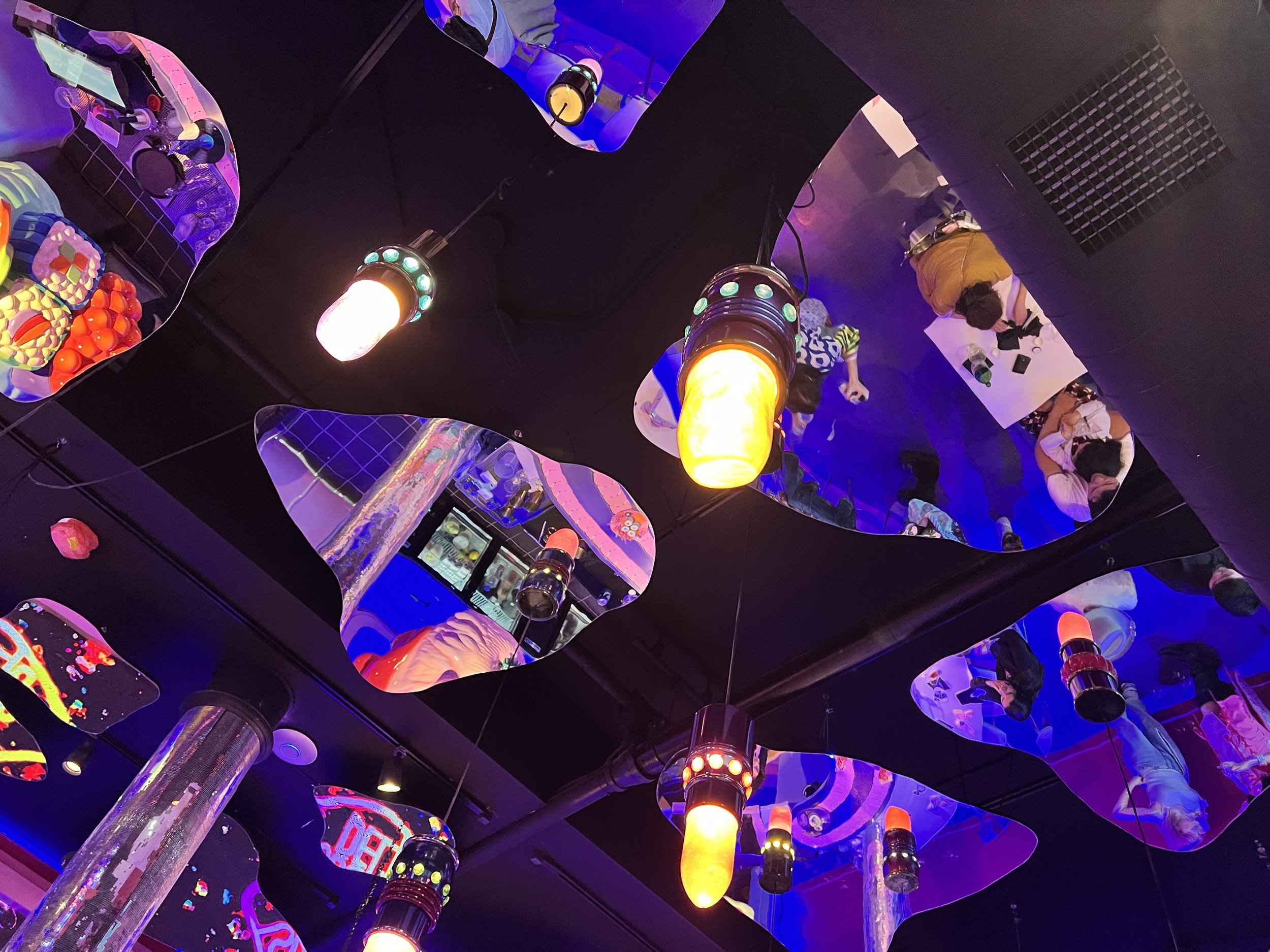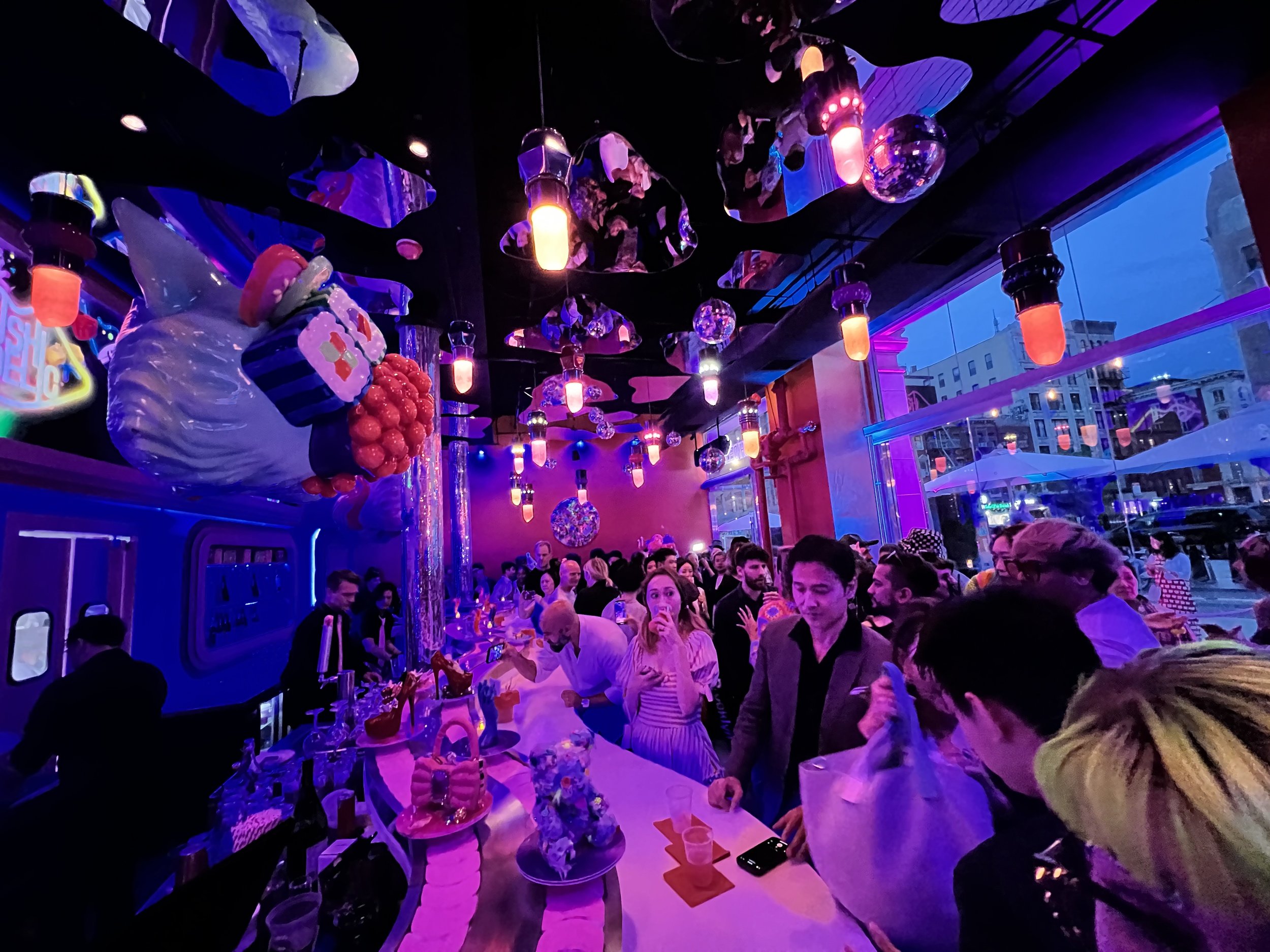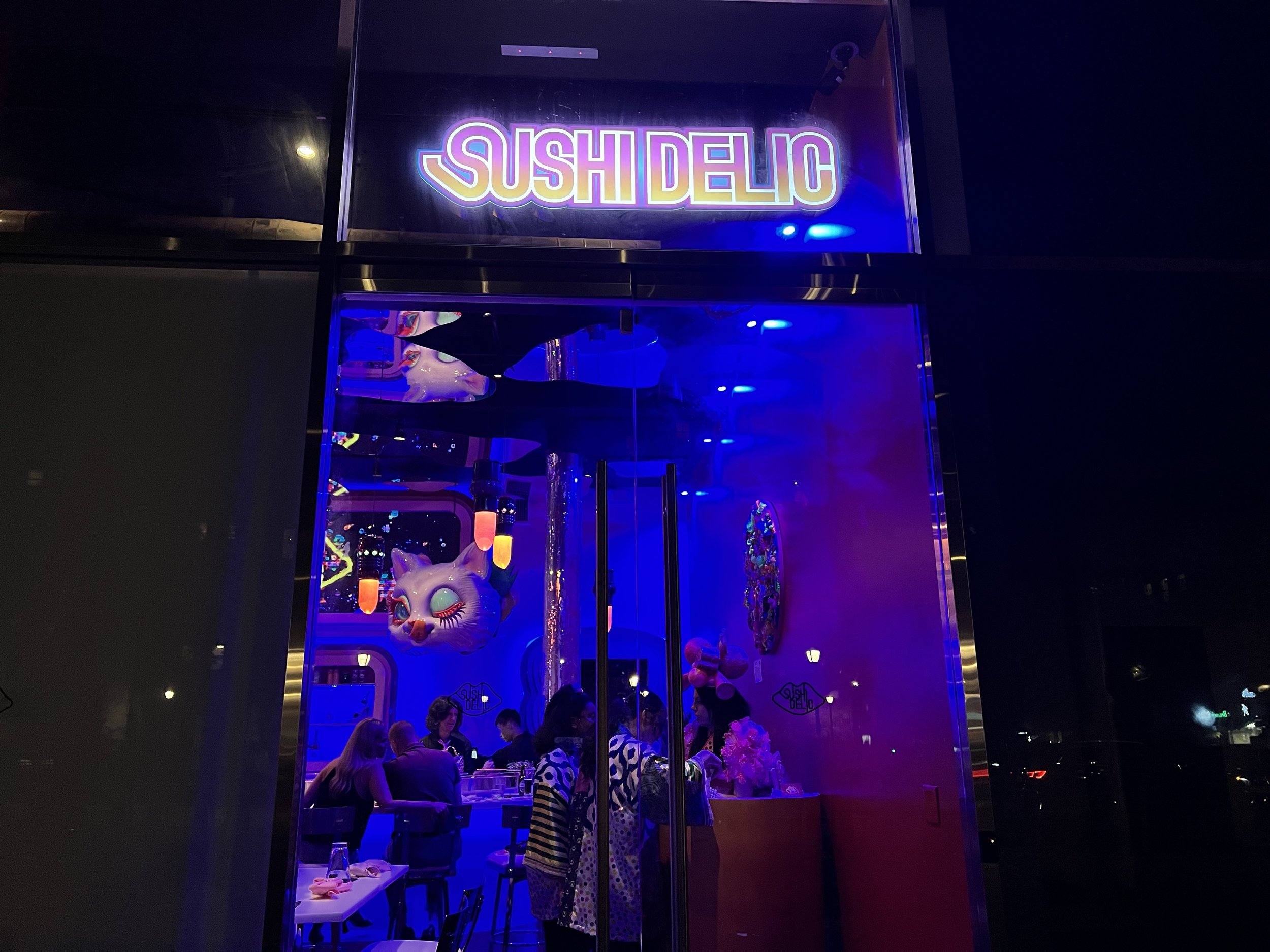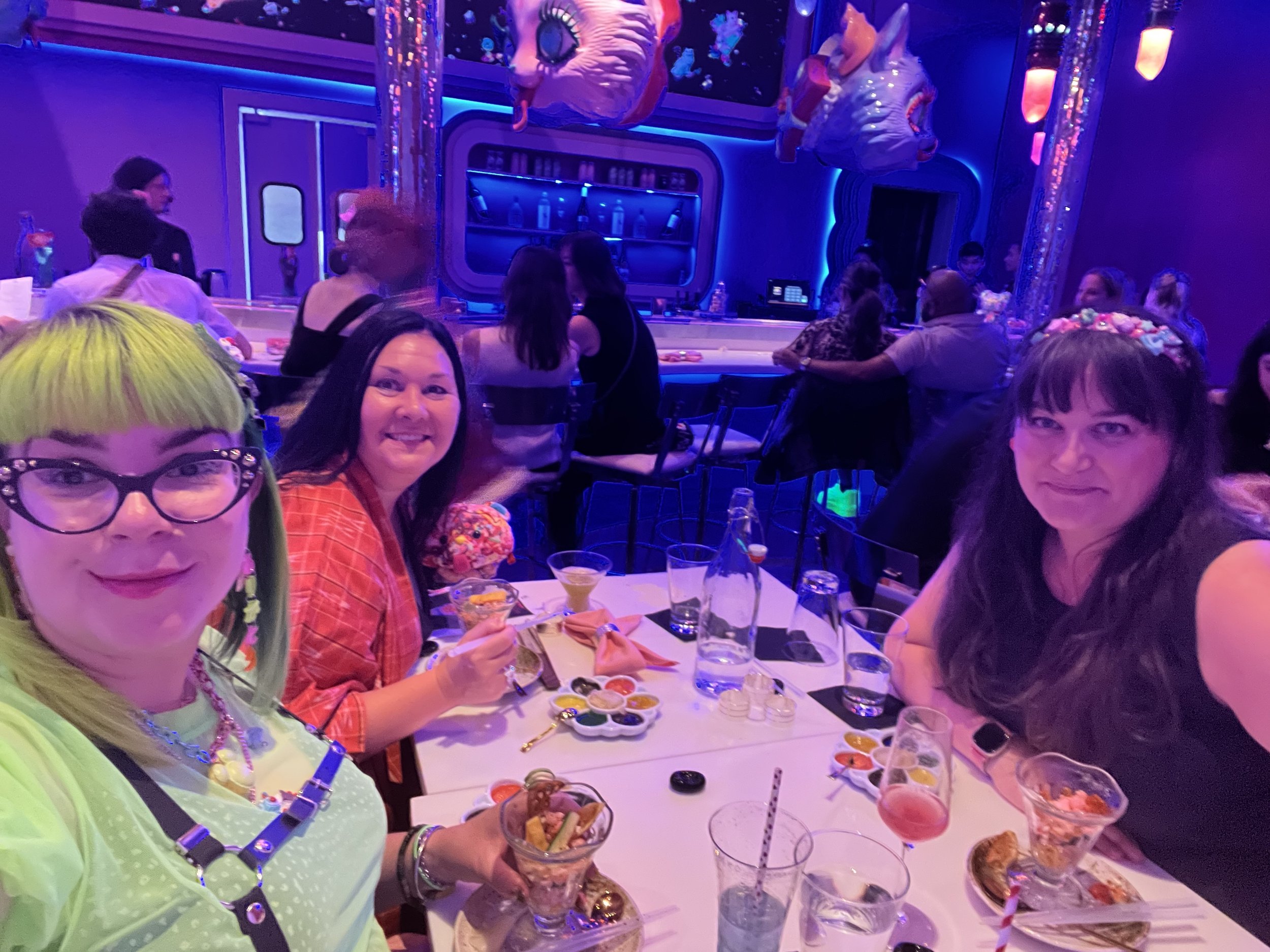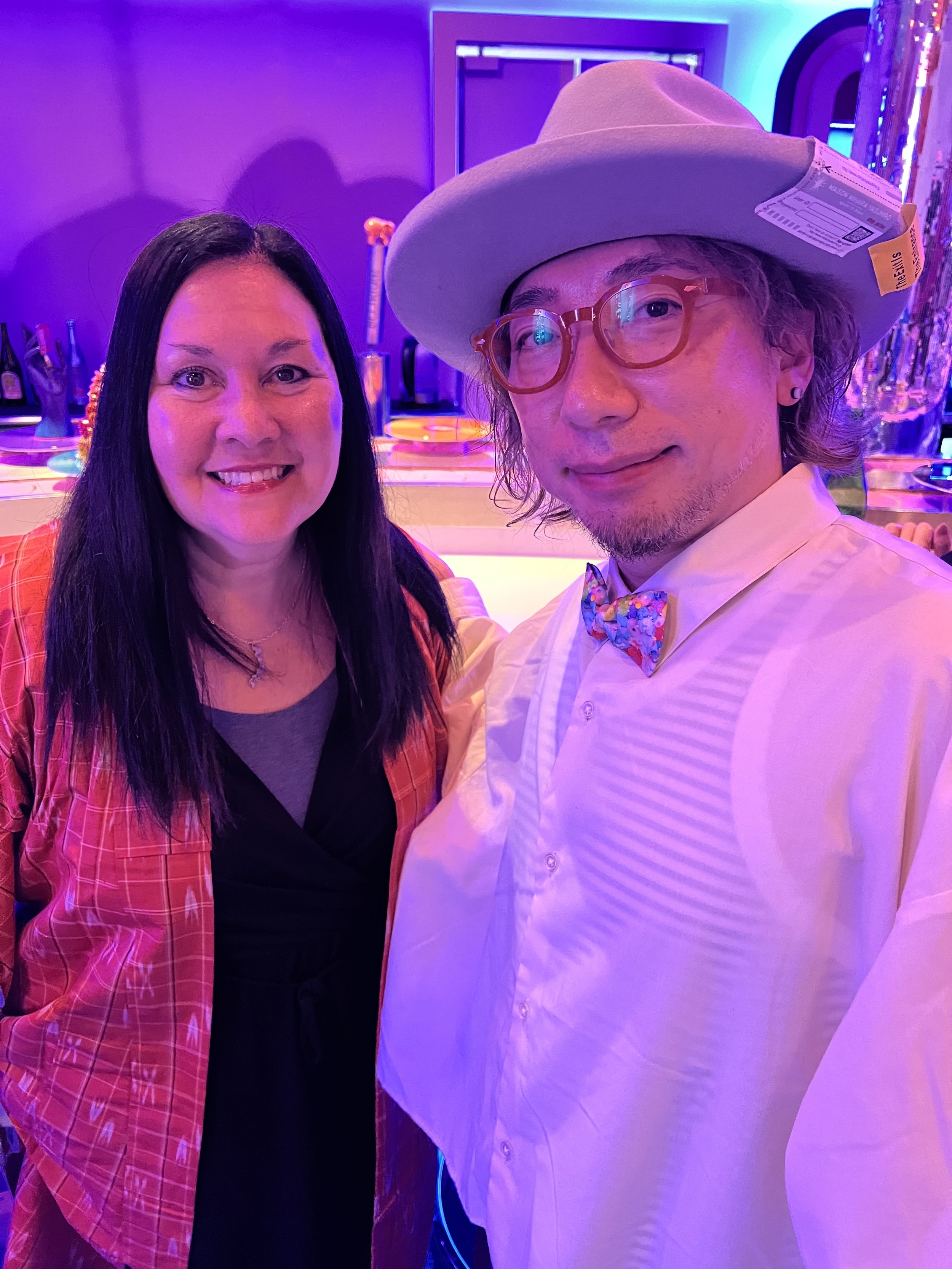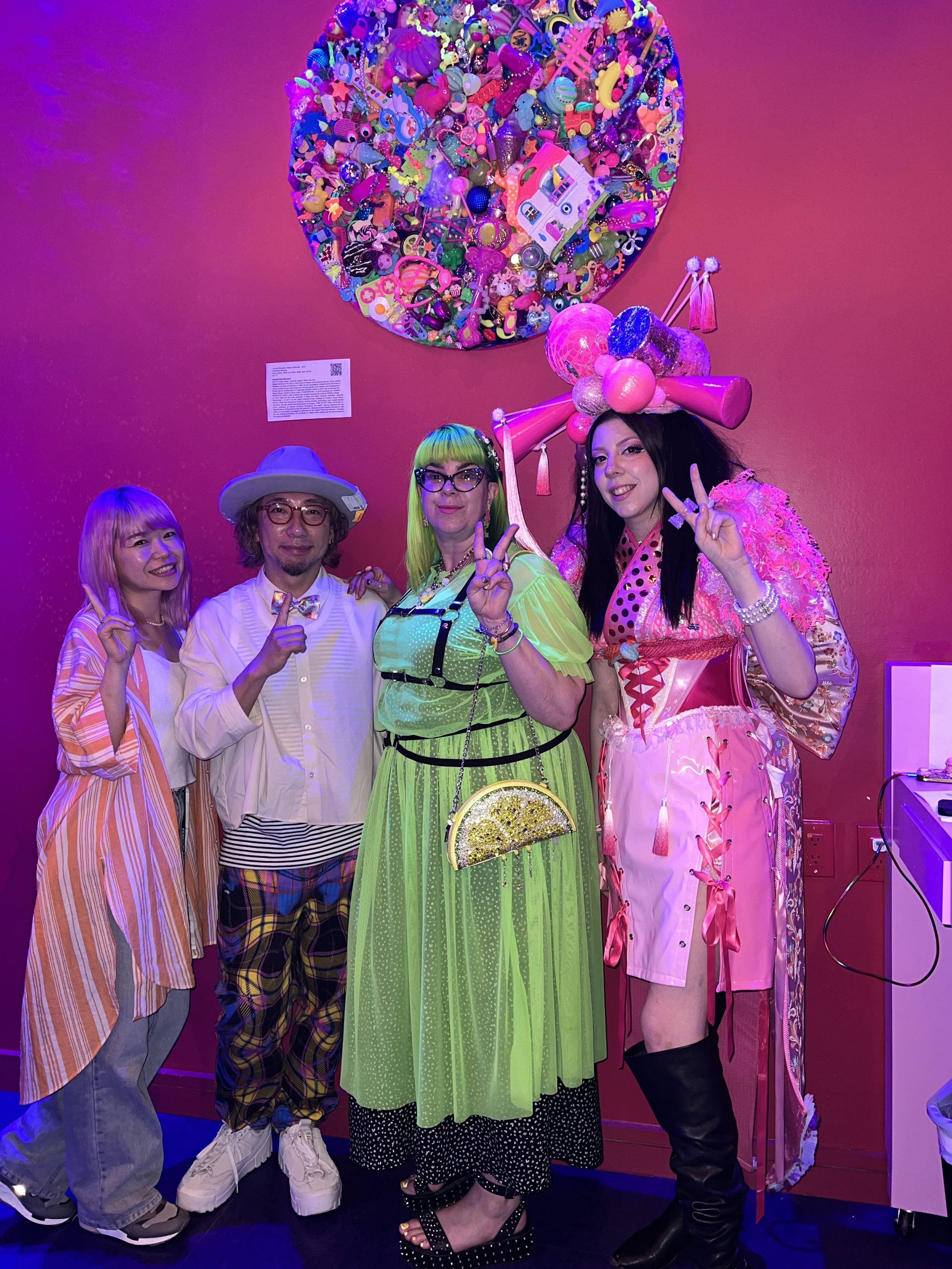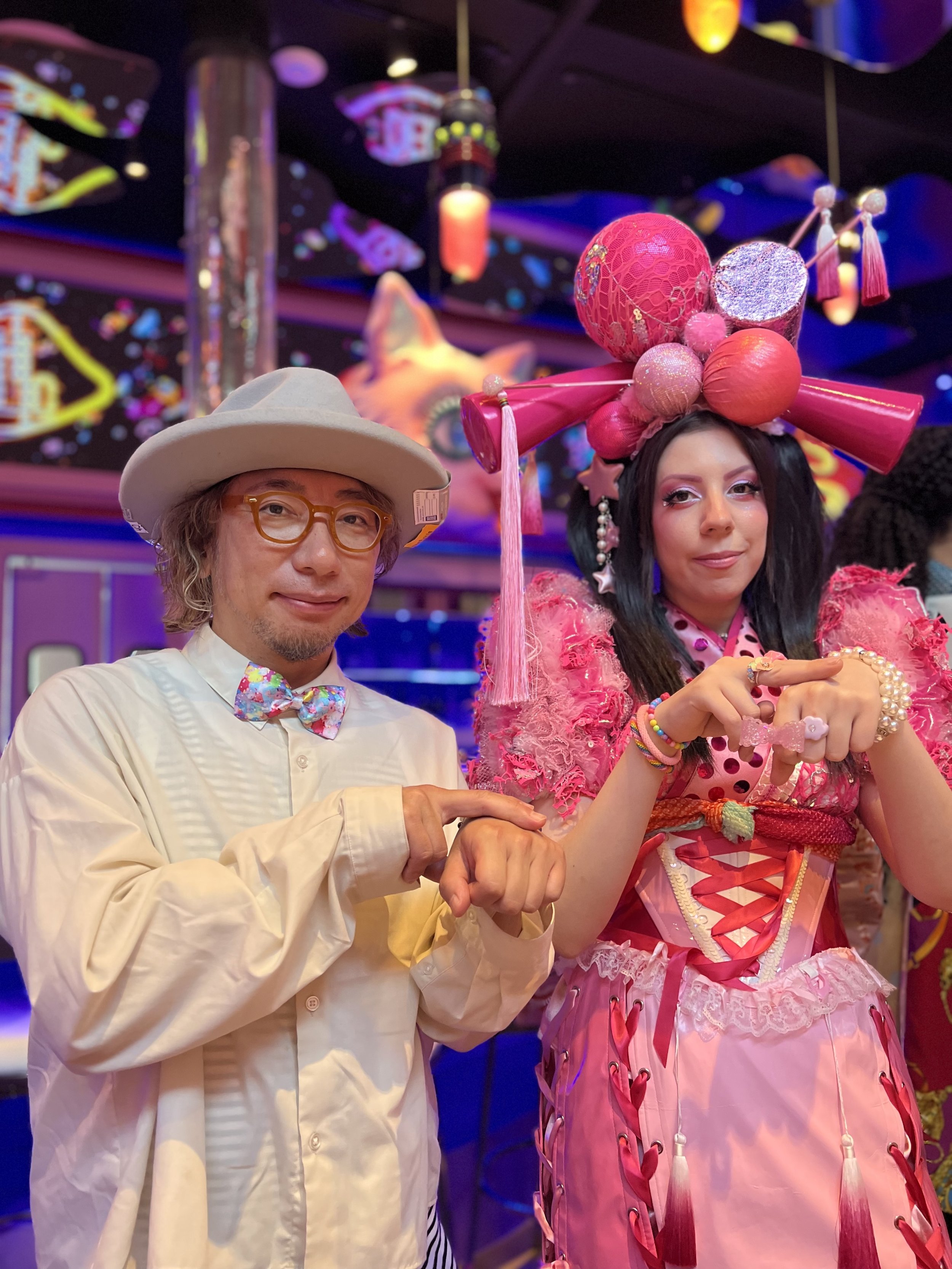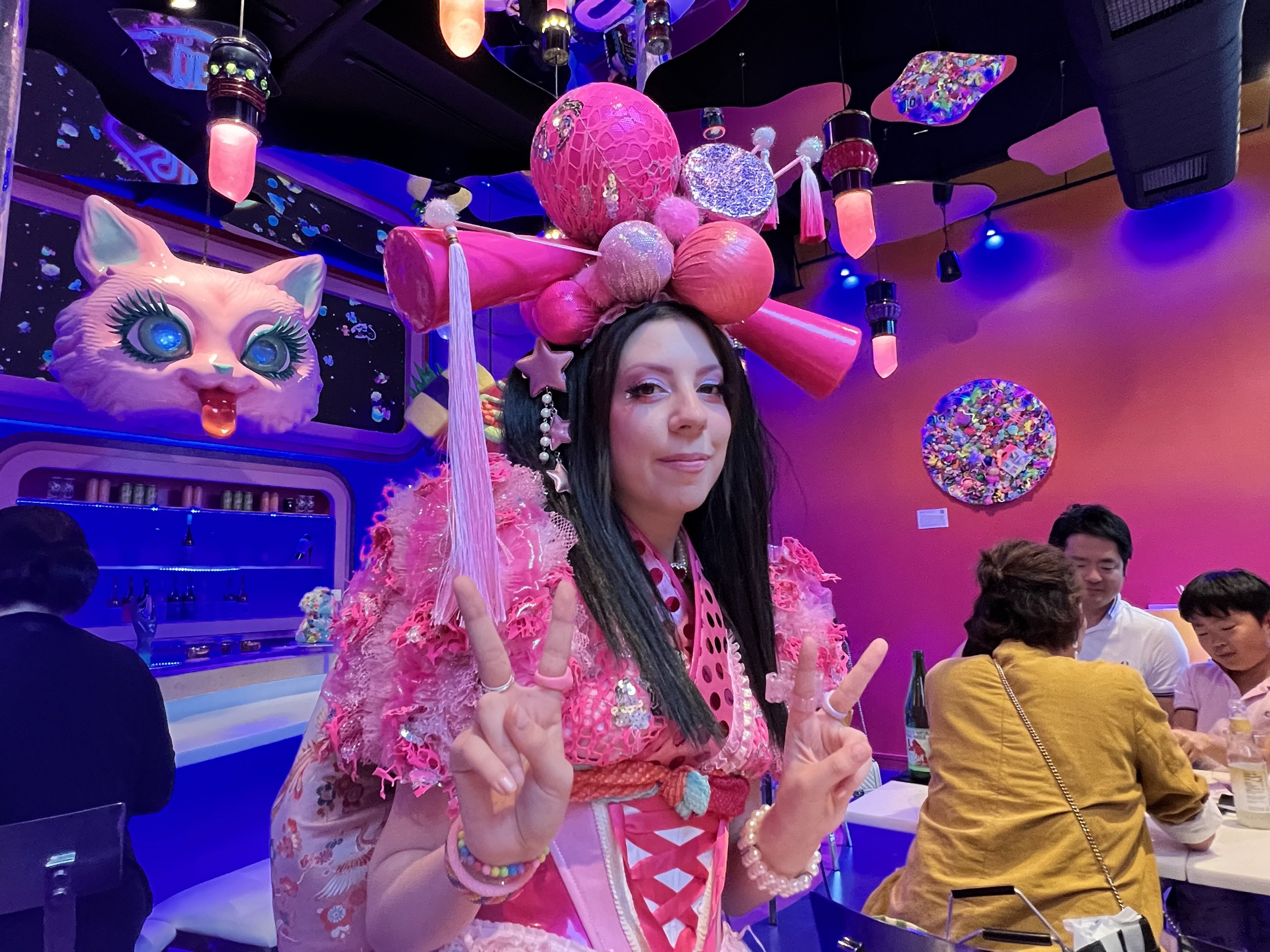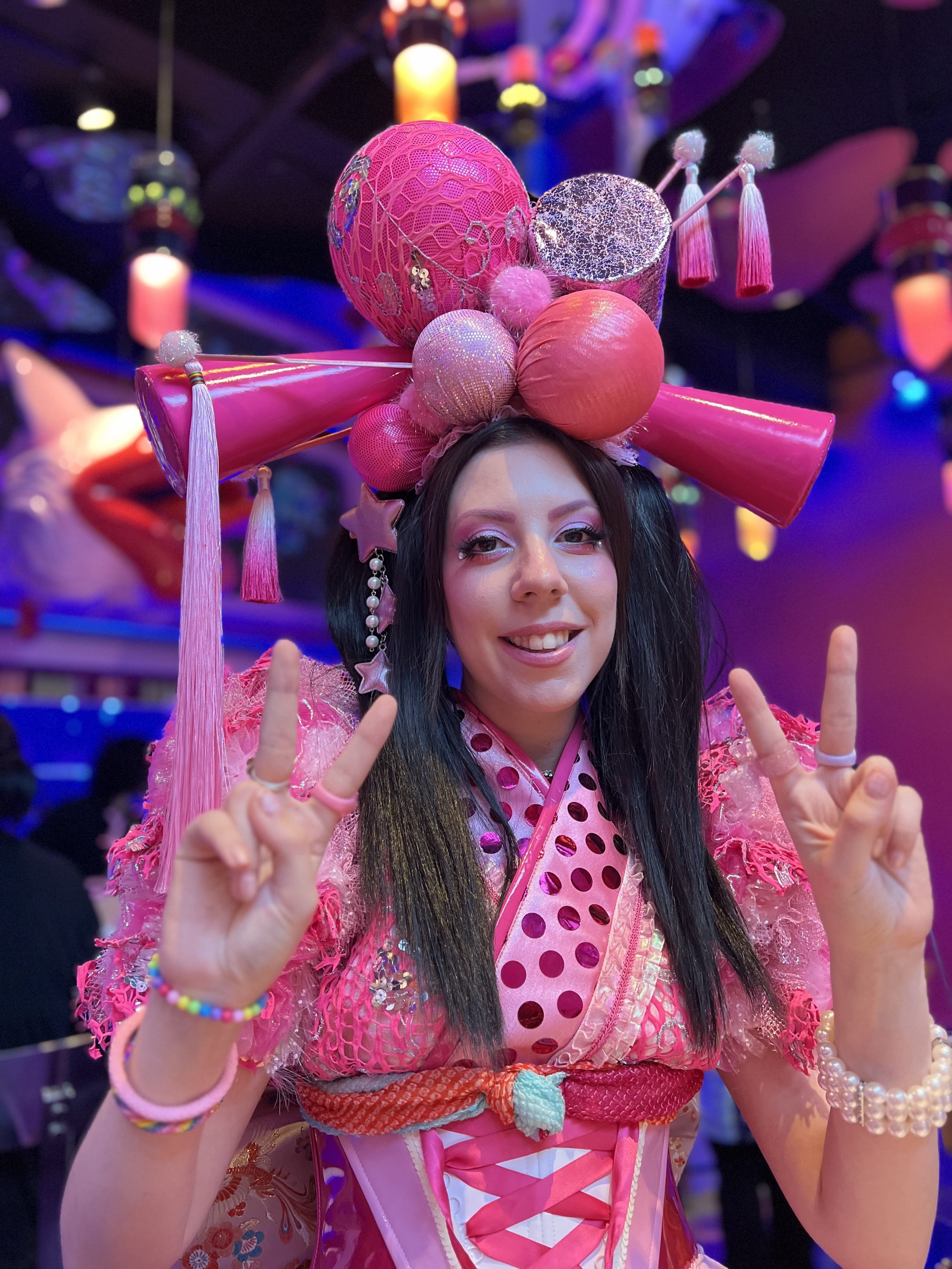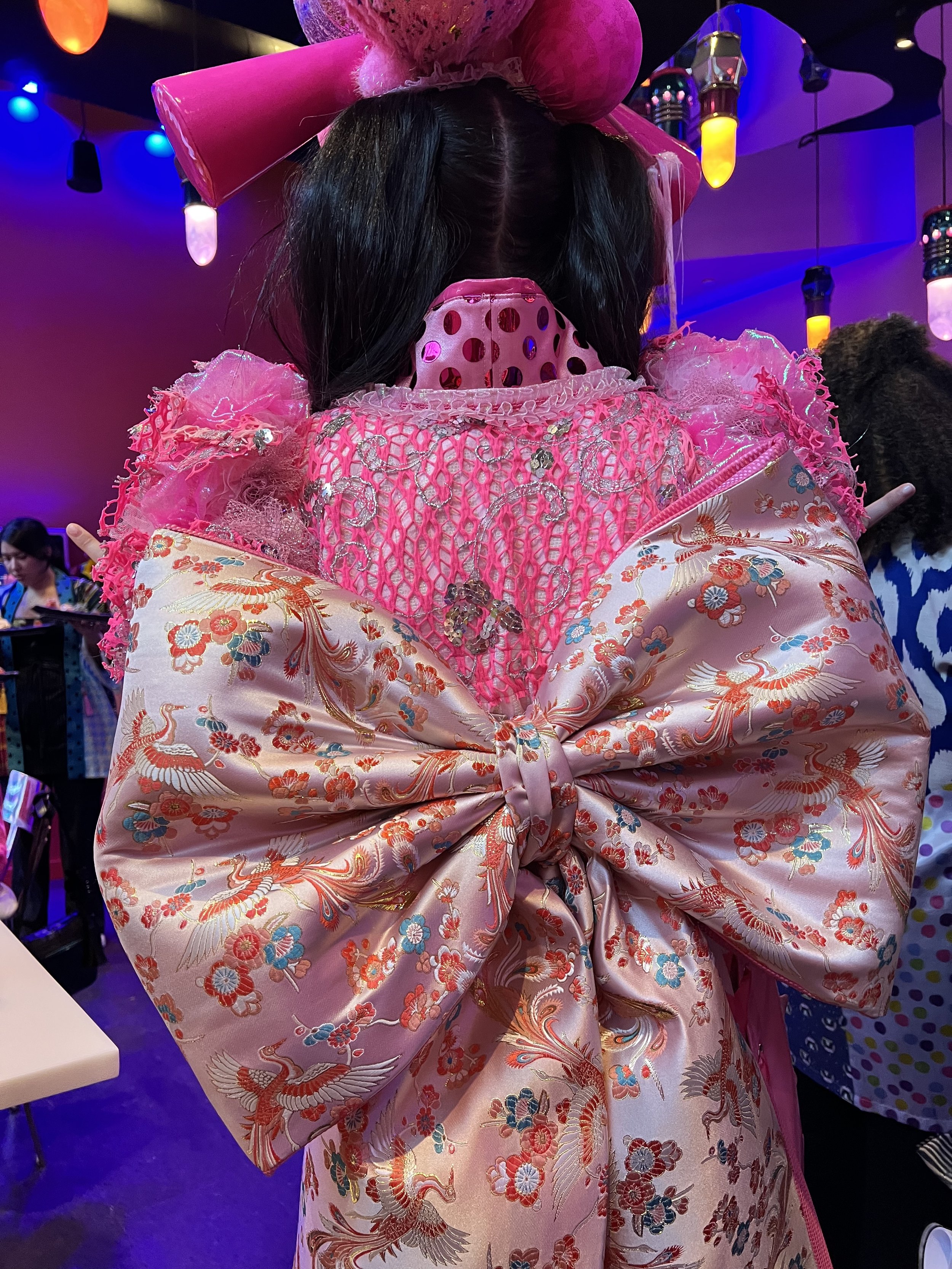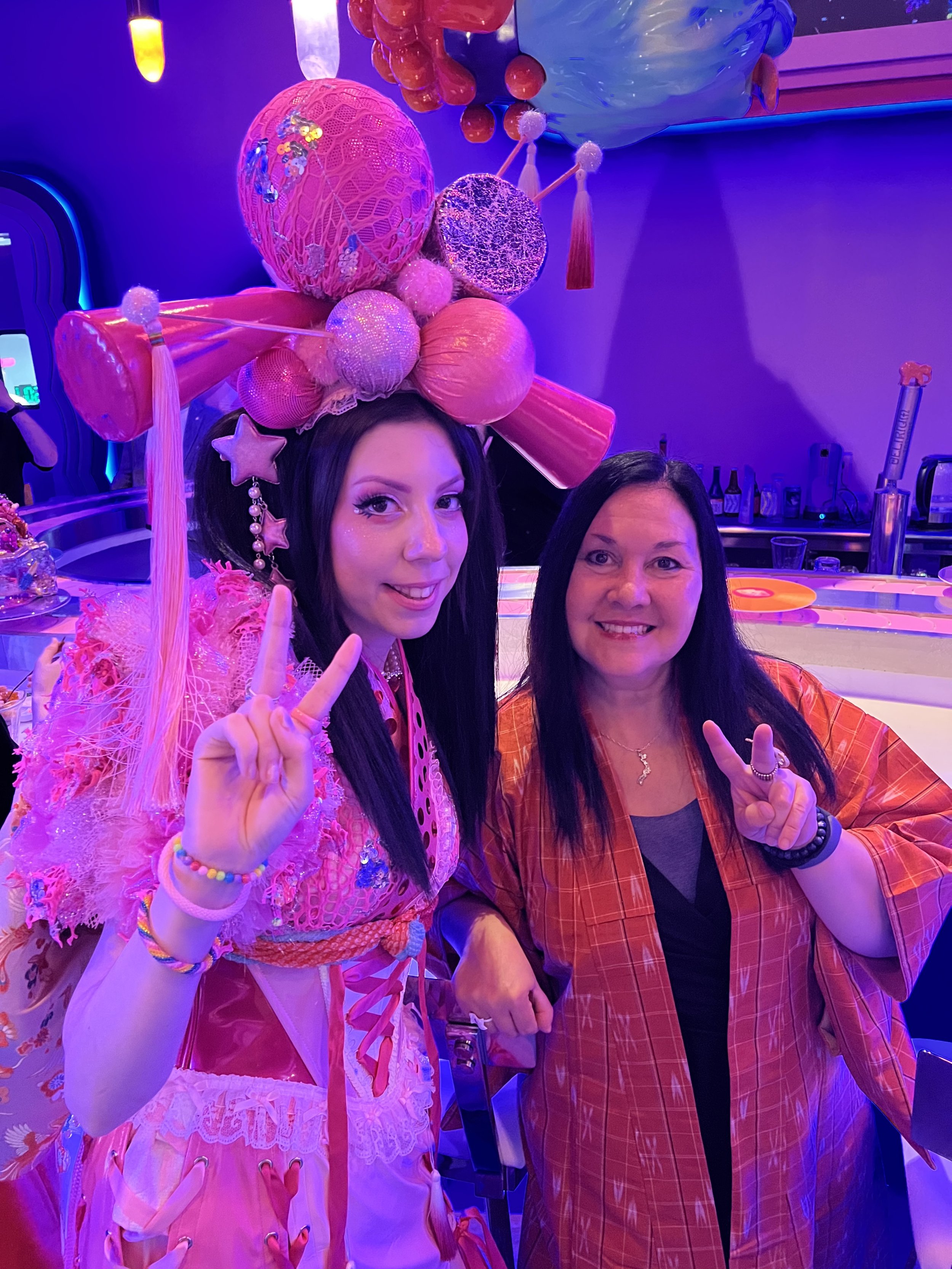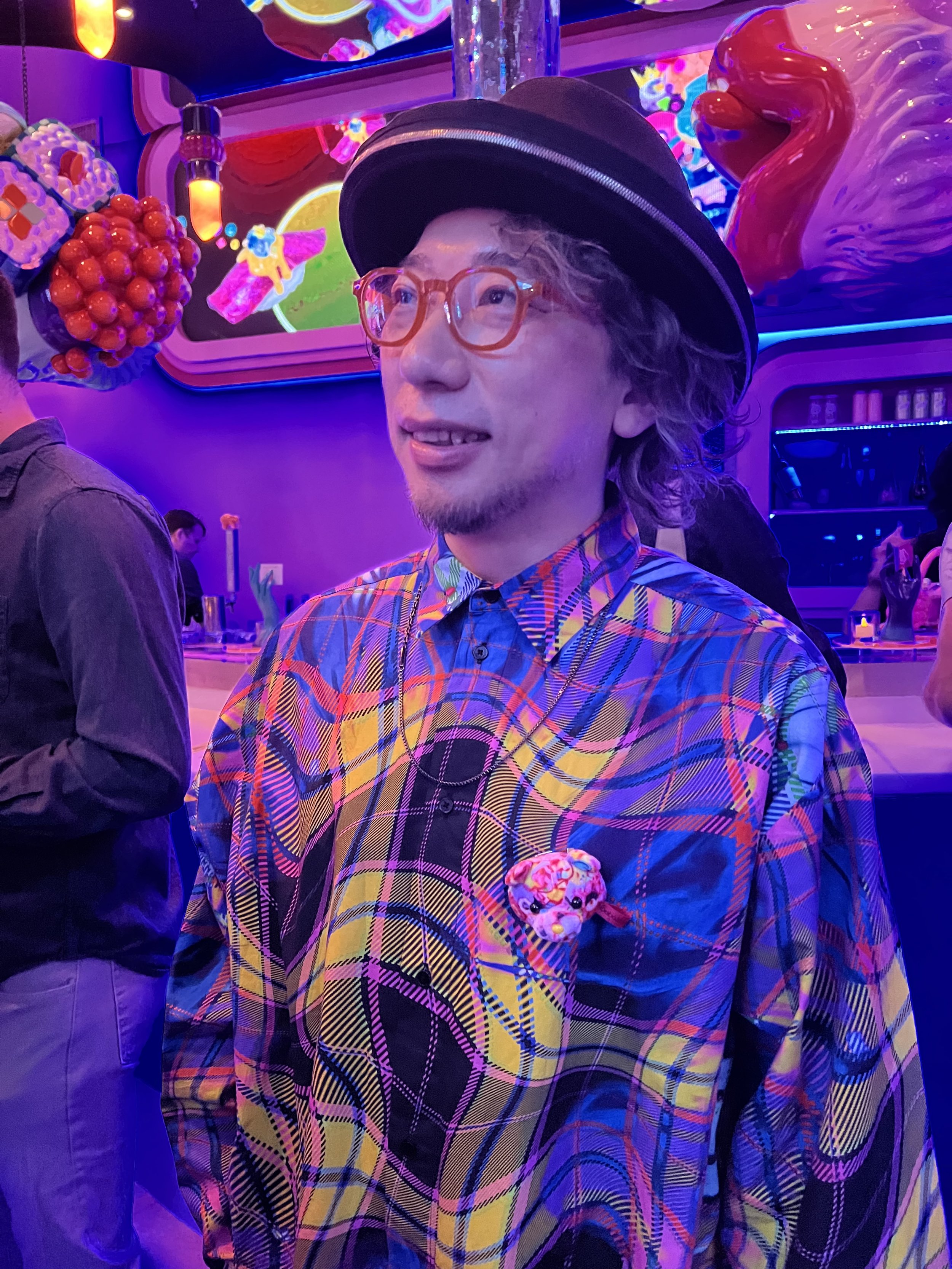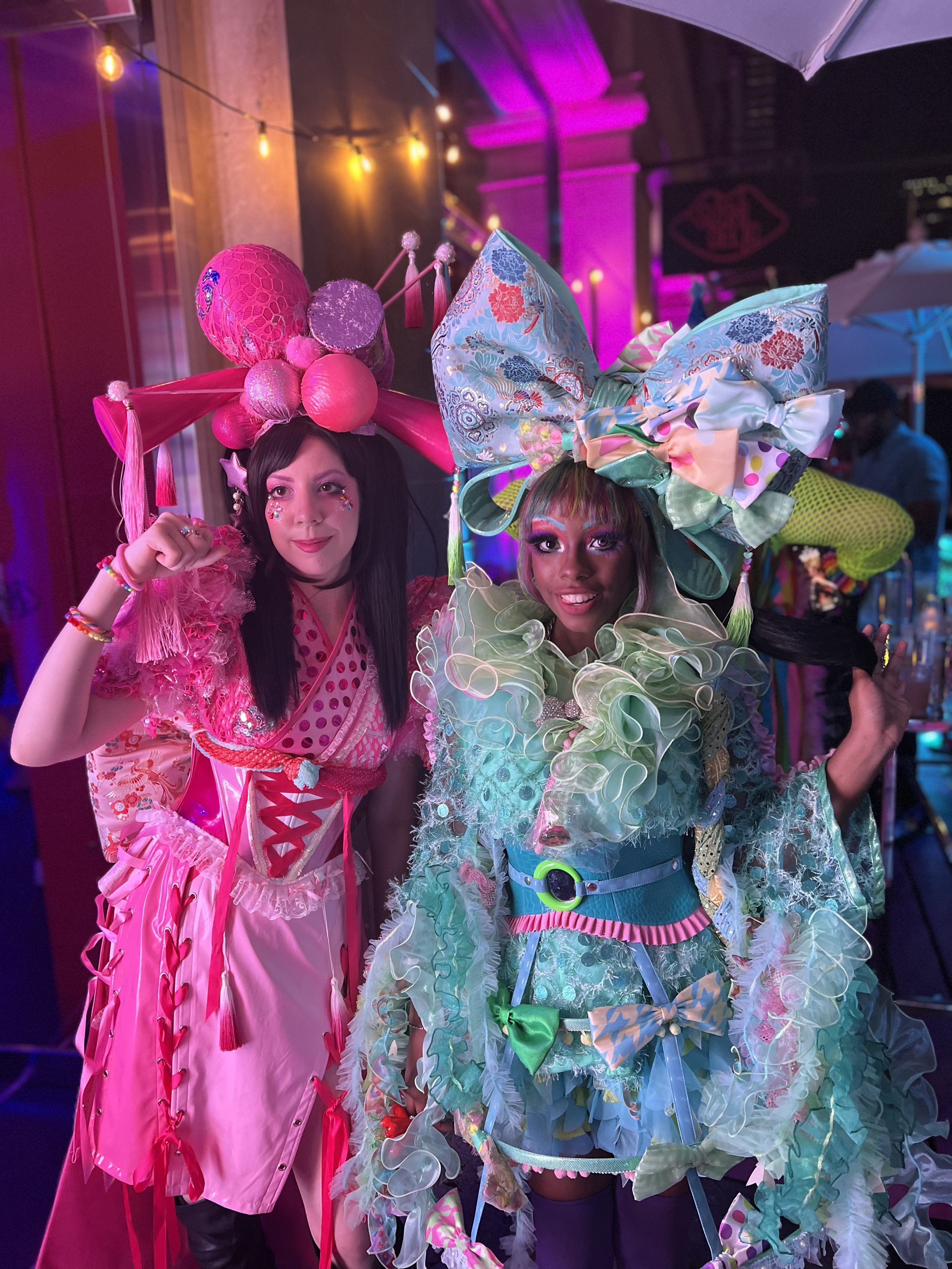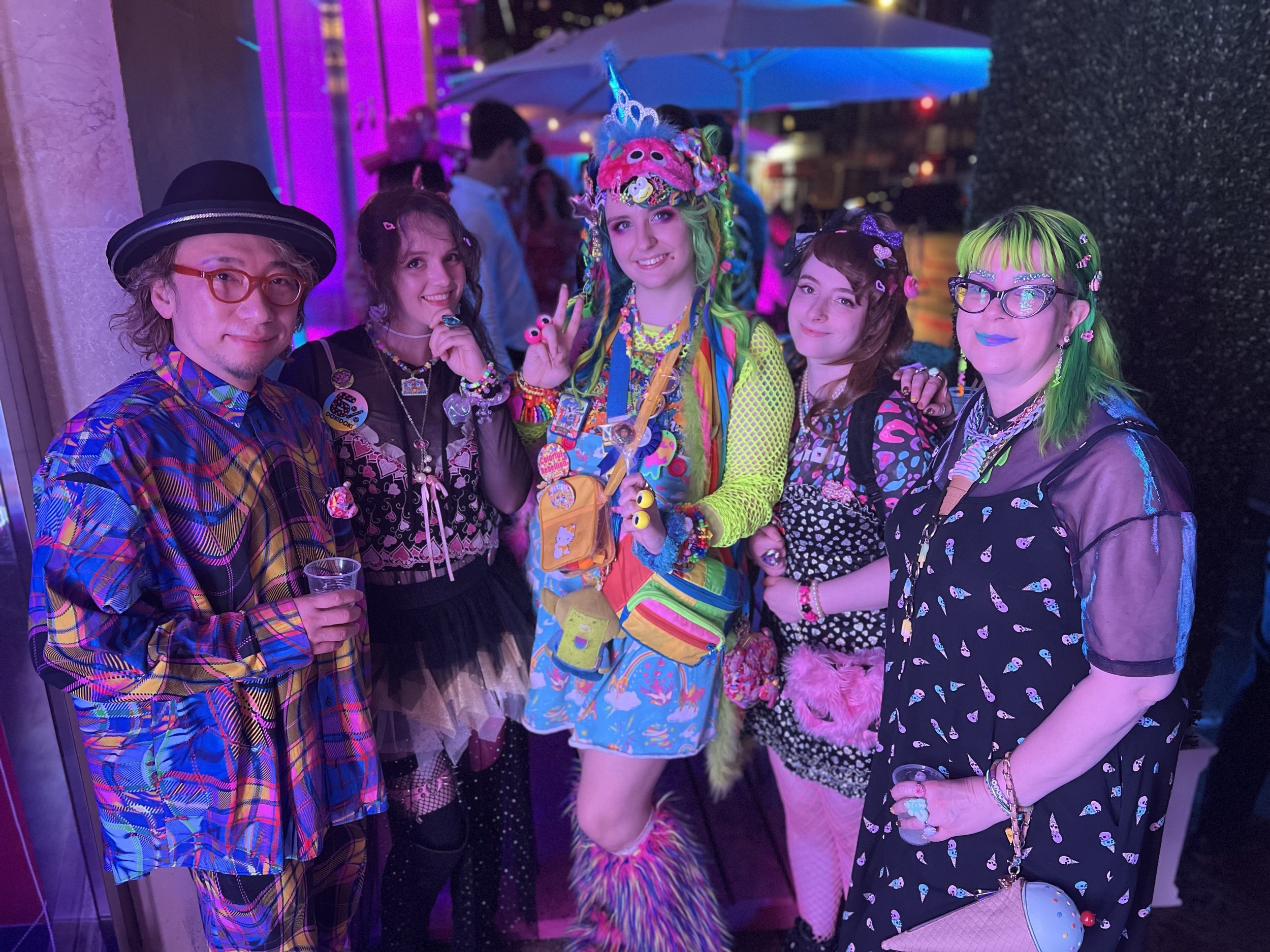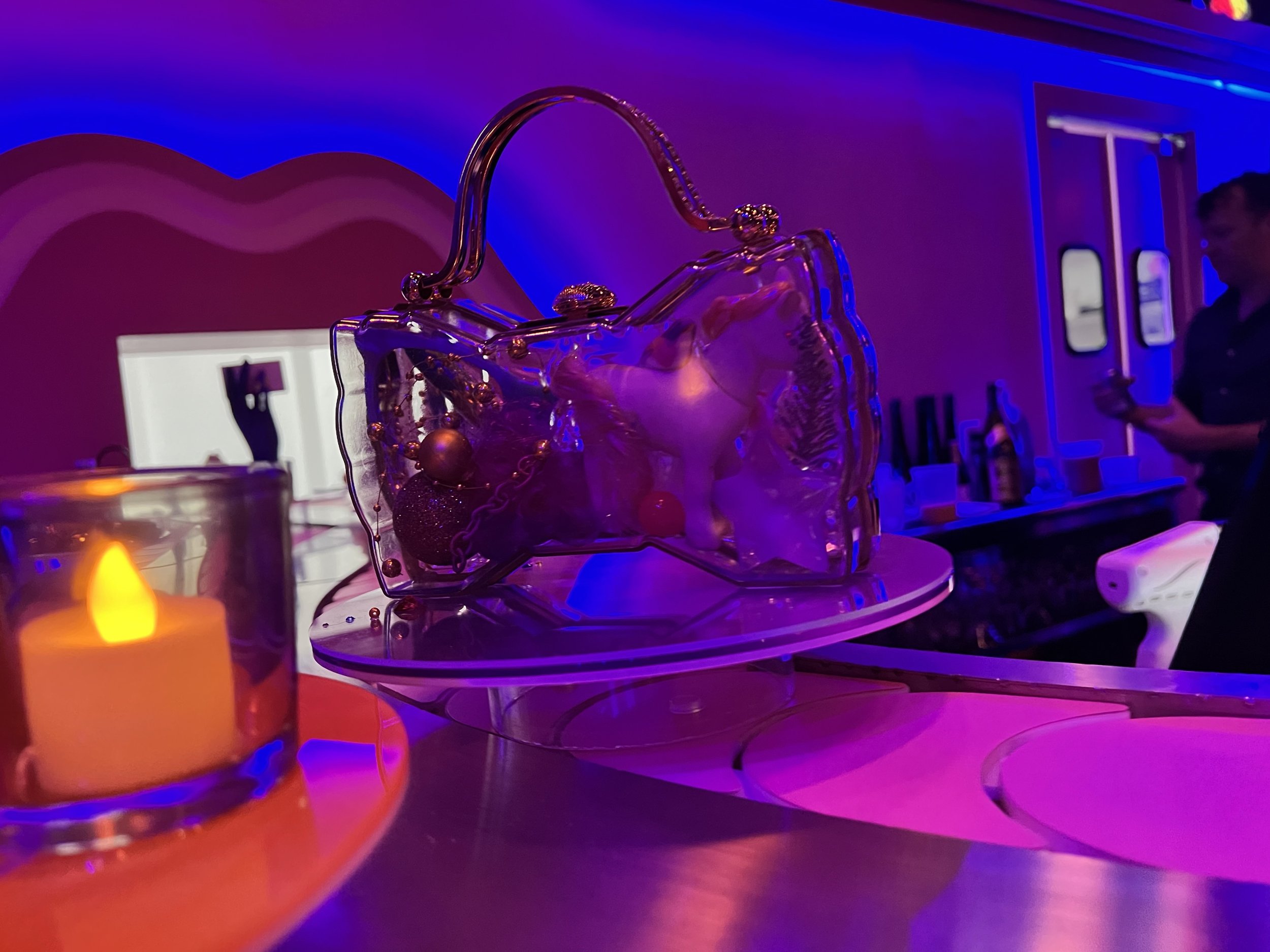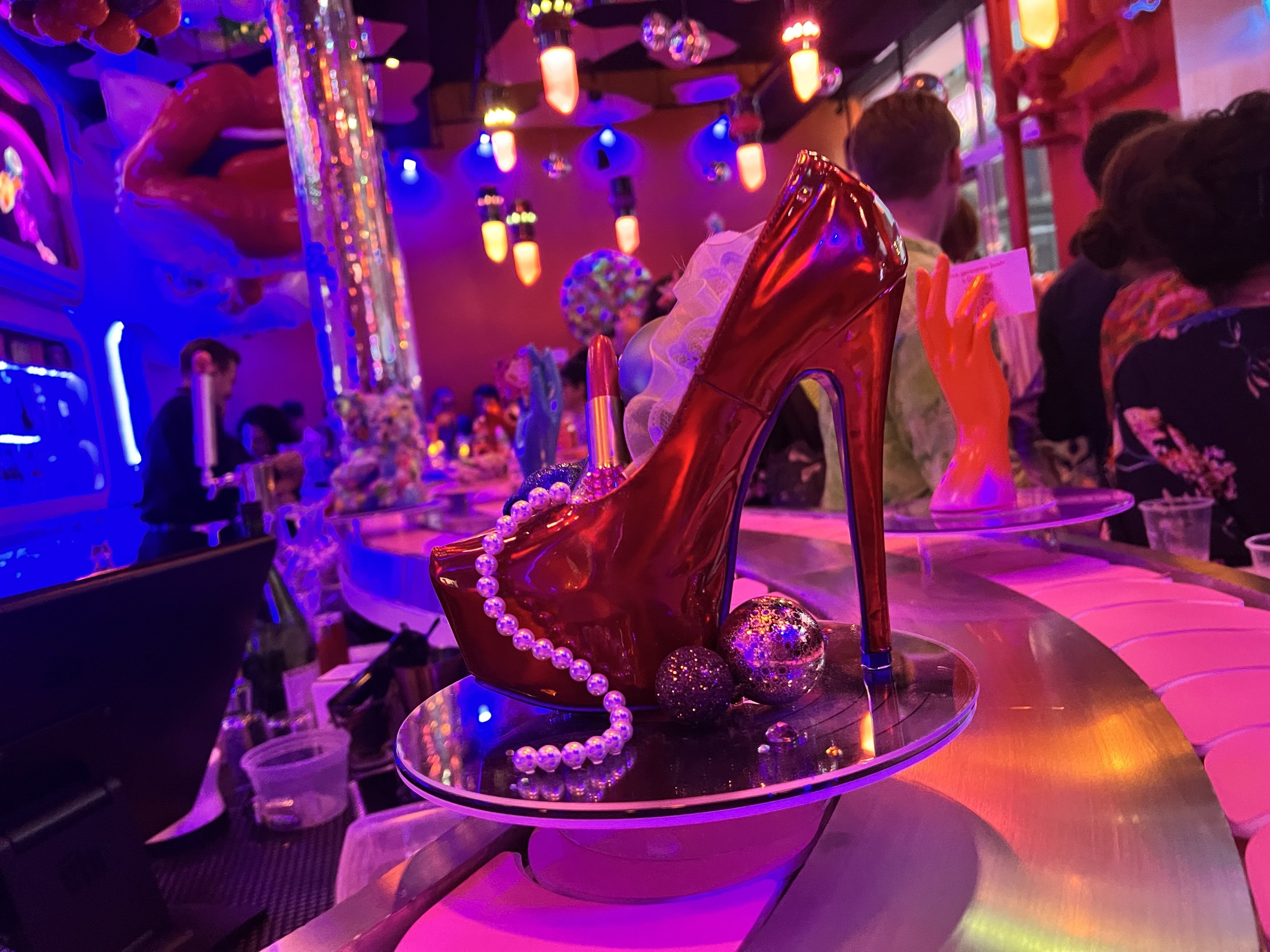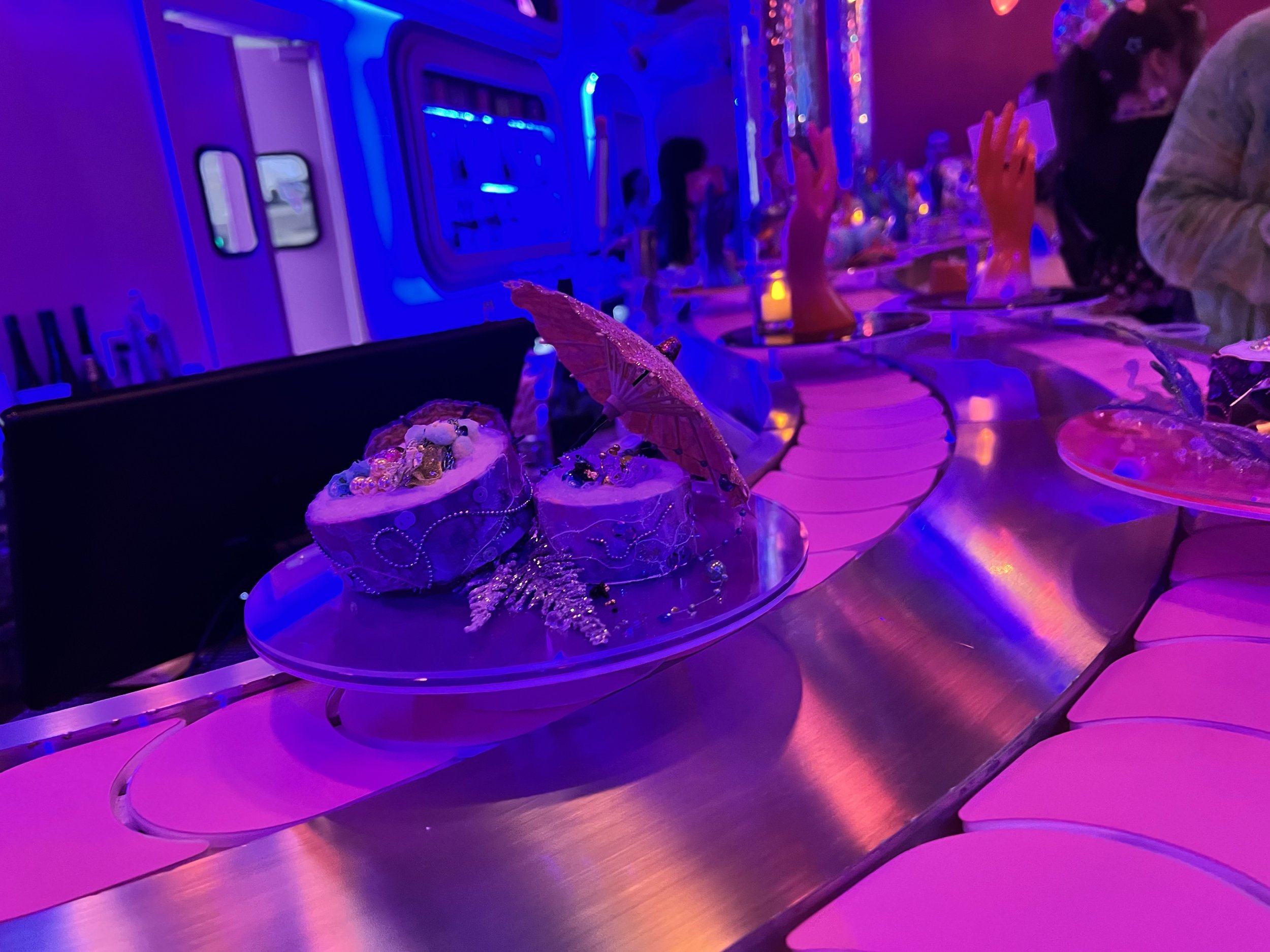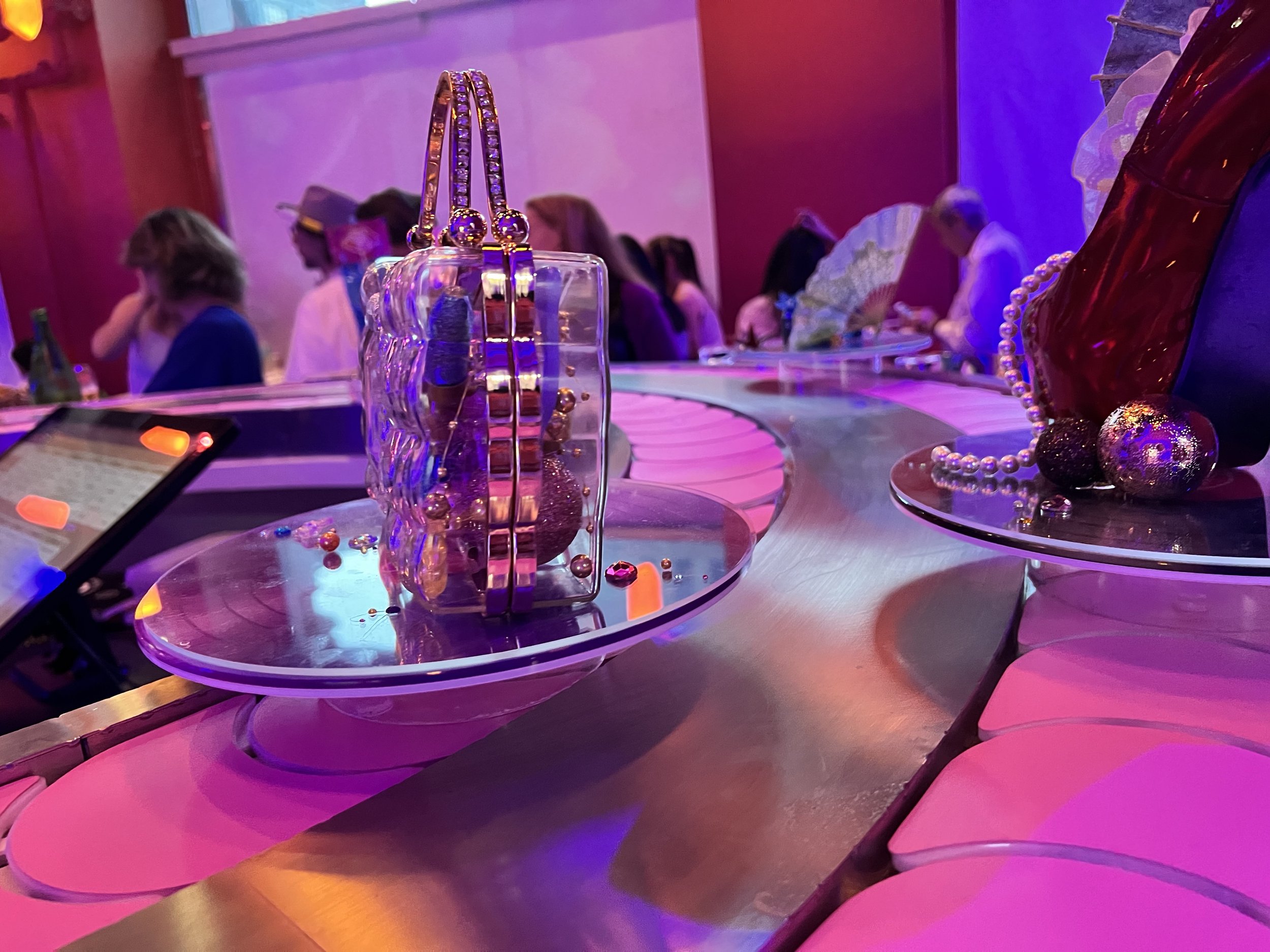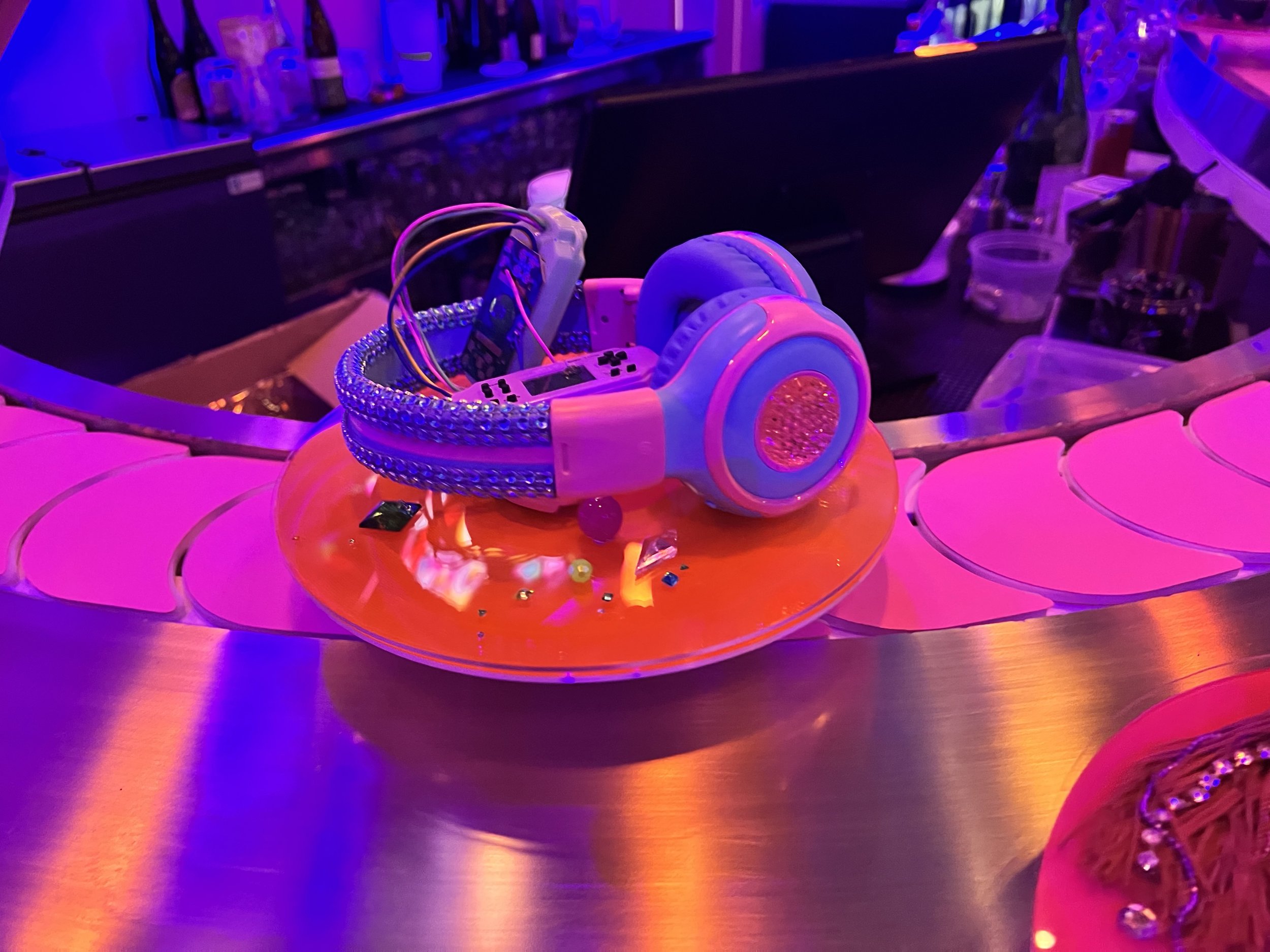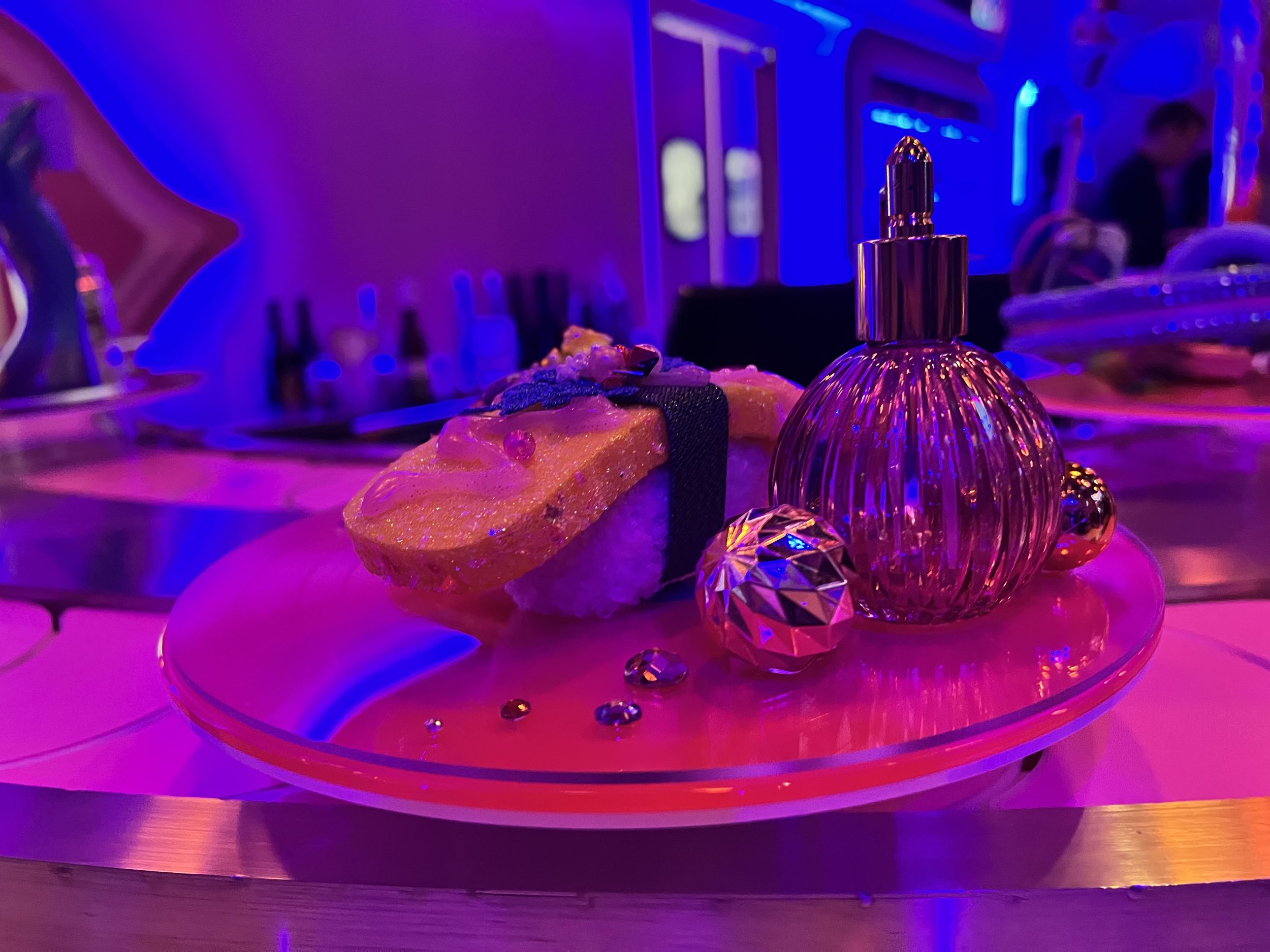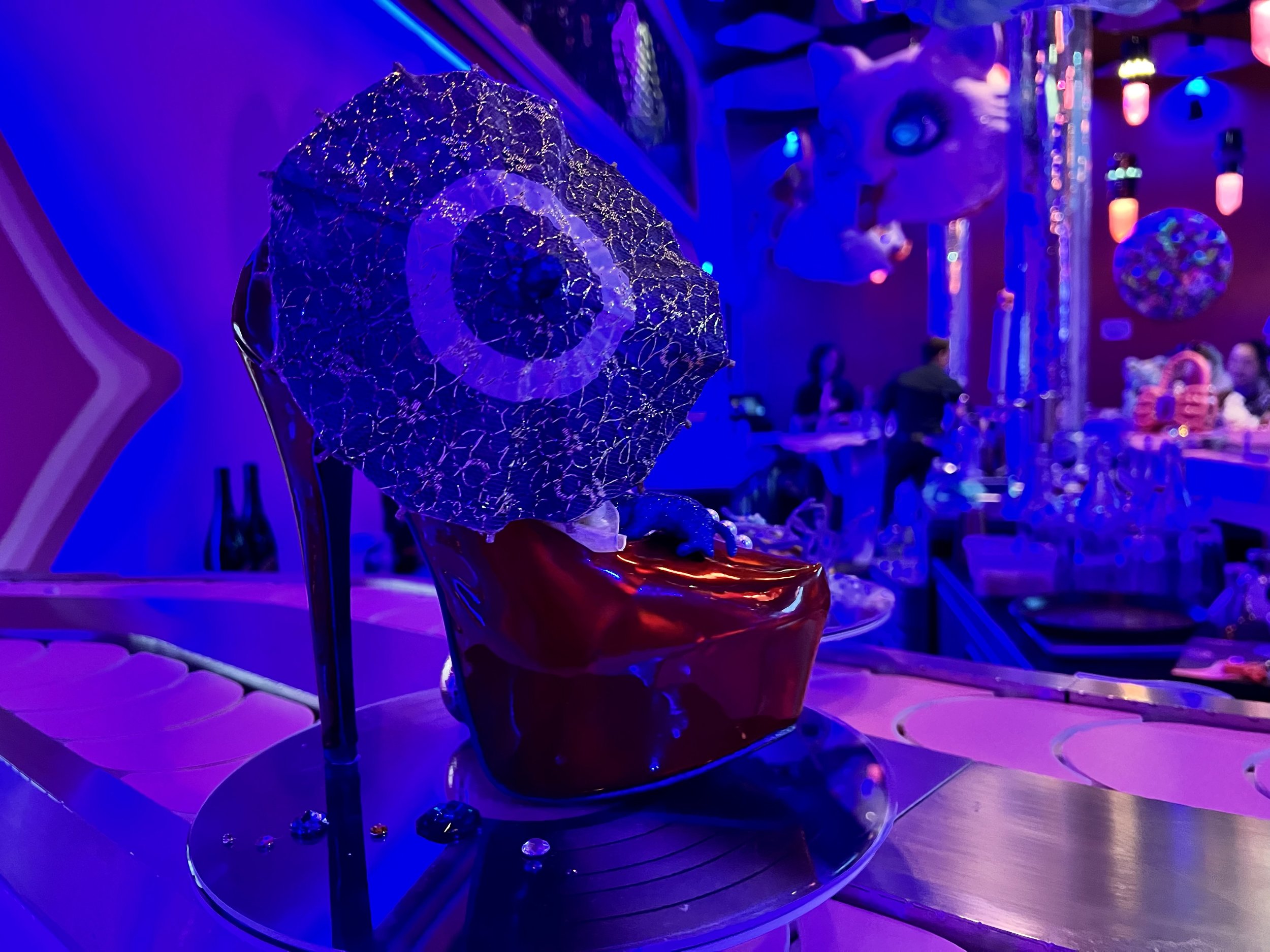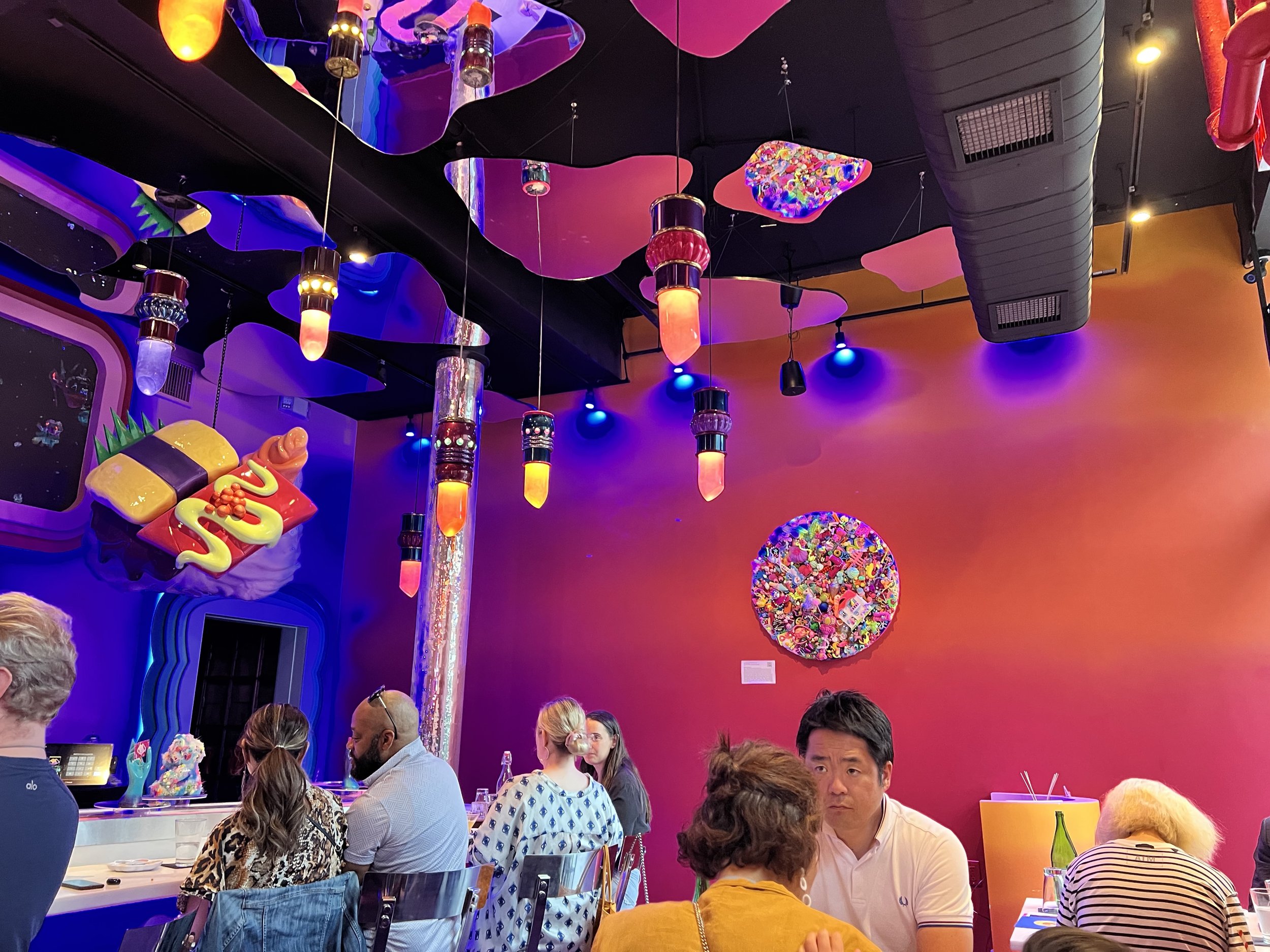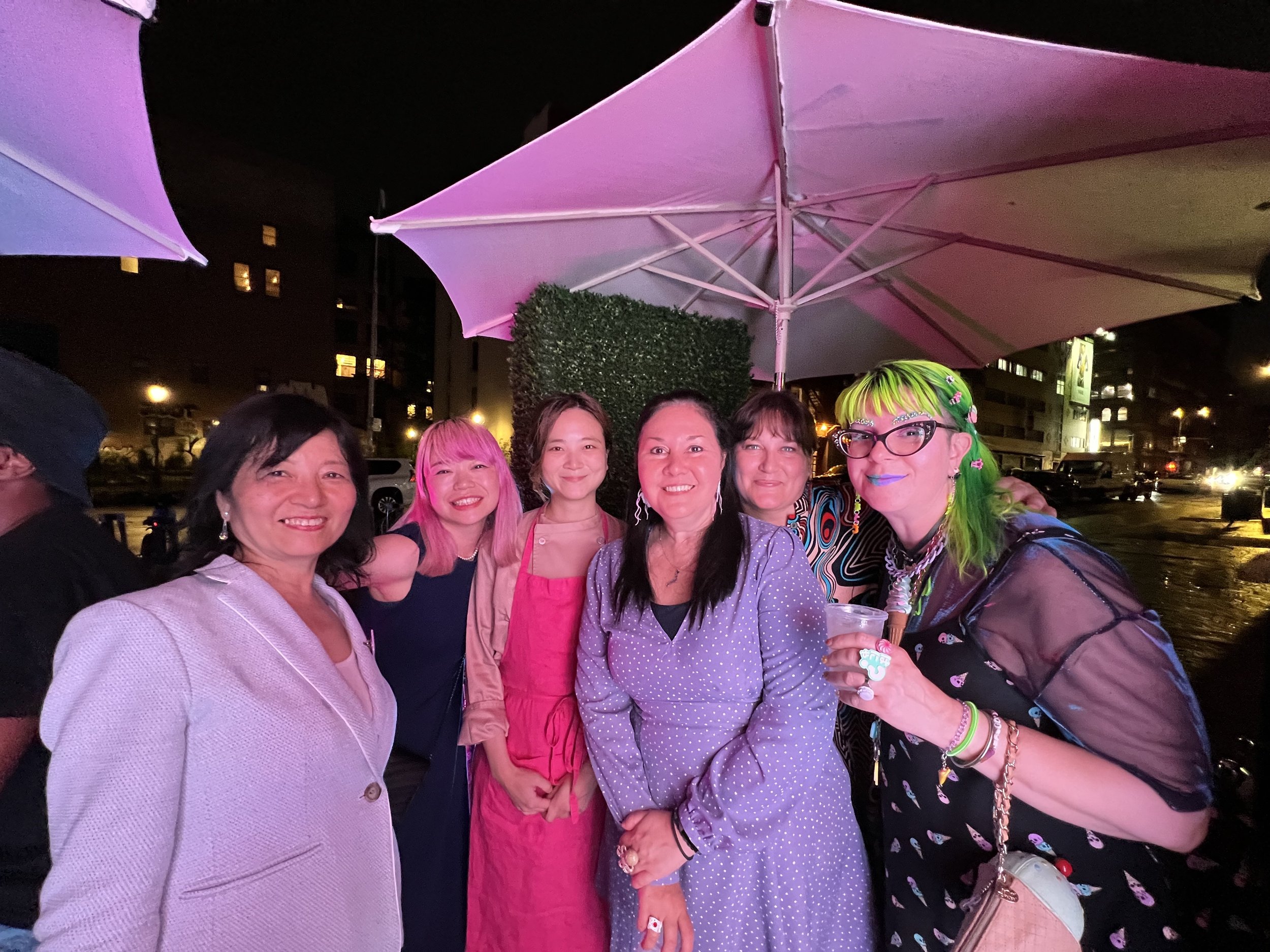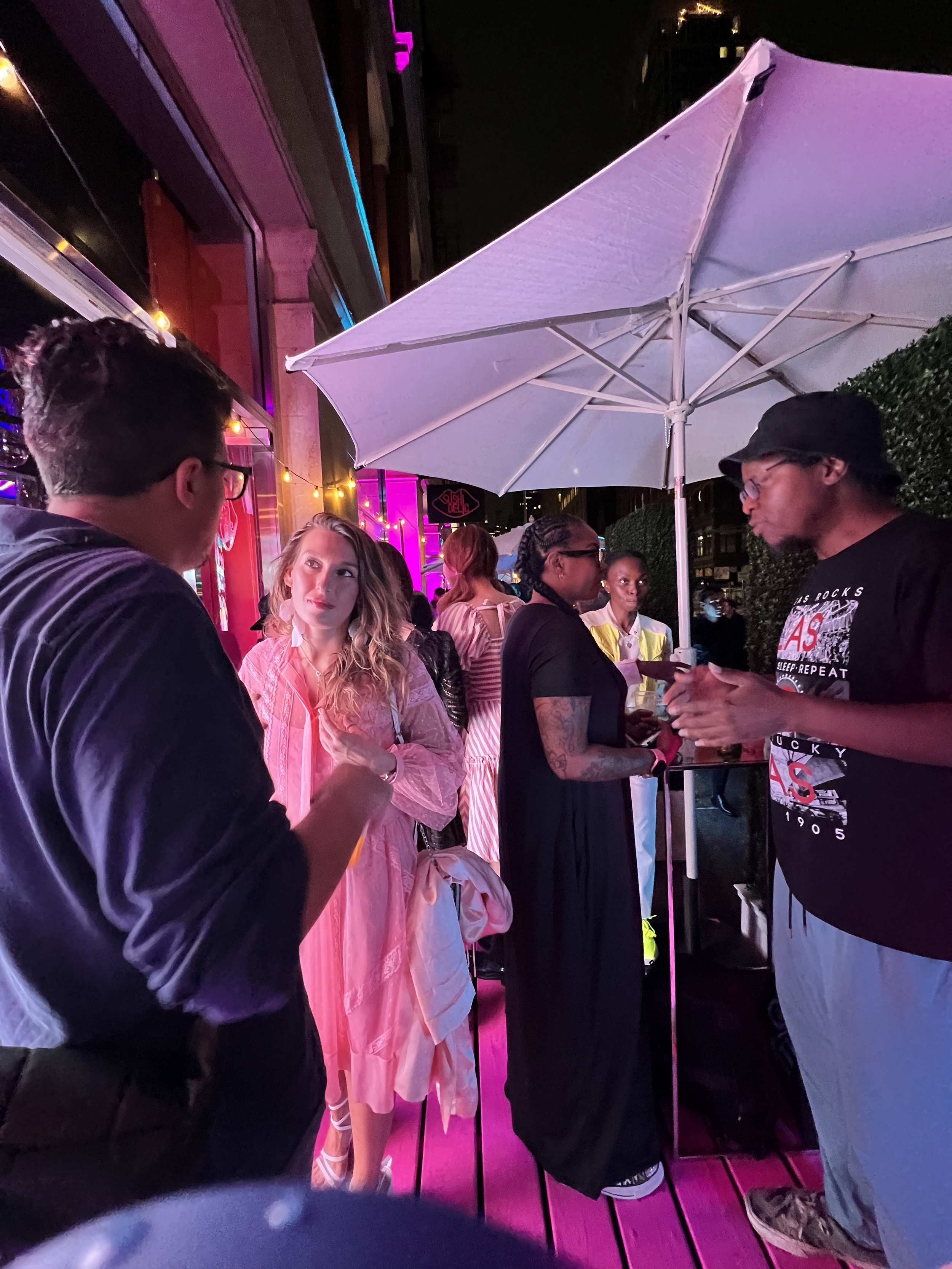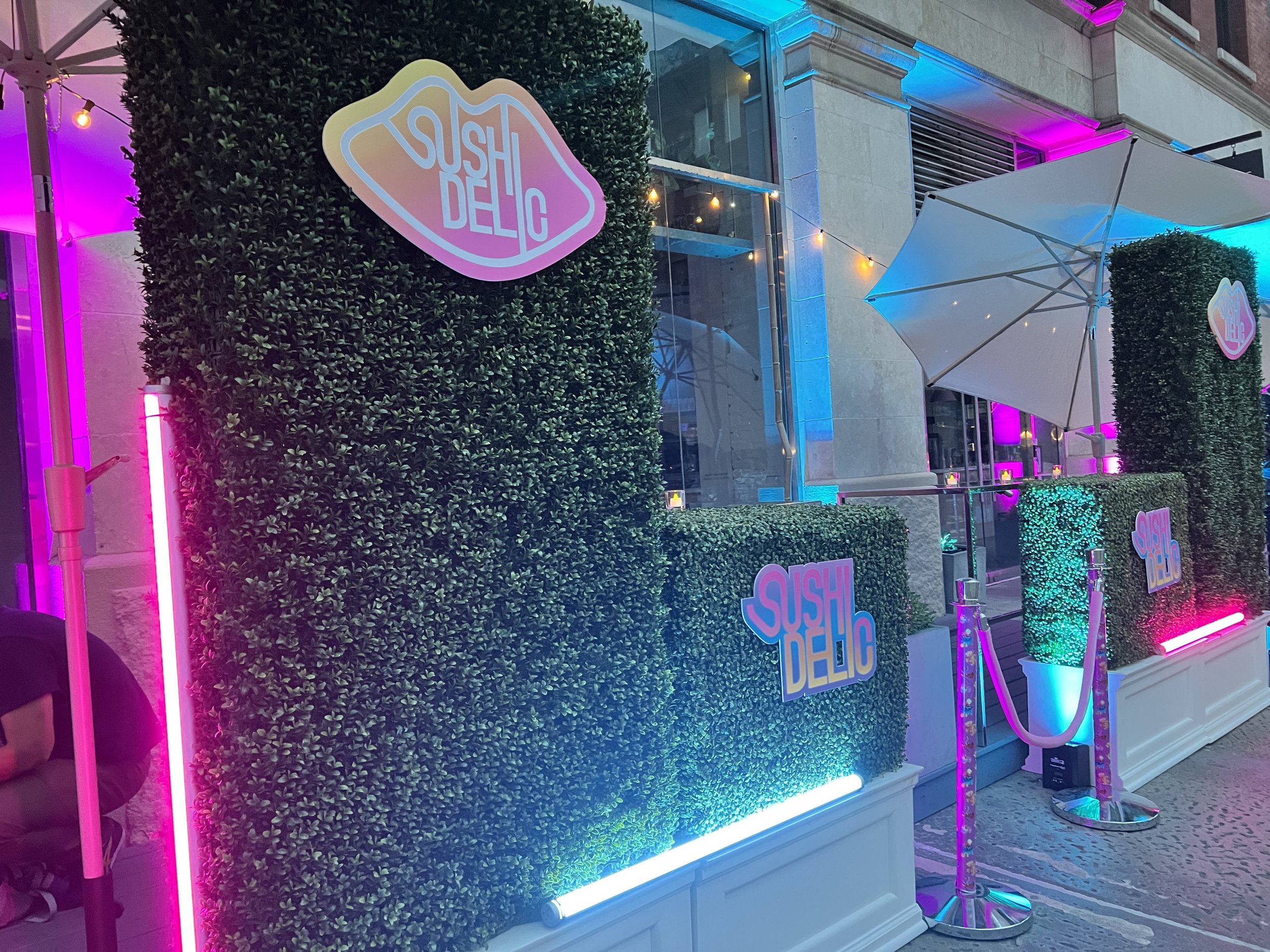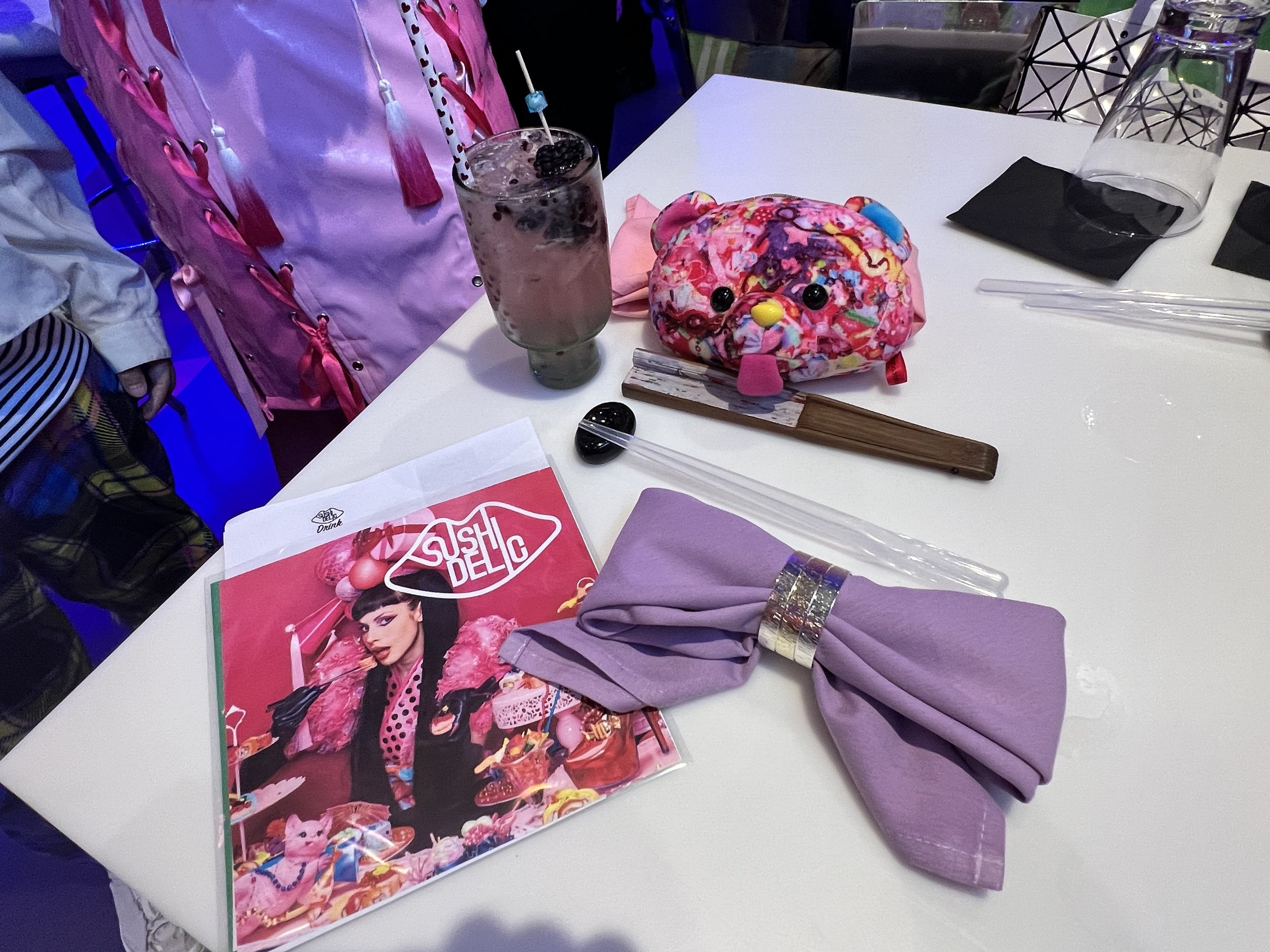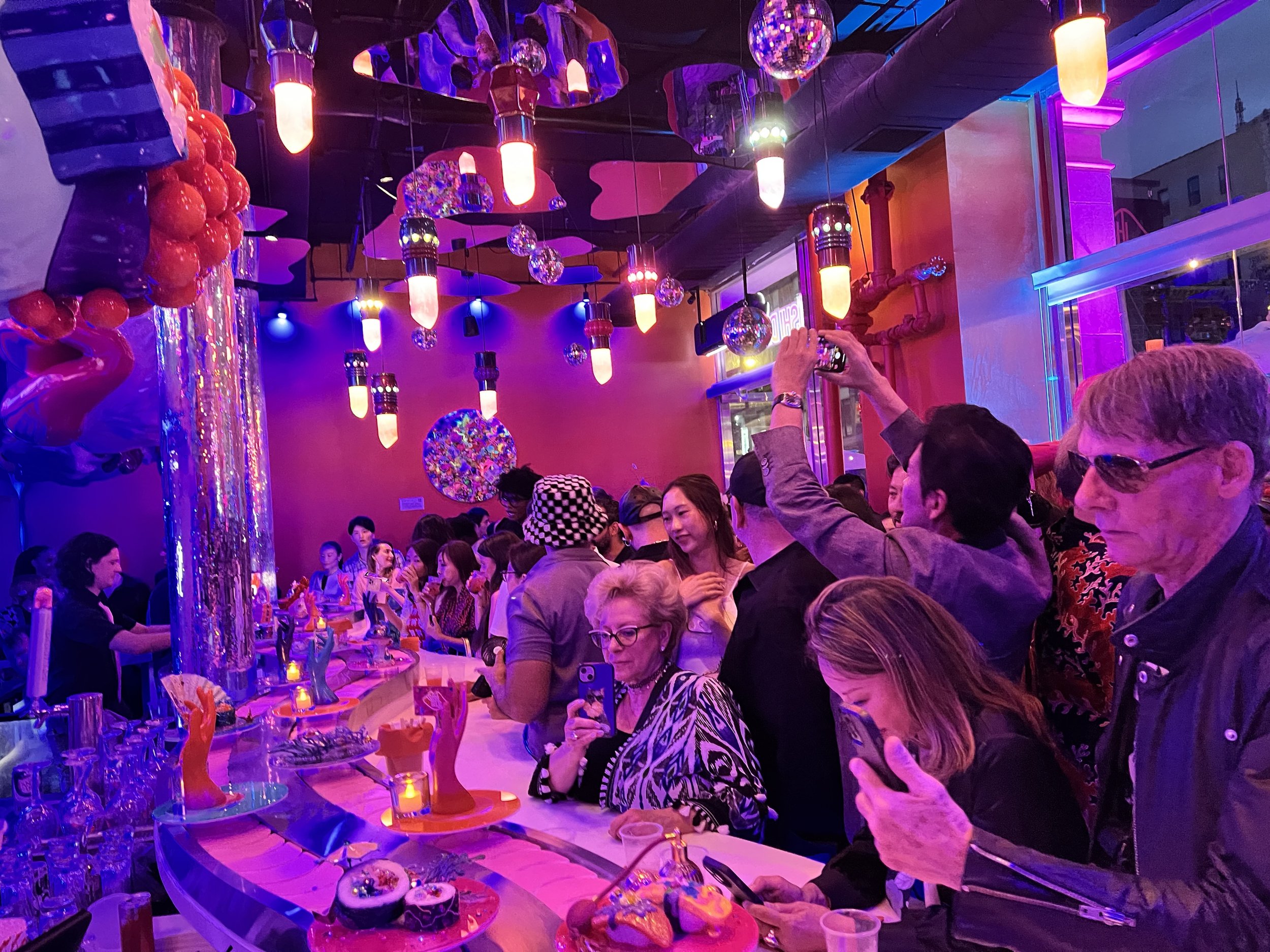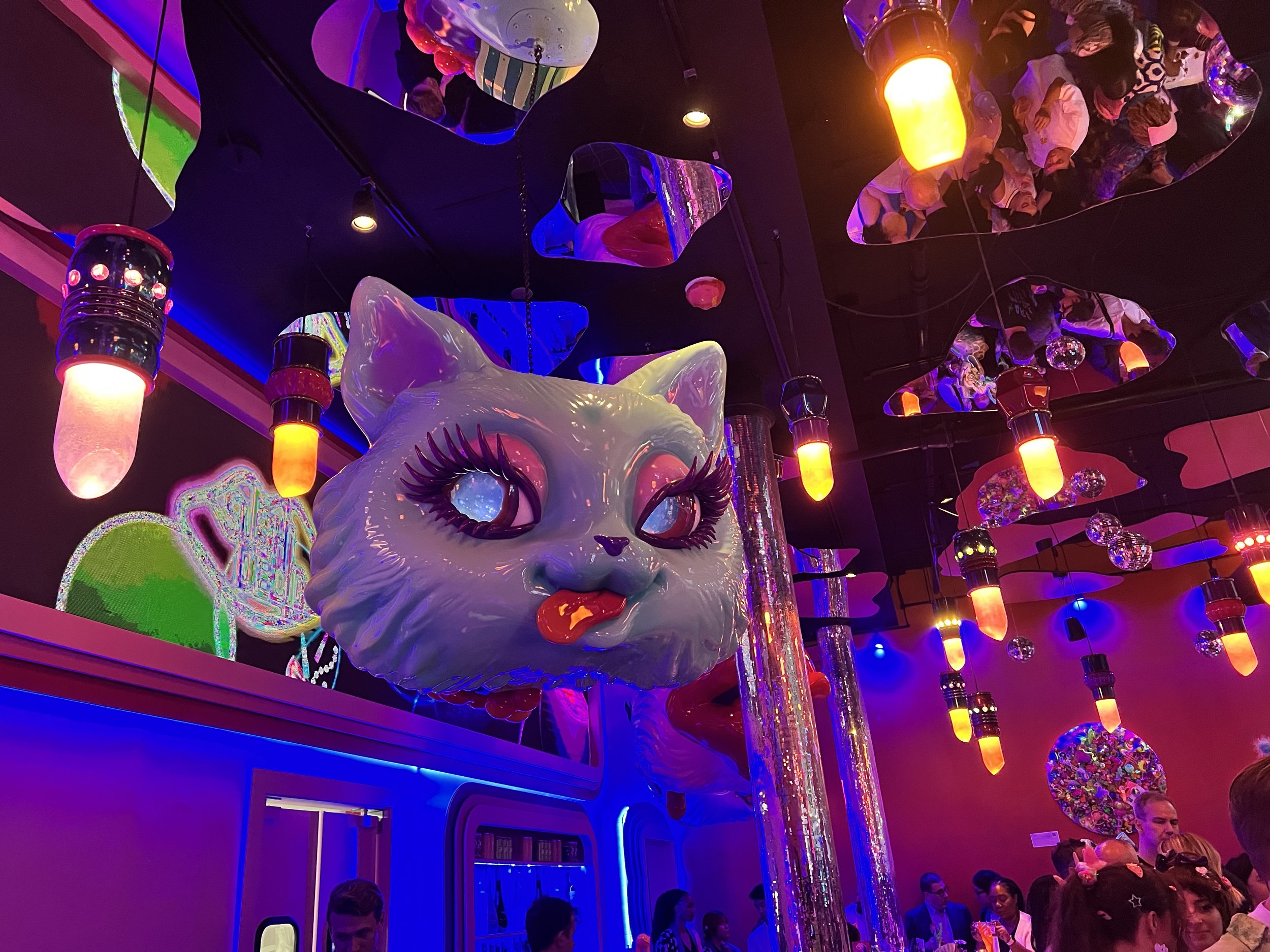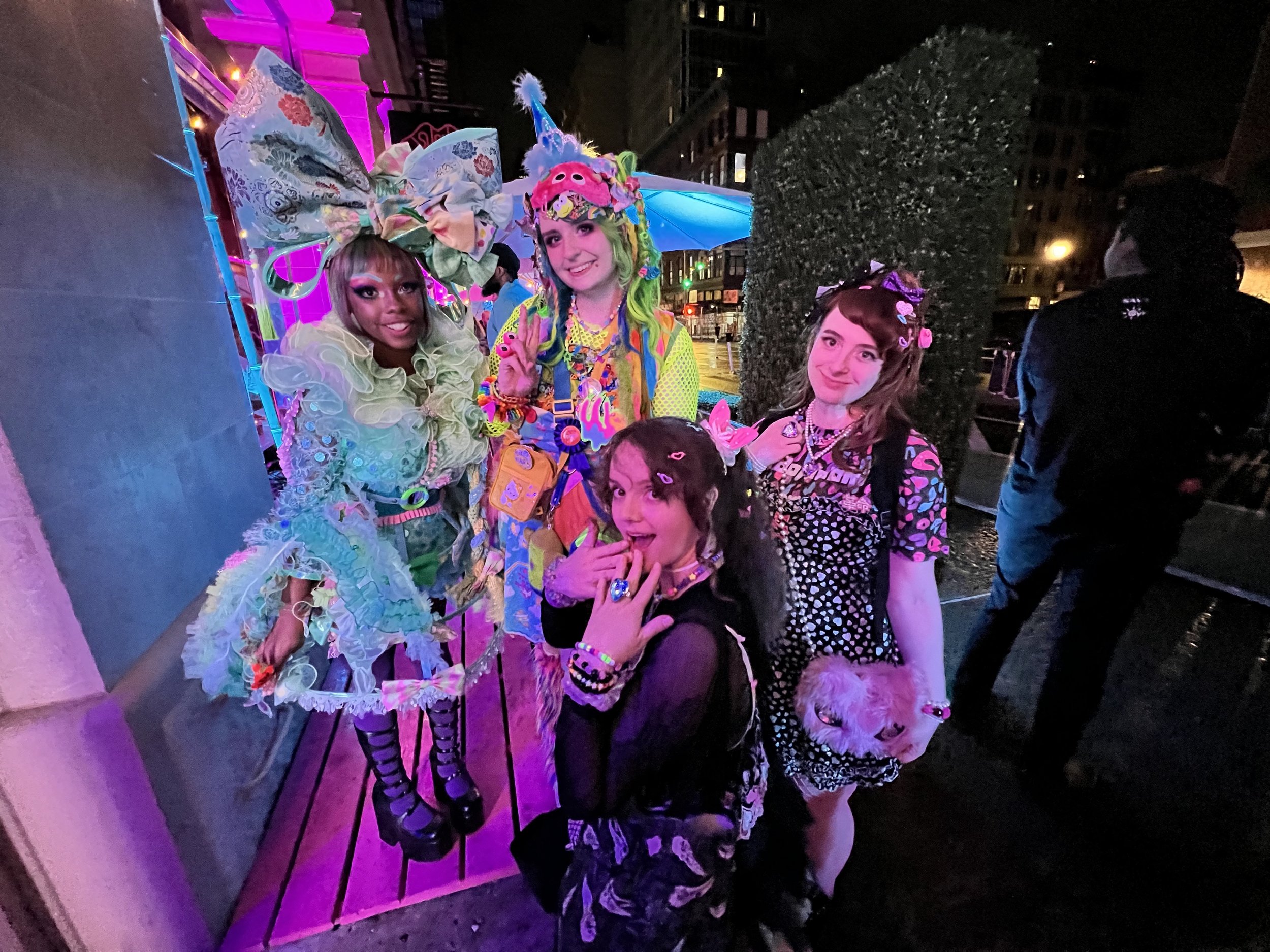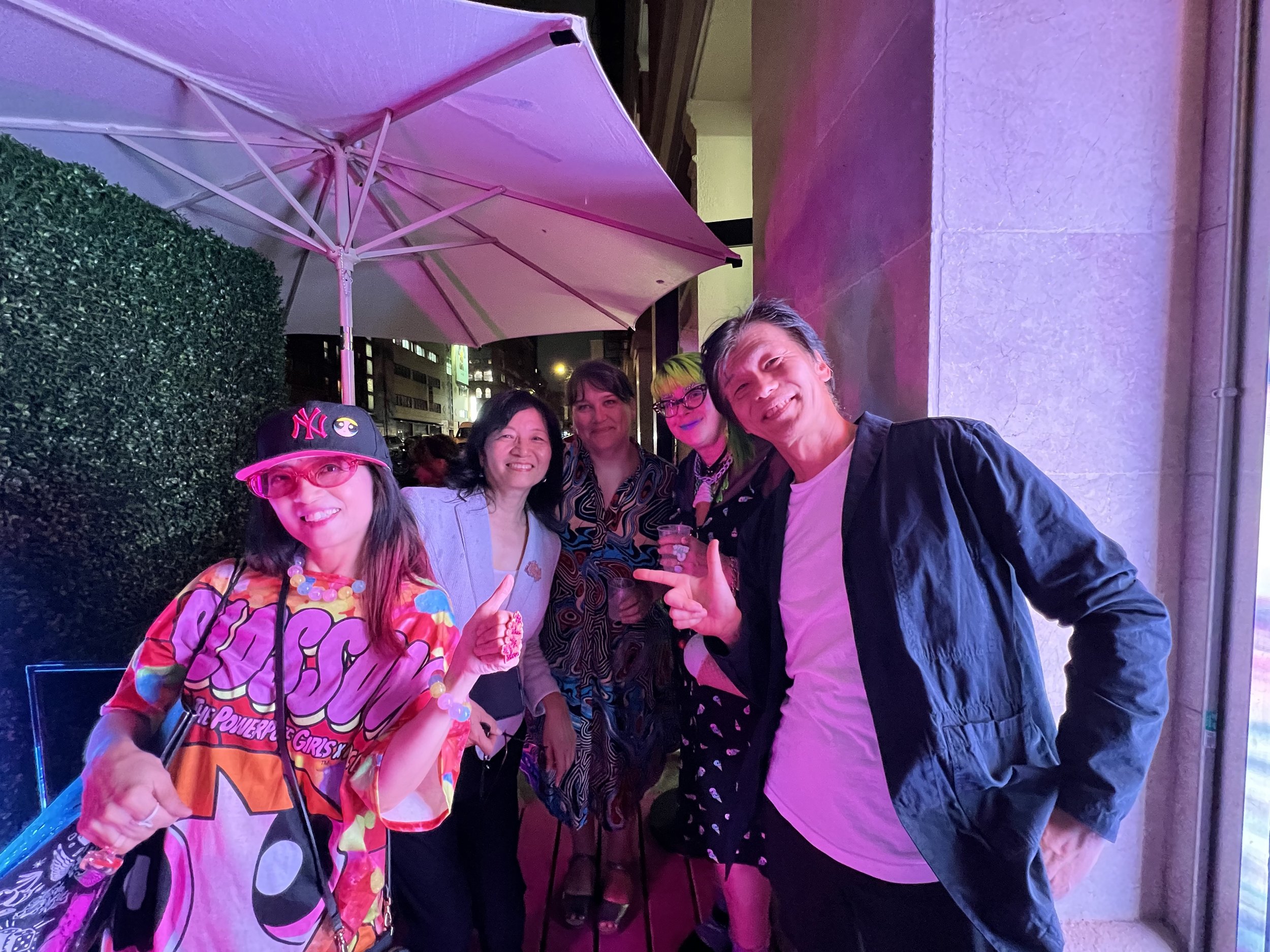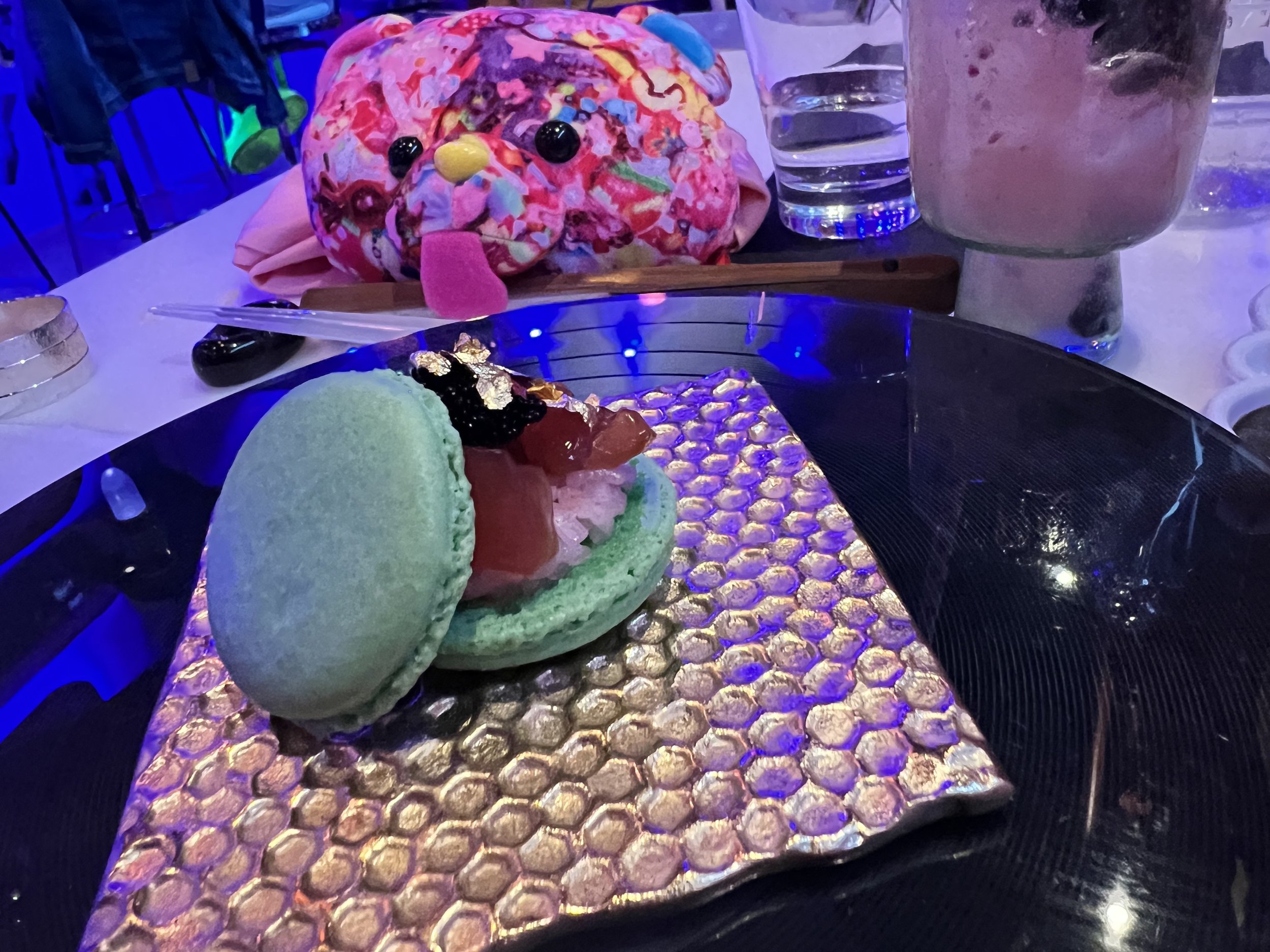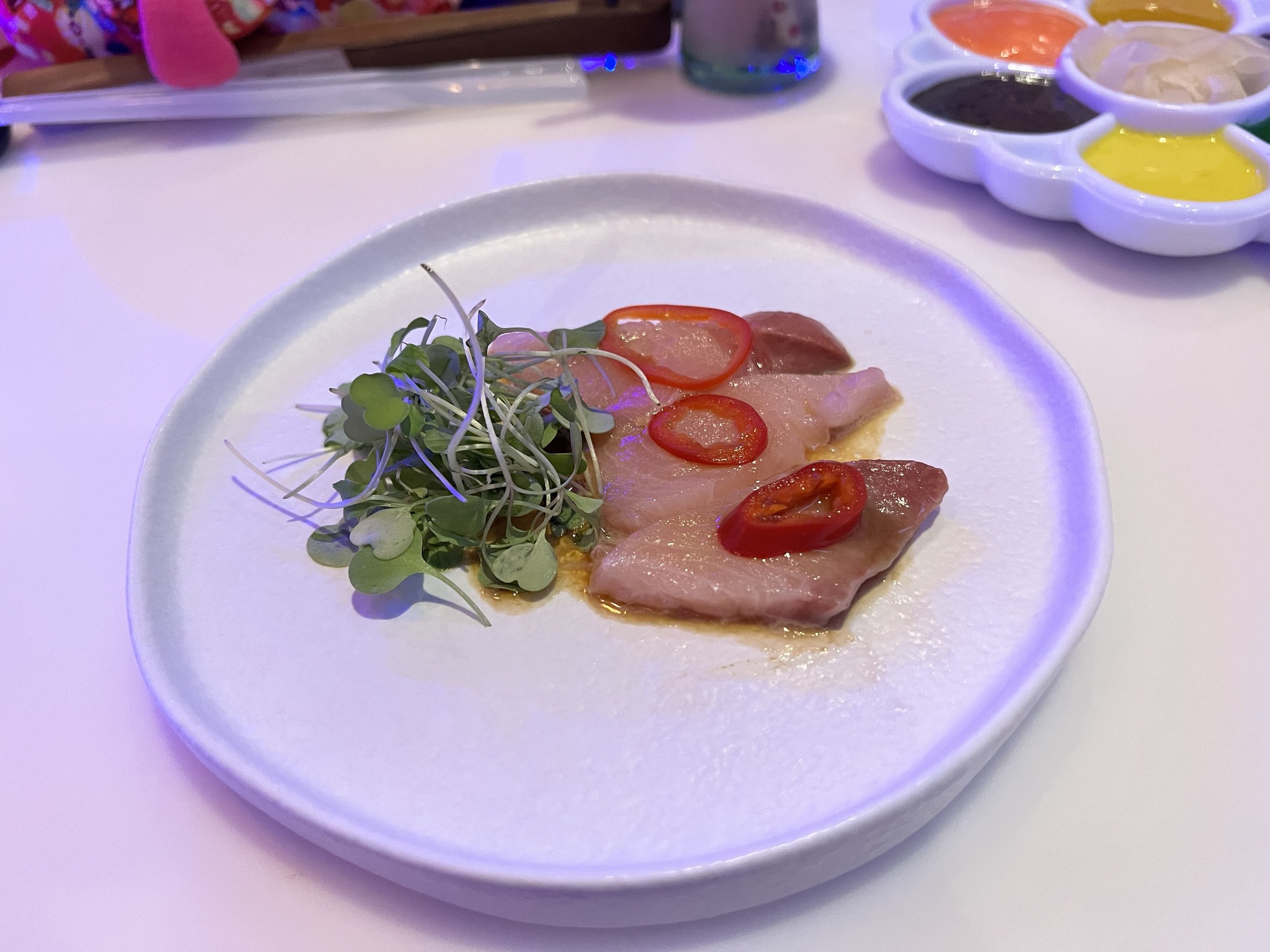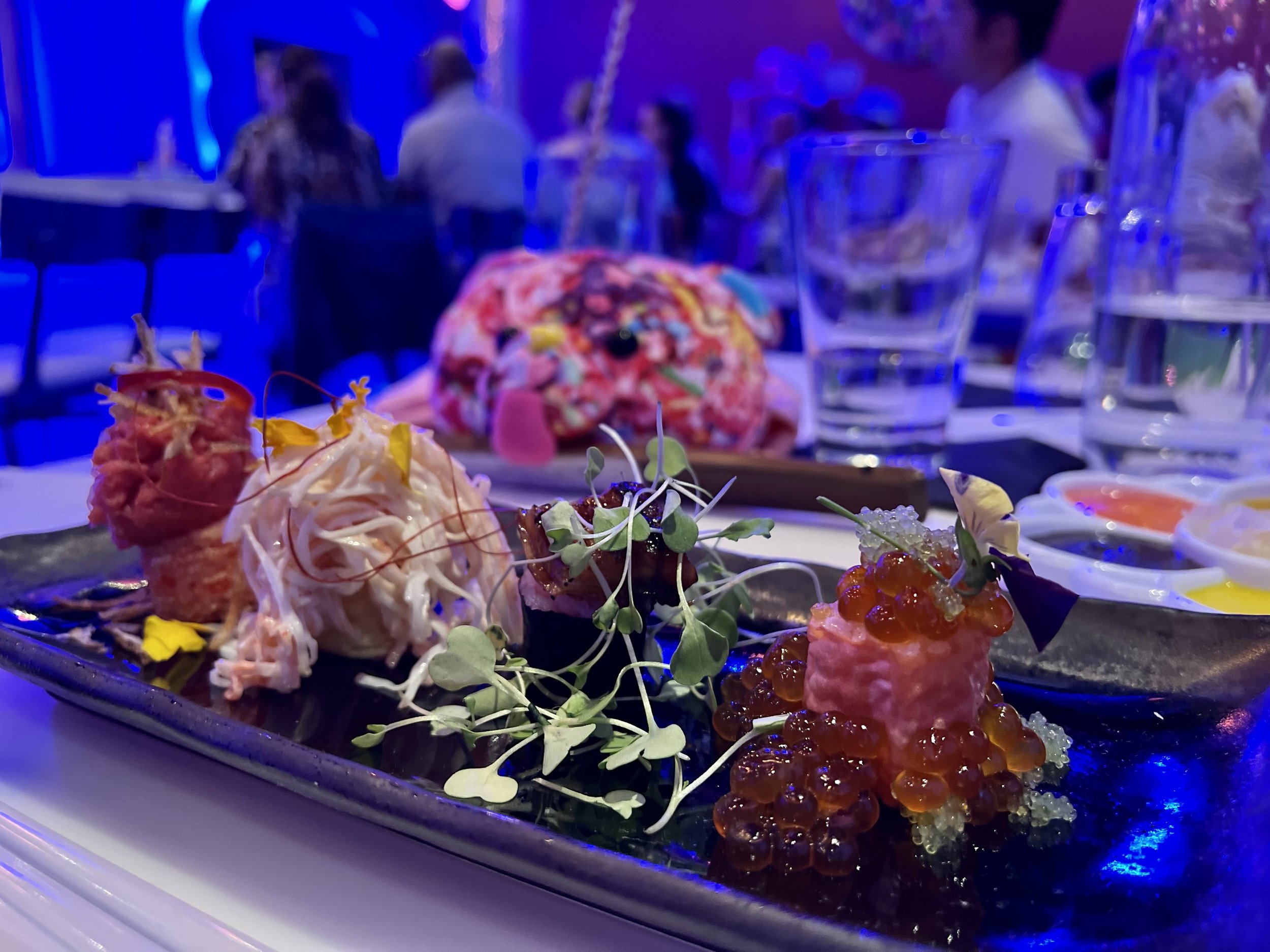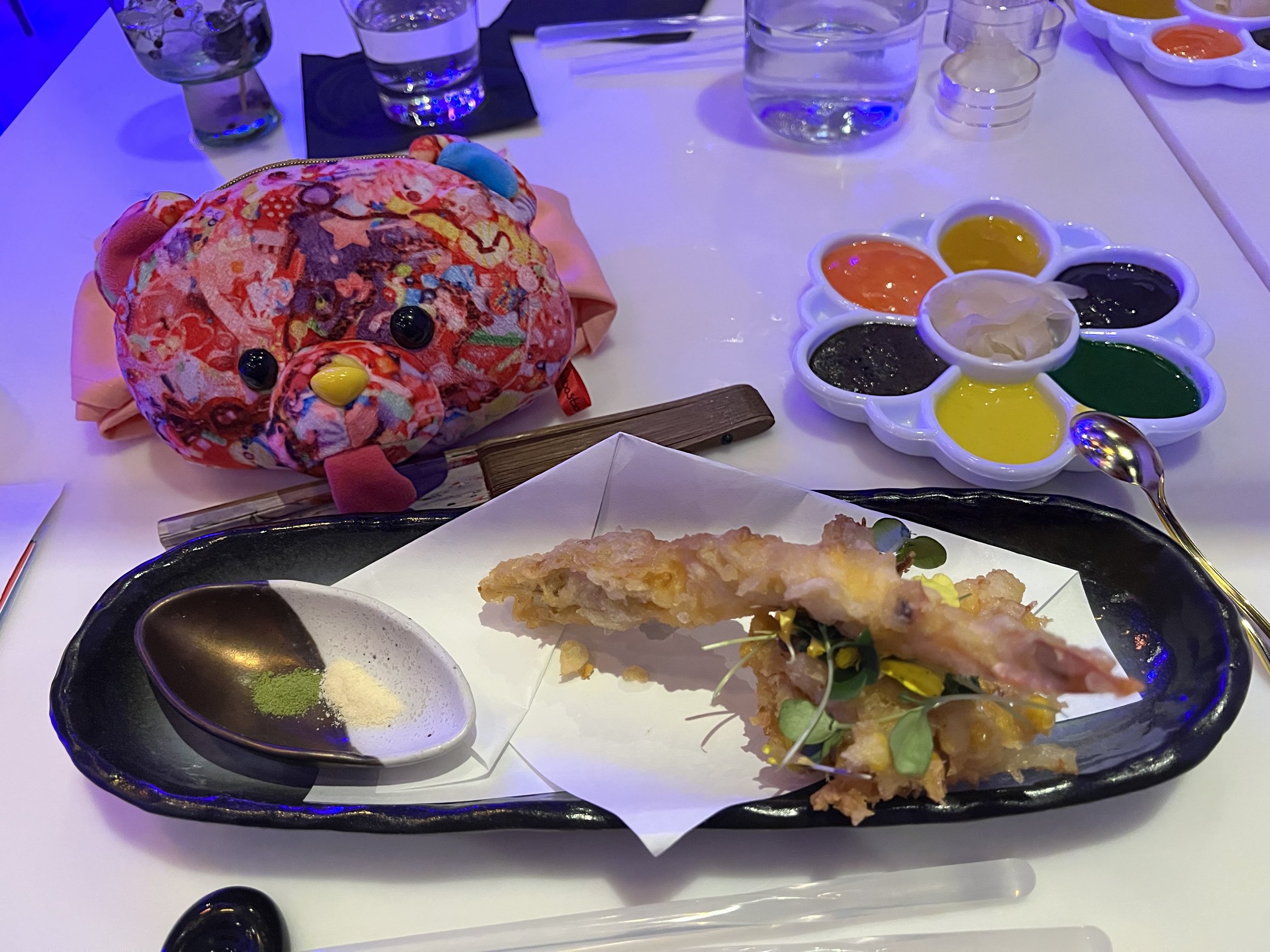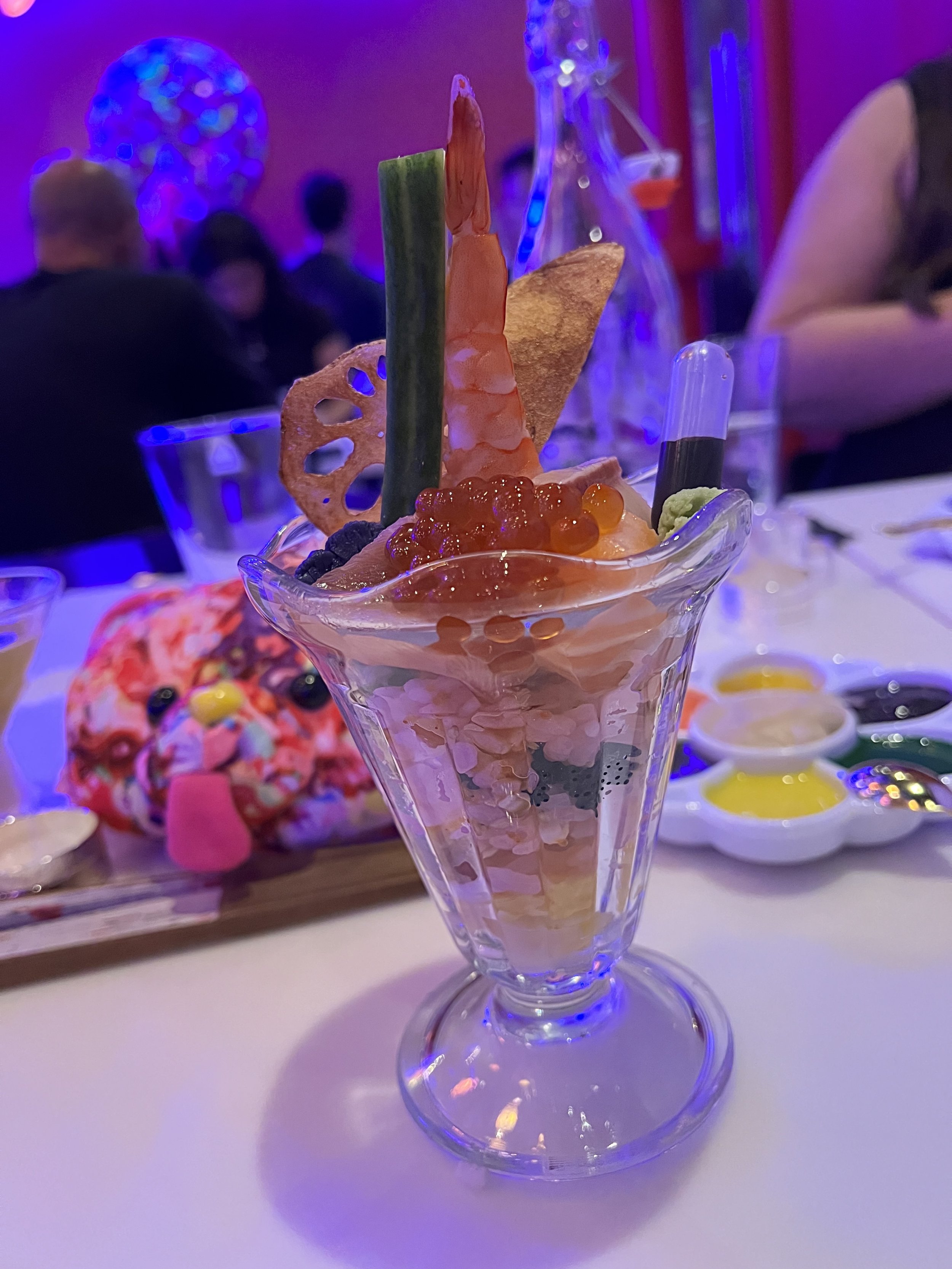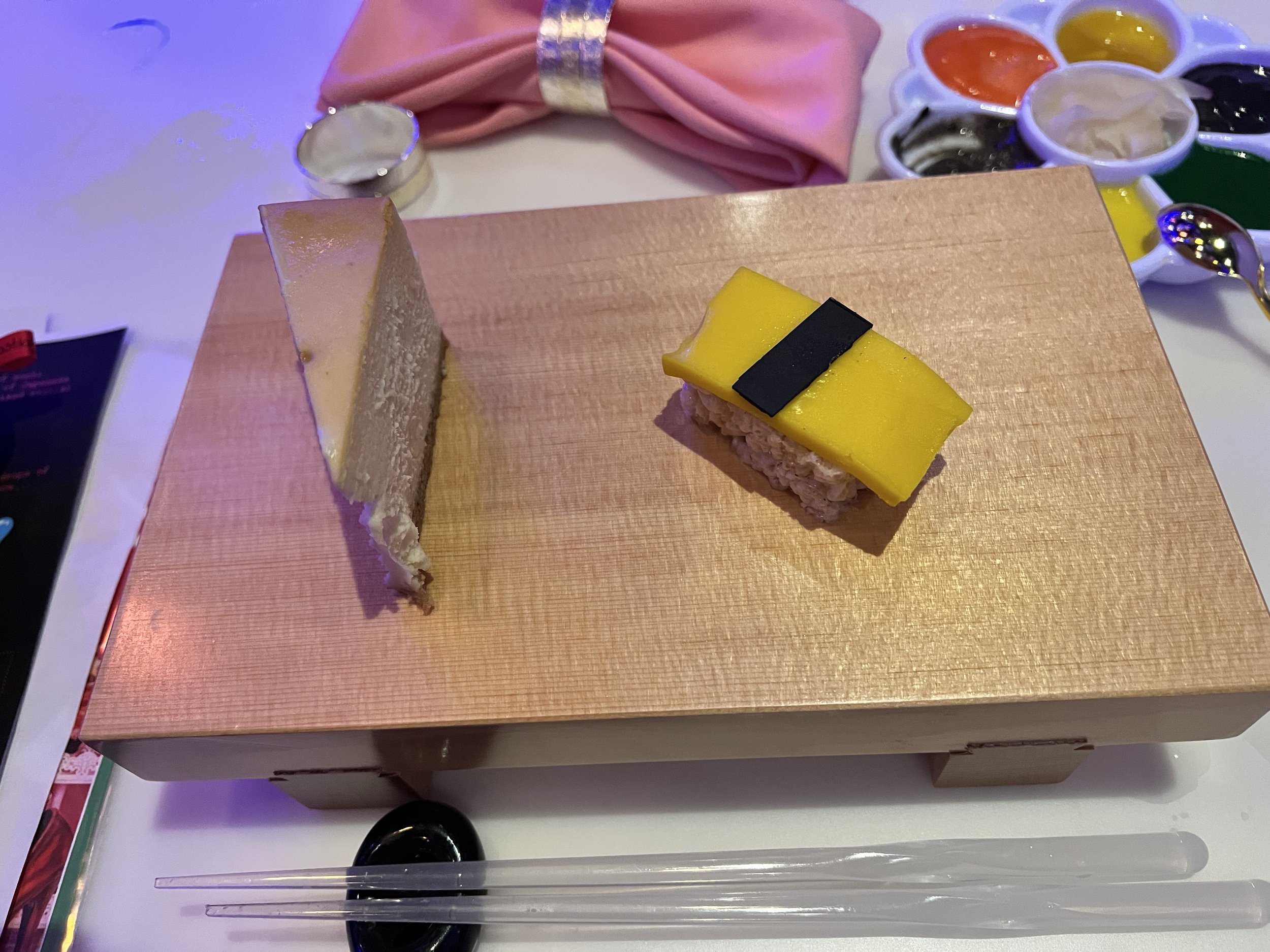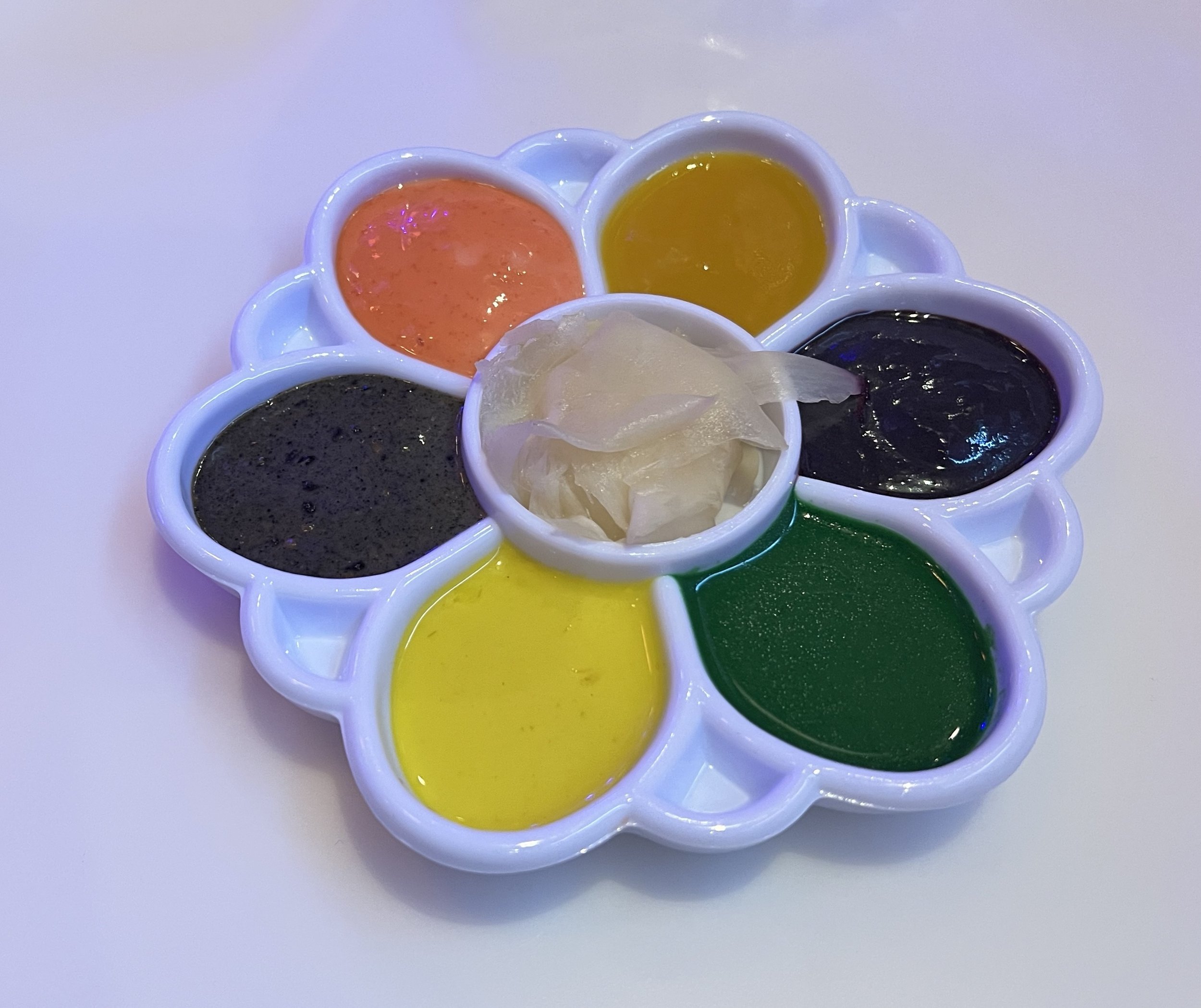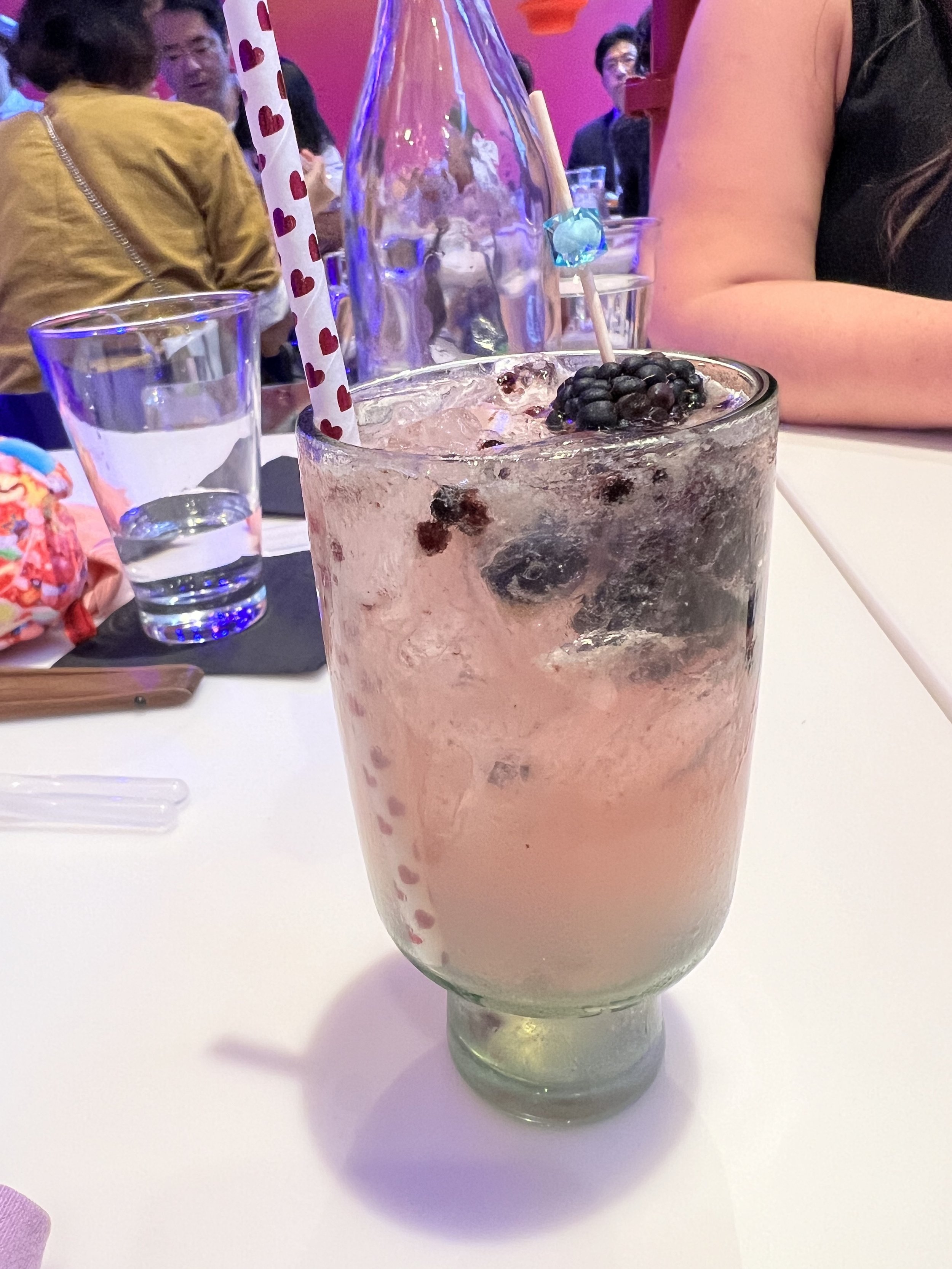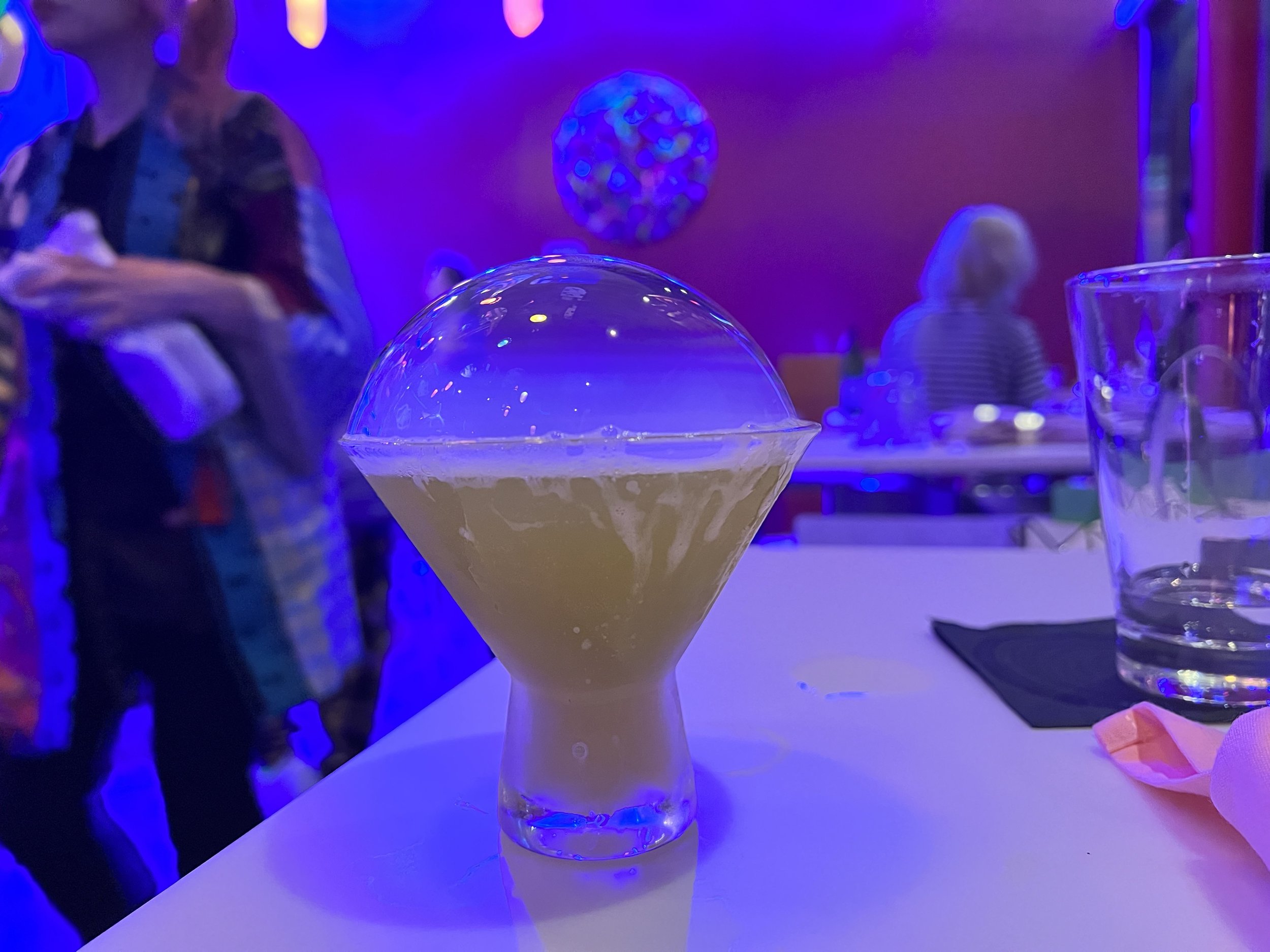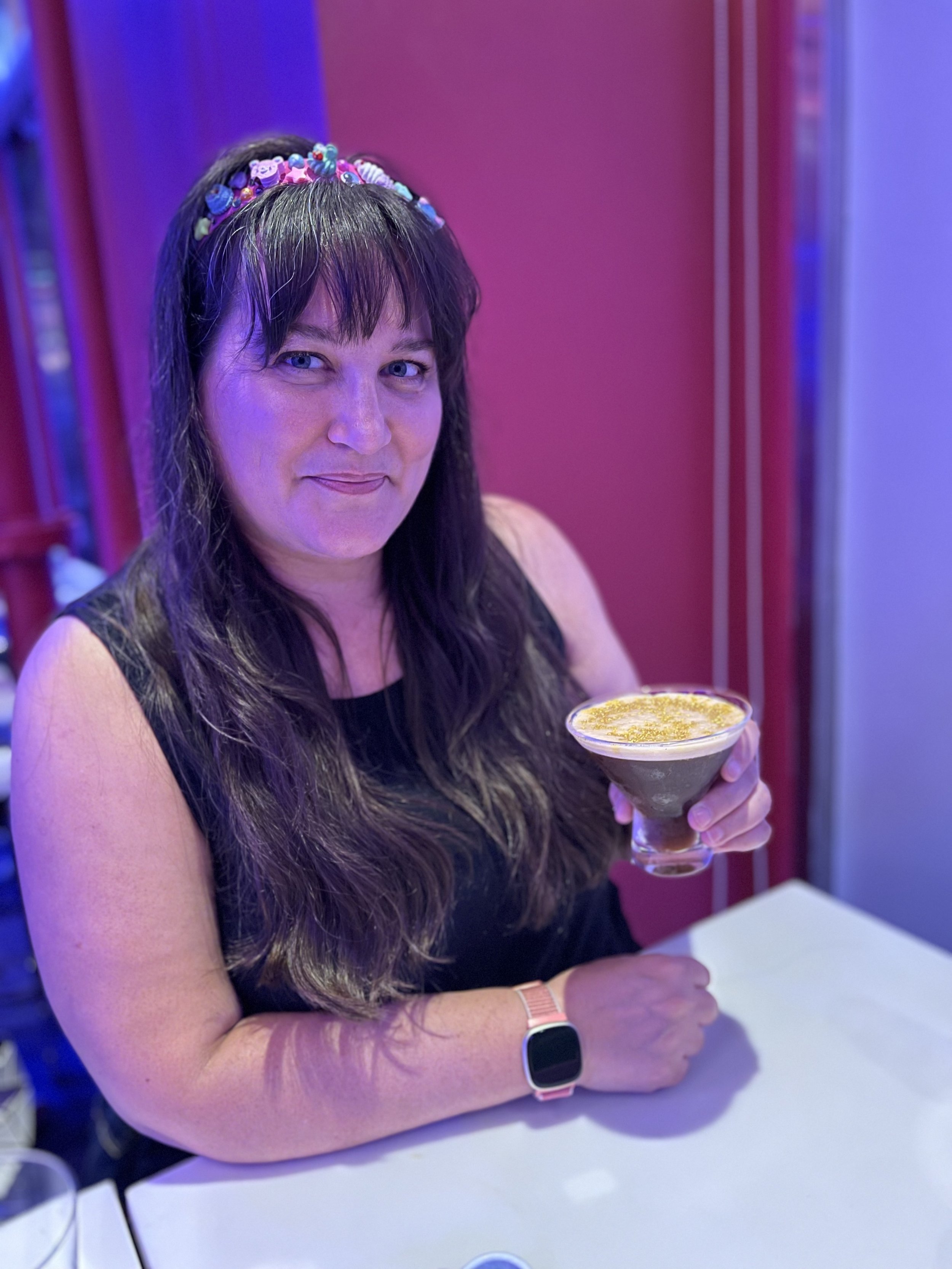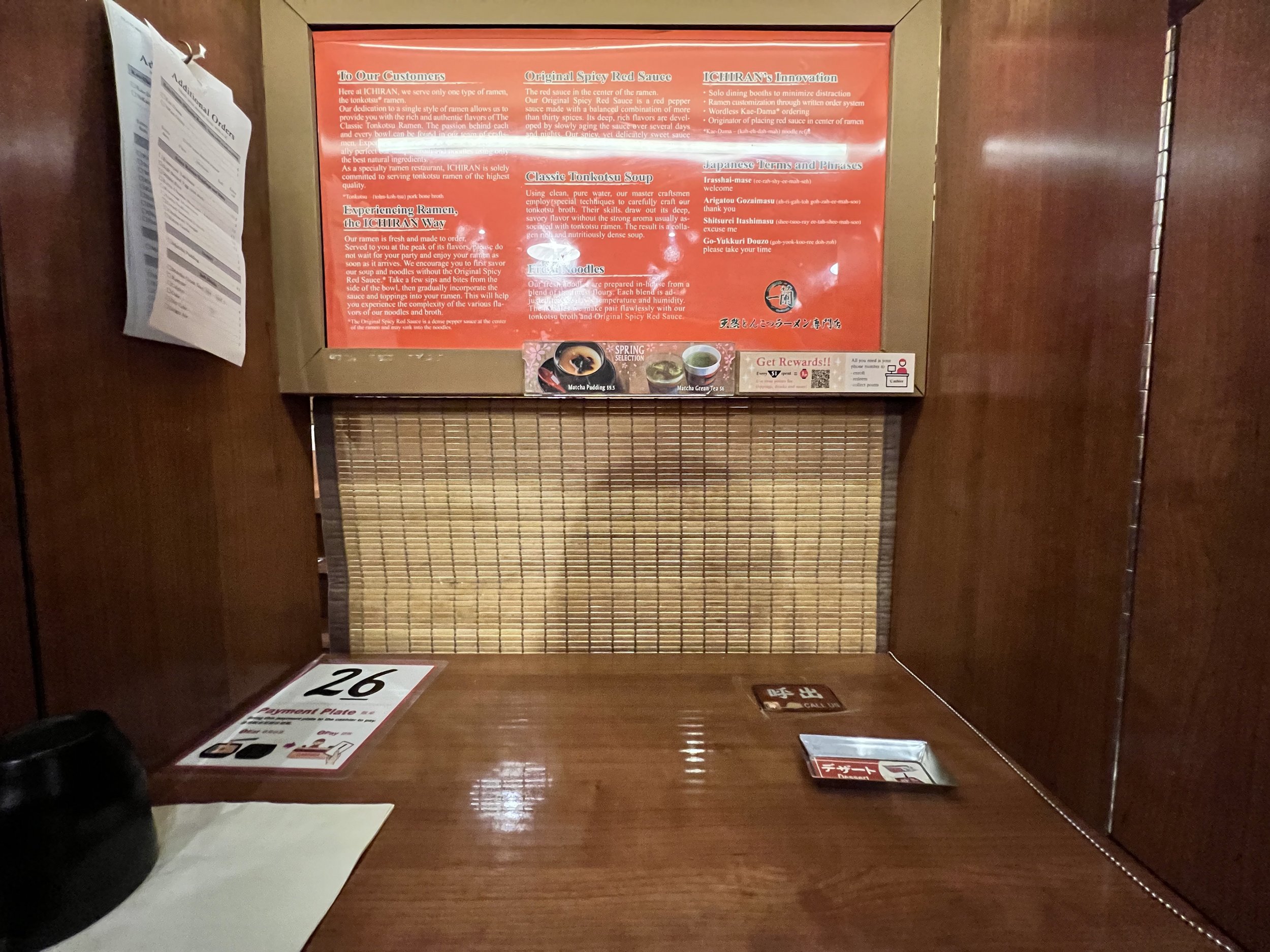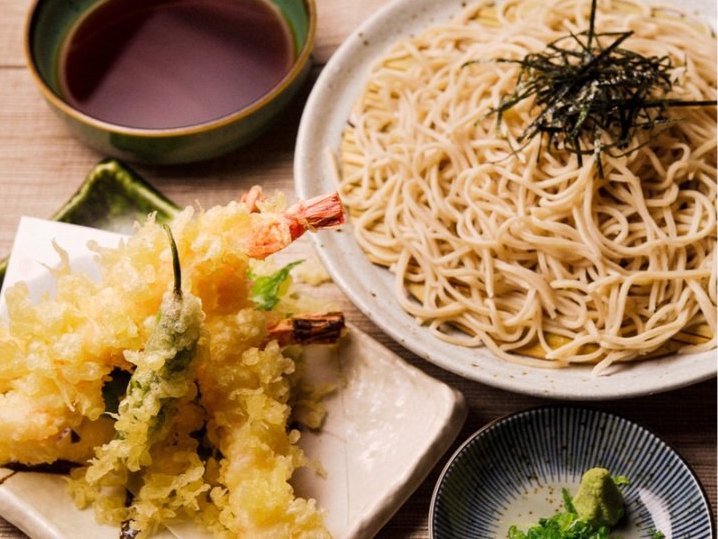Discover Okinawan Cuisine in NYC
Taste of Okinawa in NY Food Festival
Taste of Okinawa NY Food Festival
Enjoy the bounty of fresh foods from Okinawa during the Taste of Okinawa NY Food Festival, running from Friday, January 24 through Saturday, February 8. Ten member restaurants of the New York Japanese Restaurant Association (NYJRA) will feature various ingredients from Japan’s southernmost prefecture, including mozuku, a brown seaweed; shikuwasa, a lime-like citrus; and kokuto, an unrefined black sugar. Visit one or all the participating restaurants to introduce the delicious taste of Okinawa to your taste buds.
Participating Restaurants
a-un Brooklyn
156 Knickerbocker Avenue
Brooklyn, NY 11217
718-678-6628
Website: aunbrooklyn.com
Instagram: https://www.instagram.com/aunbrooklyn/
Menu items: Free Range Chicken Teriyaki, Acerola Chuhai
a-un’s Free Range Chicken Teriyaki
Kokuto and Shikuwasa Cocktail at Bozu
Bozu
296 Grand Street
Brooklyn, NY 11211
718-384-7770
Website: bozubrooklyn.com
Instagram: https://www.instagram.com/bozubrooklyn/
Menu items: Mozuku and Carrot Kakiage Tempura with Okinawa Sea Salt, Kuzuyose Tofu with Sea Grapes
Cha-An Teahouse
230 E. 9th Street, 2nd Floor
New York, NY 10003
212-228-8030
Website: chaanteahouse.com
Instagram: https://www.instagram.com/chaanteahouse/
Menu items: Kokuto Anmitsu, Matcha Shikuwasa Cocktail
Kokutou Anmitsu at Cha-an
Hasaki
210 E. 9th Street
New York, NY 10003
212-473-3327
Website: hasakinyc.com
Instagram: https://www.instagram.com/hasaki.nyc/
Menu items: Mozukusu, Okinawa Sour
Hi-Collar
231 E. 9th Street
New York, NY 10003
212-777-7018
Website: hi-collar.com
Instagram: https://www.instagram.com/hi_collar/
Menu items: Kokuto Crème Brulee, Okinawa Sour
Sakagura
211 E. 43rd Street, B1
New York, NY 10017
212-953-7253
Website: sakagura.squarespace.com
Instagram: https://www.instagram.com/sakagurany/
Menu items: Mozukusu, Okinawa Sour
Samurai Mama
205 Grand Street
Brooklyn, NY 11211
718-599-6161
Website: samuraimama.com
Instagram: https://www.instagram.com/samuraimama_bk/
Menu items: Mozuku and Carrot Kakiage Tempura with Okinawa Sea Salt, Kuzuyose Tofu with Sea Grapes
Samurai Papa
594 Lafayette Avenue
Brooklyn, NY 11216
718-398-8181
Website: samuraipapabk.com
Instagram: https://www.instagram.com/samuraipapa_bedstuy/
Menu items: Mozuku and Carrot Kakiage Tempura with Okinawa Sea Salt, Kuzuyose Tofu with Sea Grapes
Sushi Ryusei
216 E. 29th Street
New York, NY 10016
212-983-8880
Website: sushiryusei.com
Instagram: https://www.instagram.com/sushiryusei/#
Menu items: Calamari Salad with Shikuwasa Dressing, Fluke Teriyaki
Mozuku Tempura Udon at Wasan
Wasan Brooklyn
440 Bergen Street
Brooklyn, NY 11217
718-864-3549
Website: wasan-ny.com
Instagram: https://www.instagram.com/wasanbrooklyn/
Menu items: Mozuku Tempura with Deep Ocean Water Salt and Curry Salt, Mozuku Tempura Udon
Ingredients
Shikuwasa Citrus Juice
Acerola Syrup
Sea Grapes
Mozuku Seaweed
Teriyaki Sauce
Black Sugar
Deep Ocean Water Salt (Kumi no Shio)
Orion Beer
Health Properties of Okinawan Cuisine
Okinawa is a Blue Zone, an area with some of the longest living people in the world. Their longevity is attributed to the prefecture’s subtropical climate, communities’ supportive social networks, and a diet consisting of the items that are featured in a Taste of Okinawa. For example, mozuku is believed to be beneficial to digestive health and the immune system, while kokuto is rich in vitamins and minerals such as potassium and calcium. Including shikuwasa in your diet is said to enhance metabolism, and sea grapes (umibudo) contains fiber and antioxidants.
“For this fair, we have carefully selected a variety of ingredients nurtured in Okinawa’s rich natural environment. We hope many people will visit the participating restaurants and experience the charm of Okinawa firsthand. Don’t miss this opportunity to savor the authentic tastes of Okinawa in New York City!”
Satomi Watanabe
H.I.S International Tours (NY) Inc.
About New York Japanese Restaurant Association
NYJRA elevates Japanese cuisine in the U.S. by collaborating with Japanese restaurants and developing markets. The organization supports education programs for restaurants on topics such as the history of Japanese food, human resources tips, and culinary techniques, as well as assisting Japanese restaurants to address the major challenges they face today. To learn more about NYJRA, please visit their website.
Support JapanCulture•NYC by becoming a member! For $5 a month, you’ll help maintain the high quality of our site while we continue to showcase and promote the activities of our vibrant community. Please click here to begin your membership today!
Japanese Restaurants in NYC Earn Michelin Stars
Michelin released its 2023 New York guide on November 7, and of the 71 restaurants on the list, 20 are Japanese. Well, technically two of the restaurants are considered French, but they are run by Japanese chefs. (I’m taking liberties in the name of All Things Japanese in New York City.) Sushi Noz and odo earned promotions from one star to two, while Sushi Ginza Onodera, which closed this summer, and East Village sushi outpost Kanoyama failed to make the list.
Famed sushi restaurant Masa continues to sit atop the list with three stars. As usual, most of the Michelin Guide entries are pricey sushi spots, while a few serve kaiseki fare. Tempura Matsui and Torien are the lone tempura and yakitori restaurants, respectively.
If you’re not into spending $600 on sushi, you’ll find the more practical Michelin Bib Gourmands at the bottom of this list.
Here are the 18 Japanese and two French/Japanese restaurants with Michelin stars for 2023:
Three Stars ("Exceptional cuisine")
Masa
Type of Cuisine: Sushi
10 Columbus Circle, Time Warner Center
Website: https://www.masanyc.com/
In February of this year, Marian Bull reported in Food & Wine that not only is Masa the most expensive sushi restaurant in the US, “it is arguably the most expensive restaurant, period.” Despite an omakase price tag of $750 (exclusive of beverage and tax), Masa has consistently earned three stars since 2006, when the Michelin Guide started covering New York City restaurants.
Sushi Noz in the Upper East Side
Two Stars (“Excellent cooking”)
odo (up from one star in 2022)
Type of cuisine: Kaiseki
17 W. 20th Street
Website: https://www.odo.nyc/
In addition to crafting high-end seasonal kaiseki for lunch and dinner, Chef Hiroki Odo hosts art exhibitions in THE GALLERY, which is attached to the restaurant.
Sushi Noz (up from one star in 2022)
Type of cuisine: Edomae Sushi
181 E. 78th Street
Website: https://www.sushinoz.com/
Experience omakase at an eight-seat, 200-year-old hinoki counter run by Chef Nozomu Abe, who was inspired by the fish from his grandfather’s Hokkaido seafood company.
Hirohisa
One Star ("High-quality cooking”)
Hirohisa
Type of cuisine: Kaiseki
73 Thompson Street
Website: https://www.hirohisa.nyc/
Chef Hirohisa Hayashi uses exceptional ingredients for an incredible seasonal kaiseki experience.
ICCA
Type of cuisine: Sushi
20 Warren Street
Website: https://icca.nyc/
Chef Kazushige Suzuki serves only fish from Japan for his omakase and tasting menu.
Jōji (new)
Type of cuisine: Sushi
1 Vanderbilt Avenue
Website: https://www.jojiny.com/
Chef George Ruan leads an omakase experience that pairs premium sake and fine wines with seasonal ingredients.
Kosaka
Type of cuisine: Sushi
220 W. 13th Street
Website: https://www.kosakanyc.com/
The Michelin Guide says Kosaka “offers a stellar omakase in an elegant setting.”
l’abeille
Type of cuisine: French (with Japanese sensibilities)
412 Greenwich Street
Website: https://www.labeille.nyc/
Executive Chef Mitsunobu Nagae is a veteran of Michelin-starred restaurants, including Château Restaurant Joël Robuchon in Tokyo.
Noda
Type of cuisine: Sushi
27 W. 20th Street
Website: https://www.noda.nyc/
Chef Shigeyuki Tsunoda serves a 20-course omakase twice a night.
Noz 17
Type of cuisine: Sushi
458 W. 17th Street
Website: https://www.noz17.com/
At this companion restaurant to Sushi Noz, Chef Junichi Matsuzaki, Chef Nozomu Abe’s protégé, serves a thirty-course, Edomae-style sushi tasting menu in this seven-seat space in Chelsea.
Restaurant Yuu (new)
Type of cuisine: French contemporary, Japanese
55 Nassau Avenue, Brooklyn
Website: https://www.yuunewyork.com/restaurantyuu/
An alumnus of Guy Savoy in Paris and Mifune in Manhattan, Chef Yuu Shimano serves French dishes that highlight Japanese ingredients. A recent addition to the emergence of Japanese business in Greenpoint, Restaurant Yuu is the only new Brooklyn restaurant to receive a star this year.
Shion 69 Leonard Street
Type of cuisine: Edomae Sushi
60 Leonard Street
Website: https://www.69leonardstreet.com/
Formerly of Sushi Saito in Tokyo (three Michelin stars) Executive Chef Shion Uino creates an Edomae-style experience in an intimate setting.
Sushi Amane
Type of cuisine: Sushi
245 E. 44th Street
Website: https://www.sushi-amane.com/
The Michelin Guide reports that daily fish deliveries to Sushi Amane allows “guests to experience the freshest and most seasonally minded product possible.”
Sushi Ichimura (New)
Type of cuisine: Sushi
412 Greenwich Street
Website: https://www.sushiichimura.nyc/
Legendary Executive Chef Eiji Ichimura, formerly of David Bouley’s Brushstroke and earned two Michelin stars at Uchu, helms this omakase experience at l’abeille.
Sushi Nakazawa
Type of cuisine: Sushi
23 Commerce Street
Website: https://www.sushinakazawa.com/new-york
Everyone’s favorite former Jiro Dreams of Sushi apprentice continues to earn accolades of his own.
Sushi Yasuda
Type of cuisine: Sushi
204 E. 43rd Street
Website: https://www.sushiyasuda.com/index.html
The Guide lauds Sushi Yasuda for its “classically assembled sushi,” saying, “Each item is handled with care, highlighting their robust flavor.”
Tempura Matsui
Type of cuisine: Tempura
222 E. 39th Street
Website: https://www.tempuramatsui.com/
Tempura Matsui is the first authentic Japanese restaurant in New York that focuses only on tempura.
Torien
Type of cuisine: Yakitori
292 Elizabeth Street
Website: https://torien-nyc.com/
Chef Yoshiteru Ikegawa presents a 13-course yakitori experience devoted to all parts of the chicken.
Tsukimi
Type of cuisine: Kaiseki
228 E. 10th Street
Website: https://www.tsukimi.nyc/
“Tsukimi” means “moon viewing” in Japanese, and this seasonal Japanese kaiseki restaurant pays homage to the mid-autumn harvest festival.
Yoshino
Type of cuisine: Sushi
342 Bowery
Website: https://www.yoshinonewyork.com/
This LES sushi spot is named after the chef’s father’s hometown in Nara Prefecture.
Tonchin
Bib Gourmands (“good quality, good-value cooking”)
Michelin defines “good value” as spending around $49 or less—excluding tax and gratuity—for two courses and a glass of wine or dessert. The Guide considers these restaurants “places that serve phenomenal meals that don’t break the bank.”
DOMODOMO
Type of Cuisine: Sushi
138 W. Houston Street
Website: https://www.domodomonyc.com/
Nami Nori
Type of Cuisine: Temaki
33 Carmine Street
Website: https://naminori.nyc/
Shalom Japan
Type of Cuisine: “Authentically inauthentic Jewish and Japanese food”
310 S. 4th Street, Brooklyn
Website: https://shalomjapannyc.com/
Soba-ya
Type of Cuisine: Soba Noodles
229 E. 9th Street
Website: https://sobaya.square.site/
Tonchin
Type of Cuisine: Ramen
13 W. 36th Street
Website: https://www.tonchinnewyork.com/
For a complete list of all the New York restaurants that earned stars—not just the Japanese ones—please visit Michelin’s website.
Support JapanCulture•NYC by becoming a member! For $5 a month, you’ll help maintain the high quality of our site while we continue to showcase and promote the activities of our vibrant community. Please click here to begin your membership today!
“Immersive Kawaii Experience” at Sushidelic
What pops into your mind when you think of a typical sushi restaurant? Serene and minimalist ambiance with a beautifully crafted hinoki wood bar at which a limited number of customers watch a highly trained sushi chef skillfully craft pieces of nigiri one by one.
Sushidelic, a new sushi restaurant that opened in SoHo on June 28, turns that idea on its head.
The brainchild of Japanese artist Sebastian Masuda, Sushidelic—a portmanteau of “sushi” and “psychedelic”— is the opposite of how anyone would perceive a sushi restaurant. And it’s delightful.
Multidisciplinary Talent
Masuda is an artist who exhibits worldwide. He’s the founder of 6%DOKIDOKI, a Harajuku staple of kawaii toys and Decora fashion and accessories since the mid-1990s. In 2011 he served as the art director of J-pop idol Kyary Pamyu Pamyu’s music video for her hit song “PonPonPon.” The King of Kawaii Culture has added another job title to his impressive resume: restaurateur.
Rather, Masuda is re-adding the job title. From 2015 until 2021, Masuda and DD Holdings, a Japanese company that specializes in managing themed restaurants, ran the Kawaii Monster Café in Tokyo. Although reviews about the food weren’t exactly complimentary, the Kawaii Monster Café was a tourist destination, especially for fans of Masuda’s art and Harajuku’s subculture.
If you’re familiar with Masuda, you know that vibrant colors, 1970s plastic toys, eclectic faux fur, and all things kawaii find their way out of his brain and into the world in a jumbled and yet somehow cohesive manner. In his mind, sushi looks like dessert, and dessert looks like sushi. His imaginings have come to life at Sushidelic in the forms of macaron sushi and chirashi parfaits. Masuda wants his guests to enjoy “an immersive kawaii experience,” and he has created the perfect vehicle with which to accomplish it.
When you enter Sushidelic, the first thing you’ll notice is that the decor isn’t anything you’d imagine from a sushi restaurant. The light fixtures are upside-down lipstick tubes. There are cloud-shaped mirrors on the ceiling. The giant heads of three cats hang above the bar, and they have names: Tipsy Cat, Lovely Cat, and Sexy Cat. The slowly rotate to reveal the pieces of sushi and a large pair of red lips on the back. To tie in the theme, the hostesses are called the “Delic Cats,” each wearing an outfit of Masuda’s design, matching the looks of Tipsy, Lovely, and Sexy.
The restaurant features a conveyor belt in the form of a long tongue emerging from a mouth-shaped opening in the kitchen wall. Sushidelic stands apart from average kaiten sushi spots where customers grab desired pieces of sushi off a rotating belt and have the color-coded plates tallied up at the end to calculate the bill. Instead, the tongue-belt carries Masuda’s artwork and beverages making their way from playful bartenders to customers sitting at the counter.
Unlike the kaiten sushi concept, Sushidelic’s offering is a six-course omakase dinner that Masuda calls “Pure Imagination.” A palette of six sauces accompanies the meal: black sesame, yuzu, mango and ginger, wasabi, spicy mayo, and a blueberry sauce to drizzle on dessert. It’s best to taste each piece of sushi first before adding any of the sauces, then experiment with the different flavors.
“Pure Imagination” Omakase Menu
Macaron Sushi
Macaron, tuna, sushi Rice
Hamachi
Hamachi, Ponzu, truffle oil, micro radish greens
Ape-Maki (Appetizer Rolls)
California roll with crab cake, salmon with salmon roe, eel tamago roll, and spicy tuna over crispy rice
Tempura
Shrimp, seasonal vegetable kakiage with matcha and yuzu salt
Chirashi Parfait
Mixed sashimi over pink sushi rice with marinated vegetables
EX-Sushi Desserts
Yuzu sushi over Rice Krispies dessert and sake cheesecake
Vegetarian menu is available on request.
I envisioned the creative plating, of course, but great food? Not really. Perhaps I was influenced by the negative reviews I read about Kawaii Monster Café, but I wasn’t expecting this meal to be as delicious as it was. I should’ve known better; private chef Abe Hiroki of EN Japanese Brasserie fame consulted with Masuda and his team of chefs to create dishes that are as flavorful as they are aesthetically pleasing. If I were to name one week link in the six courses, it would have to be the tempura. Although good, it had no Wow factor. My favorite is the chirashi parfait in both presentation and taste.
Beverages
Beer (including Japanese beers such as Echigo, Kizakura Kyoto, and Orion), wine, and sake (including Brooklyn Kura’s #14) are available from the bar, but the cocktails are the stars of the beverage show. I had the Lychee Berry Smash and the Matcha Tea-tini, which is a production in and of itself.
Sushidelic is indeed the immersive kawaii experience that Masuda wants us all to have. The art, style, and atmosphere are something you won’t see anywhere else. And at $85, it’s at a price point that can’t be beat in New York City.
So, the big question is this: Is Sushidelic sustainable? Will locals tire of the show and move on to the next big thing? Masuda’s fans in the Kawaii Community were out in full force at Sushidelic’s opening party, some traveling from as far away as Pennsylvania, but will they be regular customers? No one knows if the novelty of this novel concept will fade. For now, Masuda’s Kawaii Monster Café is all grown up and starting to live its best life in SoHo.
Details
Sushidelic is located at 177 Lafayette Street (between Broome and Grand Streets in SoHo)
Hours: Dinner Tuesday through Saturday from 5:00 p.m. until 11:00 p.m. (last seating 10:00 p.m.)
Make reservations through Resy but act fast because all seats are booked through July 18 (at time of publishing).
Check out their website and follow them on Instagram.
For All Things Japanese in New York City, become a member of JapanCulture-NYC.com
and follow @JapanCultureNYC on Instagram, Twitter, and Facebook!
Solo Dining Bliss: Discovering ICHIRAN Ramen's Tranquil Hideaway in Times Square
Nestled amidst the neon and noise of Times Square, ICHIRAN Ramen beckons with a serenity that stands apart from the bustling streets of its surroundings, enveloping diners in an atmosphere that feels worlds away.
Considered the best tonkotsu ramen in the world, ICHIRAN began in 1960 as a family-owned ramen stall in Fukuoka in Western Japan. Since then, President and CEO Manabu Yoshitomi has grown the business to 83 locations throughout Asia and three right here in New York City. Along with an original style and flavor of ramen, Yoshitomi created a unique dining experience. Diners sit in individual, partitioned cubicles that separate them from other guests so that customers focus only on the ramen that’s placed before them.
Recently, ICHIRAN invited me to a tasting at their Times Square location during regular business hours, where I embarked on a solo dining experience unlike any other. Knowing that ICHIRAN’s specialty is classic tonkotsu ramen—my personal favorite—I was intrigued by how they would combine their culinary delights with their unique concept of individual cubicles to provide a peaceful and delicious lunchtime retreat.
Electronic booth seating chart at ICHIRAN Times Square
Personalized Culinary Adventure
Walking through the doors of ICHIRAN, I instantly saw a blend of traditional Japanese atmosphere and modern technology: On the wall between noren adorning the doorways leading to the seating area sits a seating chart that indicates vacant booths with bright green lights. The solo cubicles, separated by wooden partitions, create an intimate space where I could enjoy my meal undisturbed. I'm not an introvert, but the prospect of indulging in my ramen without distractions was truly appealing. But the booths don’t mean you must dine alone; the partitions can be folded back to allow you to talk to your companions.
Individual dining booths at ICHIRAN Times Square
My personal booth
Ordering at ICHIRAN
ICHIRAN’s order sheet allowed me to tailor my ramen to my exact preferences, from the richness of the broth to the firmness of the noodles and the intensity of the spices.
The server, whose face was unseen due to tatami-like curtain, instructed me to place the order sheet facing the kitchen when ready to order. There is also a call button in the booth to press, just like restaurants in Japan.
I opted for light dashi seasoning and a light oil base, ensuring the broth wouldn’t be overpowering and steering away from the full richness commonly associated with traditional tonkotsu ramen. The Original Spicy Red Sauce is ICHIRAN’s secret recipe and claim to fame, but I am not a fan of spicy food, so I skipped it altogether.
I wanted my bowl of ramen to come with scallion and chashu sliced pork, but this presented a momentary dilemma. The "Recommended Toppings Set" includes scallion and chashu, along with soft-boiled egg, dried seaweed, and kikurage mushroom. I wondered, Should I select “without” scallion and chashu on the main portion of the menu if I ask for the Recommended Toppings Set? But if I select “without,” will my server think I don’t want scallion and chashu and leave both off my order? In the end I kept my original “with” choices as well as the toppings.
The first plate that arrived contained all the items in the recommended toppings set. When the server placed my steaming bowl of ramen in front of me, chashu and scallion already garnished the broth. My decision to choose the toppings set alongside the "with" options had essentially doubled my order. I embraced the unexpected abundance and had no trouble consuming everything.
Recommended Toppings Set with boiled egg (still in its shell)
ICHIRAN’s classic tonkotsu ramen
The soft-boiled egg arrived in a separate bowl, shell intact, which was unexpected. As I peeled away the shell, I discovered a perfectly cooked egg, reminiscent of what one would expect at a renowned ramen restaurant, there was a lack of the distinct, vibrant orange hue often associated with eggs from Japan.
While the customizable menu offers beverages such as soda, Ramune, and Calpico, water is self-service, with water dispensers located throughout the dining area.
ICHIRAN’s matcha pudding, with its creamy and smooth texture and rich matcha flavor, was the perfect finale to a satisfying meal.
ICHIRAN’s matcha pudding
Authenticity
True to its reputation, ICHIRAN’s tonkotsu ramen did not disappoint. The rich, creamy pork bone broth, simmered to perfection for hours, exuded a delightful umami. The thin, chewy noodles complemented the broth, providing a satisfying texture with each slurp. I have great appreciation for the craftsmanship that goes into the Hakata-style broth and thin noodles, which are prepared every day in ICHIRAN’s Brooklyn factory and delivered to each location. If I were to change anything about my order, I would have selected a mild version of the red sauce, just to see what the extra flavor was like.
Embracing Solitude
ICHIRAN Ramen in Times Square NYC seamlessly combines flavors, an authentic Japanese experience, and a welcoming haven for solo diners. I enjoyed the tranquil atmosphere of the individual cubicles while relishing the classic tonkotsu ramen. Whether you're an introvert seeking solitude or an adventurous food enthusiast, ICHIRAN Ramen promises a unique dining experience that will transport you to a yatai in Fukuoka.
ICHIRAN Times Square
New York Locations
Times Square – 152 West 49th Street
Hours: Monday - Thursday 12:00 p.m. – 9:00 p.m. Friday - Sunday Noon - 10:00 p.m.
Midtown – 132 West 31st Street
Hours: Monday – Thursday 11:00 a.m. – 9:00 p.m. Friday – Sunday 11:00 a.m. – 10:00 p.m.
Brooklyn – 374 Johnson Avenue
Hours: Every day Noon – 9:00 p.m.
Enter the “May is Japan Month” Social Media Contest
Enter the “May is JAPAN MONTH” Social Media Contest for a chance to win airline tickets to Japan!
JAPAN Fes is presenting a social media contest celebrating Japanese regional cuisine. Now through May 31, Japanophiles are encouraged to visit participating Japanese restaurants, order from their JAPAN MONTH Menu, take a photo, and share it on social media using the hashtag #mayisjapanmonth. A total of three contest winners each will receive a pair of round-trip air tickets to Japan in JAL miles, courtesy of Japan Airlines (JAL)! A selection committee consisting of representatives from JAL, the Consulate-General of Japan, and JETRO will select the winners. One winner will be selected for each of the three designated travel destinations: Sapporo, Itami, and Fukuoka.
How to Enter
Step 1: Imagine Your Destination
Japan is divided into eight regions: Hokkaido, Tohoku, Kanto, Chubu, Kinki, Chugoku, Shikoku, Kyushu, and Okinawa. However, for this contest, the organizers re-divided the country into three areas.
Area 1: Hokkaido | Tohoku | Kanto Destination: Sapporo
Area 2: Kinki | Chubu |Chugoku Destination: Itami
Area 3: Shikoku | Kyushu |Okinawa Destination: Fukuoka
The 20 participating restaurants are offering cuisine representing each of these areas.
Step 2: Select a Cuisine and a Restaurant
Choose the cuisine according to the destination you want to visit or the destination according to the cuisine you want to eat. For example, if you want to go to Sapporo, visit that restaurants that are offering cuisine from Area 1: Hokkaido | Tohoku | Kanto.
Step 3: Visit and Order
Visit one or more of the 20 participating restaurants and order your meal. Your order must include the specific dish on the restaurant’s JAPAN MONTH menu.
Participating Restaurants and JAPAN MONTH Dishes
Area 1: Hokkaido | Tohoku | Kanto
Hokkaido
BentOn
BentOn – 156 E. 45th Street
Sanpei-Style Fish and Vegetable Soup
A popular soup from Hokkaido, this sanpeijiru features salmon and a variety of root vegetables cooked in a fish-and-kombu broth and miso paste. You’ll enjoy this healthy and substantial soup!
J-spec
J-spec Wagyu Dining – 239 E. 5th Street
A5 Wagyu Steak Flight from Hokkaido
J-spec’s popular Wagyu Steak Flight features three different types of steak, such as beef striploin, filet mignon, and ribeye.
Naruto Ramen
Naruto Ramen – 2634 Broadway
Salmon Butter Onigiri
In Hokkaido, rice balls are grilled with butter. These rice balls are mixed with salmon flakes, bonito flakes, and soy sauce. The scent of butter and fragrantly burnt soy sauce is irresistible!
Tohoku (Aomori, Iwate, Miyagi, Akita, Yamagata, and Fukushima)
J’s Kitchen
J’s Kitchen New York – 261 1st Avenue
Beef Tongue SENRI
Chef Sumimura makes beef tongue from Sendai even more delicious by using special techniques that maximize the meat’s original flavor.
Sushi Tsushima
Sushi Tsushima – 210 E. 44th Street
Clams Ramen
Shijimi Ramen is representative of Aomori Prefecture. Instead of Shijimi clams, which are hard to find in New York City, this Only-in-NYC Clams Ramen substitutes local clams. Dinner service only.
Kanto (Ibaraki, Tochigi, Gunma, Saitama, Chiba, Tokyo, and Kanagawa)
Nakamura
Nakamura NYC – 172 Delancey Street
Tokyo Tsukemen
A double portion of chewy noodles topped with chashu pork, menma, and spinach comes an umami-rich pork-and-fish-based sauce spiked with yuzu for dipping.
Hasaki
Hasaki – 210 E. 9th Street
Battera (Pressed Mackerel Sushi)
Ibaraki Prefecture's specialty, battera is an authentic Japanese pressed-style sushi.
Area 2: Kinki | Chubu |Chugoku
Chubu (Niigata, Toyama, Ishikawa, Fukui, Yamanashi, Nagano, Gifu, Shizuoka, and Aichi)
Sobaya
Sobaya – 229 E. 9th Street
Ten Zaru
Sobaya’s soba is proudly handmade from scratch every day by chefs who have mastered the craft of soba-making.
Wasan Brooklyn
Wasan Brooklyn – 440 Bergen Street, Brooklyn
Chicken Misokatsu Bun
This misokatsu dish uses hatcho miso an umami-rich paste from Nagoya, Aichi Prefecture. Wasan is putting their chicken misokatsu in a steamed bun, which is popular in New York.
Ootoya
Ootoya – 8 W. 18th Street
Kamo Jibuni Nabe
A traditional Japanese dish that originated in Ishikawa Prefecture, this kamo jibuni nabe includes slices of duck, leek, and mushrooms cooked in Ootoya’s original soy sauce-based broth.
Kinki (Mie, Shiga, Kyoto, Osaka, Hyogo, Nara, and Wakayama)
Cha-An
Cha-An – 230 E. 9th Street, 2nd Floor
Cha-An Original Matcha Tiramisu
A classic Cha-an original menu item that incorporates Japanese ingredients into Western-style confectionery, this tiramisu contains Japanese sake, red bean paste, and creamy mascarpone with matcha. The sponge is moistened with sake and is not too sweet. The secret of its popularity over the years is the perfect balance between the sponge, cream, and the amount of azuki (red bean) paste.
Saito
Saito – 72 Kenmare Street
Doteni Wagyu Beef Stew
Respresentative of Osaka downtown soul food, this stew contains wagyu, offal, vegetables, miso, and soy sauce.
Chugoku (Tottori, Shimane, Okayama, Hiroshima, and Yamaguchi)
Sakagura
Sakagura – 211 E. 43rd Street, B1
Fried Oyster with Shishito Pepper
The oyster is one of Hiroshima Prefecture's specialties. Sakagura serves this dish with wasabi-soy sea salt, vegetable sauce, and tartare sauce. Established in 1996, Sakagura has been a pioneer in introducing New Yorkers to the world of sake, so pair your fried oyster with one of more than 260 kinds of carefully selected sakes.
Sushi Ann
Sushi Ann – 38 E. 51st Street
Spring Madai from Hiroshima with Mizuna Green Salad
Seasonal sea bream from Hiroshima, Japanese mustard greens, red onion, and kaiware sprouts with Irizake and olive oil dressing and ichiban dashi gelée make up Sushi Ann’s dish. Dinner service only.
Area 3: Shikoku | Kyushu | Okinawa
Shikoku (Tokushima, Kagawa, Ehime, and Kochi)
Mt. Fuji
Mt. Fuji Japanese Steakhouse – 296 Old Route 17, Hillburn, NY
Y’s Mojito
Mt. Fuji’s original Y’s Mojito is based on yuzu sake from Kochi Prefecture and mixed with Pavan, St. Germain, fresh mint, fresh lime, and a splash of champagne.
Restaurant Nippon
Restaurant Nippon – 155 E. 52nd Street
Nabeyaki Sanuki Udon
Sanuki udon is a specialty of Kochi Prefecture. This nabeyaki is served with shrimp tempura, egg, shiitake mushroom, and fish cake.
Kyushu (Fukuoka, Saga, Nagasaki, Kumamoto, Oita, Miyazaki, and Kagoshima)
Donburiya
Donburiya – 253 W. 55th Street
Nagasaki Sara-Udon Kata Yakisoba
A regional dish of Nagasaki Prefecture, this champon is a mixture of seafood and vegetables with sauce over fried noodles.
Momokawa
Momokawa – 1466 1st Avenue
Miyazaki Wagyu Beef Sukiyaki
Momokawa serves A5 Miyazaki wagyu beef ribeye from one of the best ranchers in Miyazaki Prefecture. Prepared in traditional sukiyaki sauce, warishita, in an iron pan, the meat melts in your mouth with exquisite flavor, texture, and tenderness.
Inase
Inase Restaurant – 1586 1st Avenue
Miyazaki Chicken Namban
Inase’s Miyazaki chicken namban is made with deep-fried chicken marinated in sweet vinegar sauce and tartar sauce.
Ajisen Ramen
Ajisen Ramen – 14 Mott Street
Kumamoto Tonkotsu Ramen
This original tonkotsu ramen is topped with pork chashu, beansprouts, and scallions.
Step 4: Take a Photo and Post to Social Media
The theme of the contest is We Love Japanese Food.
Post a picture of yourself enjoying the meal or a picture of a delicious-looking dish on Facebook, Instagram, or Twitter using the hashtag #mayisjapanmonth. Express your love for Japanese food with your caption. Judges are looking for photos and captions that convey a love for Japanese food and culture.
The photo must show a specific dish from the JAPAN MONTH menu, but it does not have to be the only dish. It is also possible to order other dishes to make the photo more colorful; however, the number and amount of food ordered will not affect the selection process. Please make sure that your account setting is open, not private, so the contest organizers can see your post. Videos will not be considered.
Step 5: Scan the QR Code
After posting your photo, scan the QR code located in the restaurant and enter the required information. You must do both—post to social media and submit the entry form—for your participation in the contest to be valid.
To view full contest rules, please visit JAPAN Fes’s website.
The First Annual Japanese Restaurant Cherry Blossom Week 2021 Is in Full Bloom
It’s been one year since the first case of COVID-19 was confirmed in New York City, and we are still in the midst of the pandemic. Many Japanese restaurants have suffered due to restrictions and the difficult winter weather. After cold weather and a spike in COVID-19 cases, indoor dining was banned again in December of 2020, leaving restaurants with only outdoor seating options.
Now that indoor dining has been re-opened in time for spring, the New York Japanese Restaurant Association (NYJRA) established its First Annual Japanese Restaurant Cherry Blossom Week 2021. Taking place from March 8 to March 21, the initiative features 92 participating restaurants offering special menu items that focus on a sakura theme.
The Ministry of Agriculture, Forestry and Fisheries of Japan (emergency support project for the development of overseas sales channels for Japanese agricultural, forestry, and fishery products and foods) is subsidizing this event, and the Japan Food Restaurant Overseas Promotion Organization (JRO) is sponsoring as a collaborative project with the NYJRA.
Organizers and participants hope that Japanese Restaurant Cherry Blossom Week 2021 will provide an opportunity for these struggling restaurants to open their doors to the people of New York City to enjoy Japanese ingredients and cuisine.
Visit NYJRA’s website for details about each restaurant’s special for the First Annual Japanese Restaurant Sakura Week 2021. Contact the restaurants to see if they have indoor and outdoor dining, take reservations, or are take out/delivery only
Participating Restaurants
Manhattan
Aburiya Kinnosuke – 213 E. 45th Street
BAR GOTO – 245 Eldridge St. Ground Floor
Basta Pasta – 37 West 17th Street
and Bar B – 84 7th Avenue
Benemon – 10 E. 4th Street
BentOn – 156 East 45th Street
Blue Ribbon Columbus – 308 W. 58th Street
Blue Ribbon Izakaya – 87 Orchard Street
Blue Ribbon Sushi – 119 Sullivan Street
Blue Ribbon Sushi Brookfield – 225 Liberty Street
Cagen – 414 E. 9th Street
Cha-An BONBON – 238A E. 9th Street
Curry-Ya – 218 E. 10th Street
Decibel – 240 E. 9th Street
DokoDemo – 89 E. 4th Street
Donburiya – 253 W. 55th Street
Douska (formerly Douzo) – 63 Delancey Street
Dr. Clark – 104 Bayard Street
Gari Columbus – 370 Columbus Avenue
Go! Go! Curry! Chelsea – 144 W. 19th Street
Go! Go! Curry! Harlem – 567 W. 125th Street
Go! Go! Curry! Midtown East – 235 E. 53rd Street
Go! Go! Curry! Times Square – 273 W. 38th Street
Go! Go! Curry! Washington Square Park – 231 Thompson Street
Go! Go! Curry! World Trade Center – 12 John Street
Gorin Ramen – 351 E. 14th Street
Hasaki – 210 E. 9th Street
Hi-Collar – 231 E. 9th Street
Hide Chan Ramen Midtown East – 248 E. 52nd Street, 2nd Floor
Hirohisa – 73 Thompson Street
INASE – 1586 1st Avenue
J-Spec – 239 E. 5th Street
Katana Kitten – 531 Hudson Street
MakiMaki Sushi – 1369 6th Avenue
MakiMaki Sushi – 360 Lexington Avenue
Marezzata – 231 E. 50th Street
Marumi Restaurant – 546 LaGuardia Place
Minca – 536 E. 5th Street
Momokawa – 1466 1st Avenue
Ootoya Chelsea – 8 W. 18th Street
Ootoya Greenwich Village – 41 E. 11th Street
Ootoya Times Square – 141 W. 41st Street
Rai Rai Ken – 218 E. 10th Street
Rai Rai Ken Uptown – 1467 Amsterdam Avenue
Ramen Misoya – 129 2nd Avenue
RAMEN-YA – 181 W. 4th Street
Restaurant Nippon – 155 E. 52nd Street
Sakagura – 211 E. 43rd Street
Sake Bar Hagi 46 – 358 W. 46th Street
Sake Bar Shigure – 277 Church Street
Samurice – 261 Canal Street
Shabu Tatsu – 216 E. 10th Street
Soba Noodle Azuma – 251 W. 55th Street
Sobaya – 229 E. 9th Street
Sushi Ann – 38 E. 51st Street
Sushi Ikumi – 135 Sullivan Street
Sushi of Gari 46 – 347 W. 46th Street
Sushi of Gari TriBeCa – 130 West Broadway
Sushi of Gari Upper East Side – 402 E. 78th Street
Sushi Ryusei – 216 E. 39th Street
Sushi Tsushima – 210 E. 44th Street
Takahachi Bakery – 25 Murray Street
Takahachi Tribeca – 145 Duane Street
Tempura Matsui – 222 E. 39th Street
THE IZAKAYA NYC on 6th – 326 E. 6th Street
THE IZAKAYA NYC on 4th – 215 E. 4th Street
Tomi Jazz – 239 E. 53rd Street
Totto Ramen Hell’s Kitchen – 464 W. 51st Street
Totto Ramen Midtown East – 248 E. 52nd Street
Tsurutontan Midtown – 64 W. 48th Street
Tsurutontan Union Square – 21 E. 16th Street
Udon Izakaya West 46 – 150 E. 46th Street
WOKUNI – 327 Lexington Avenue
Yakiniku Futago – 37 W. 17th Street
Yakiniku Tohbay – 235 W. 55th Street, 2nd Floor
Yakiniku West – 218 E. 9th Street
Yakitori Torishin – 362 W. 53rd Street
Yakitori Totto – 251 W. 55th Street, 2nd Floor
Brooklyn
750 Myrtle Diner – 750 Myrtle Avenue
Andante – 255 Berry Street
BAR GOTO NIBAN – 474 Bergen Street
Bozu – 296 Grand Street
Japan Village – 934 3rd Avenue
Karazishi Botan – 255 Smith Street
Momo Sushi Shack – 43 Bogart Street
Samurai Mama – 205 Grand Street
Samurai Papa – 594 Lafayette Avenue
Sunrise Mart Brooklyn – 934 3rd Avenue
Wasan Brooklyn – 440 Bergen Street
Queens
Ariyoshi Japanese Restaurant – 41-13 Queens Boulevard, Sunnyside
BentOn Factory – 3739 Crescent Street, Long Island City
Hartsdale
FUJINOYA – 26 South Central Avenue
Kishuya – 163 South Central Avenue
Sharing is Caring
Spread the word by sharing the details of your meals on social media! Follow @nyjra_nyc on Instagram and use these suggested hashtags:
#NYJRA #NYJapaneseRestaurantCherryBlossomWeek #Cherryblossomfestival #Japanesefood #NYJapaneseRestaurant #sushi #sashimi #wagyu #bento #ramen #yakitori #udon #takoyaki #kaiseki #shabushabu #sukiyaki #onigiri and #tempura.
About the NYJRA
The purpose of the New York Japanese Restaurant Association is to heighten the status of and develop markets for Japanese food in America. NYJRA seeks to revitalize the prevalence of Japanese food and culture through organizational activities such as collaborating with Japanese restaurants to facilitate catering to offices; supporting education for restaurants on topics like the history of Japanese food, human resources tips, and culinary techniques; and assisting Japanese restaurants to address the major challenges they face today.









